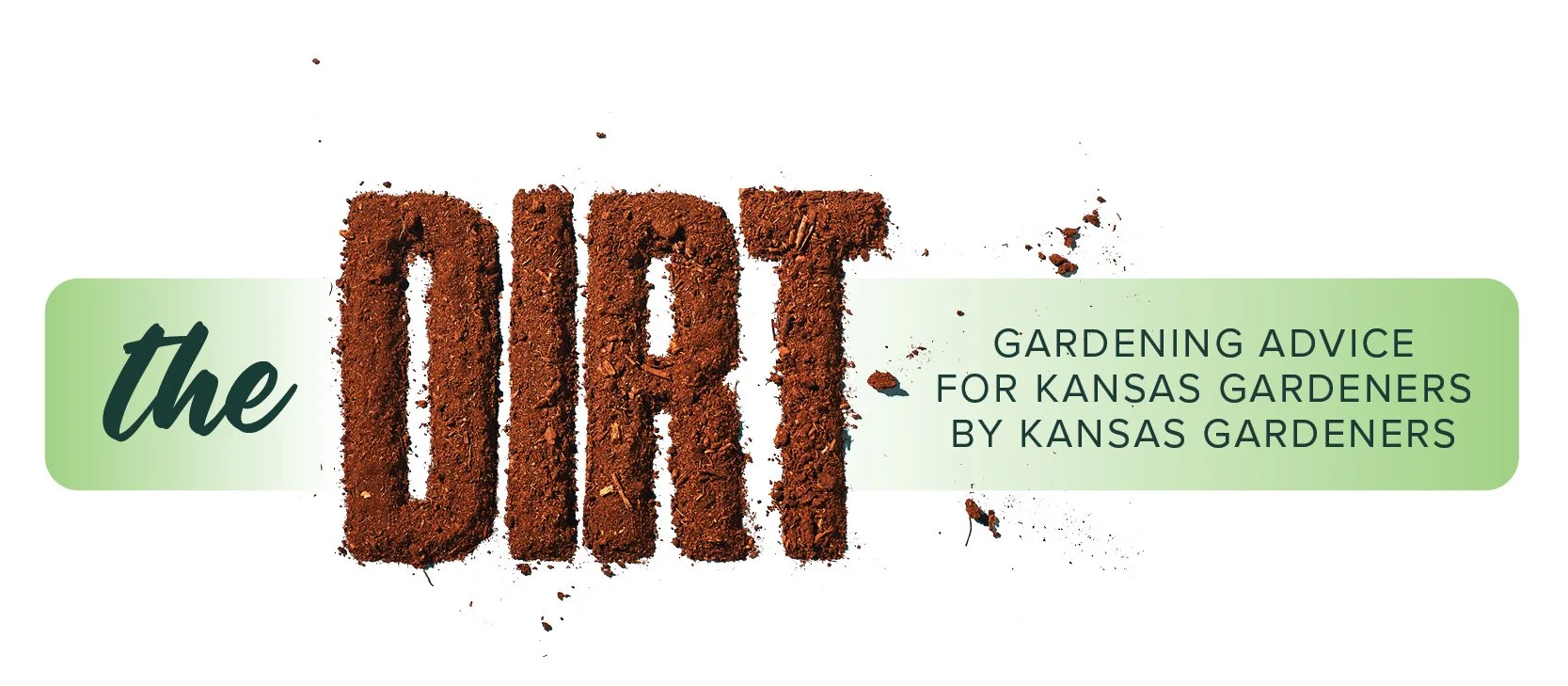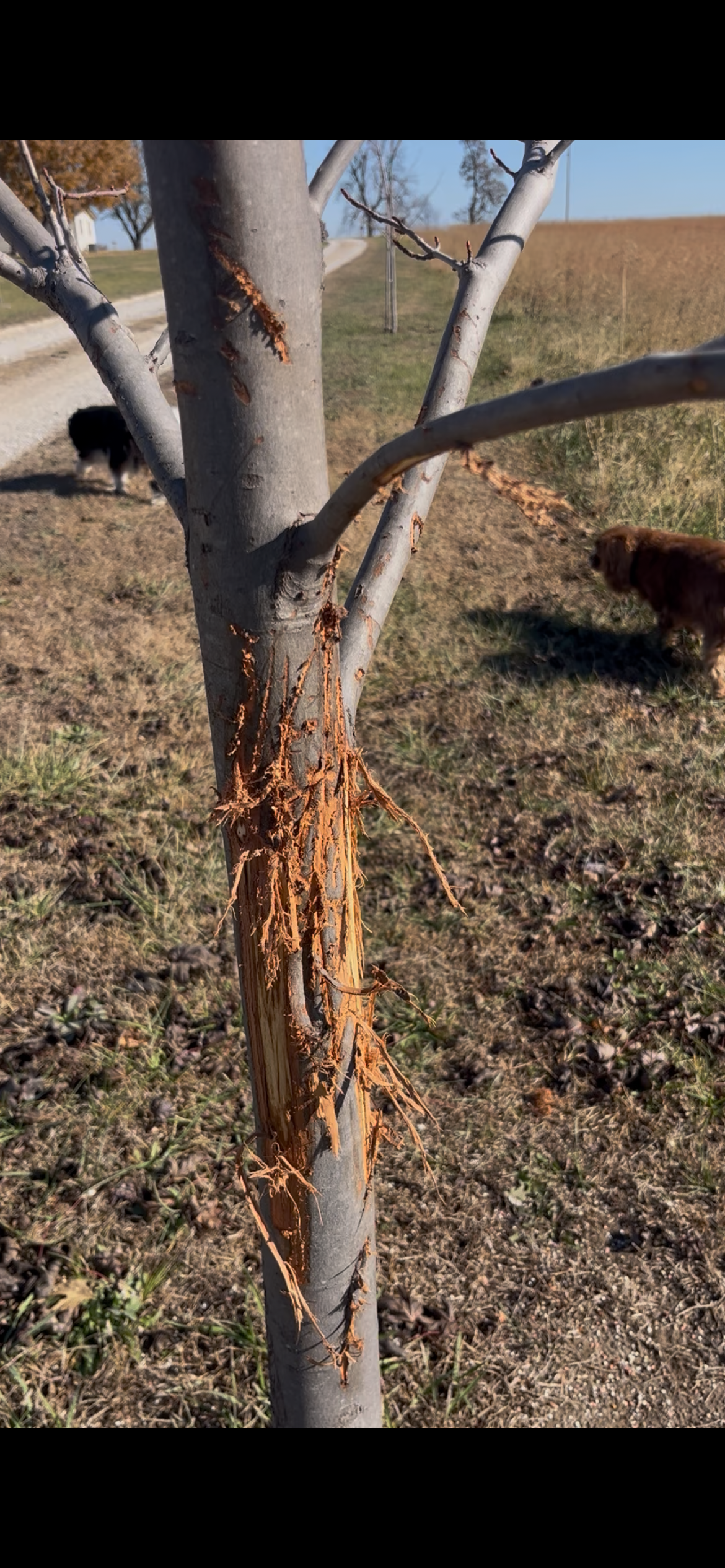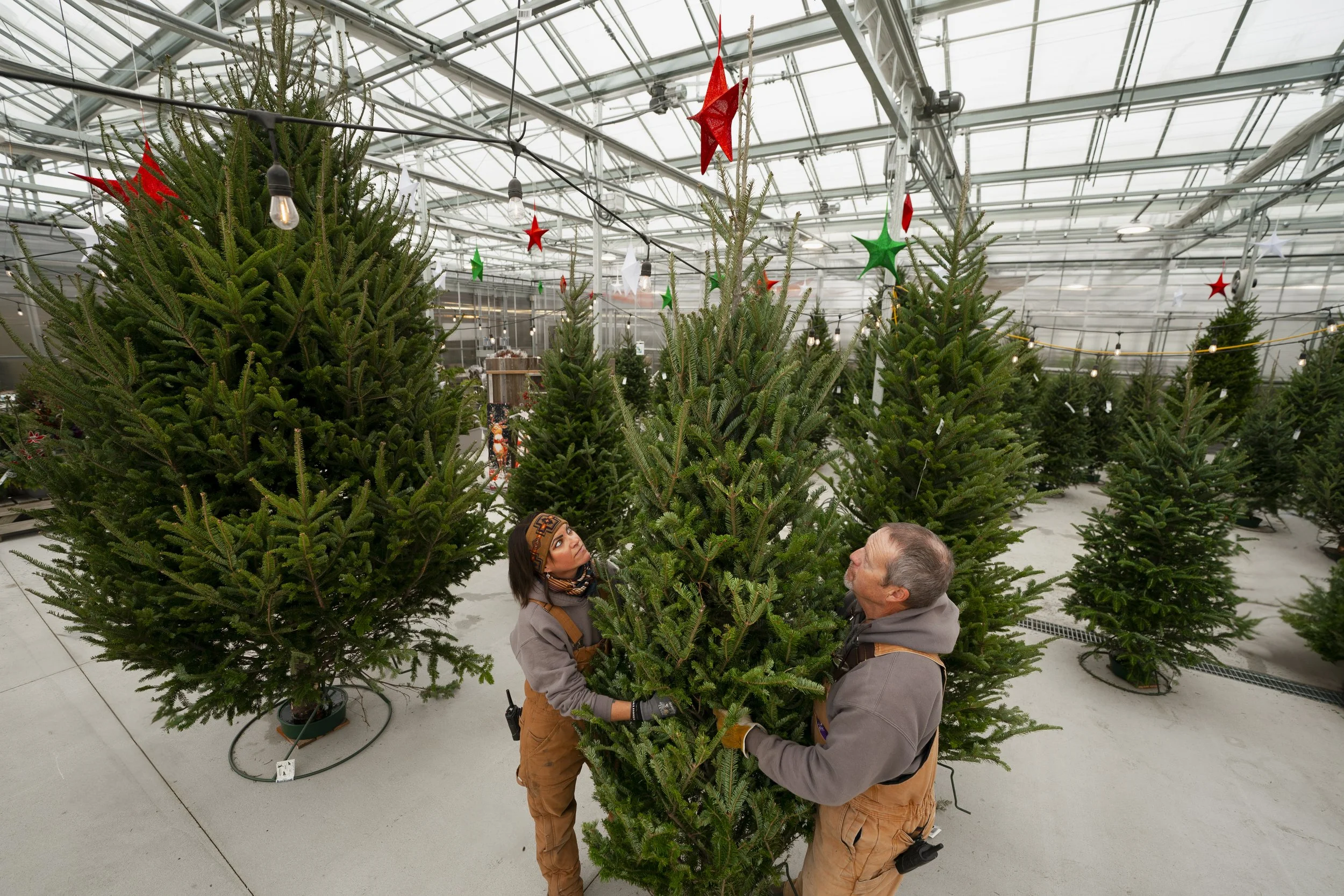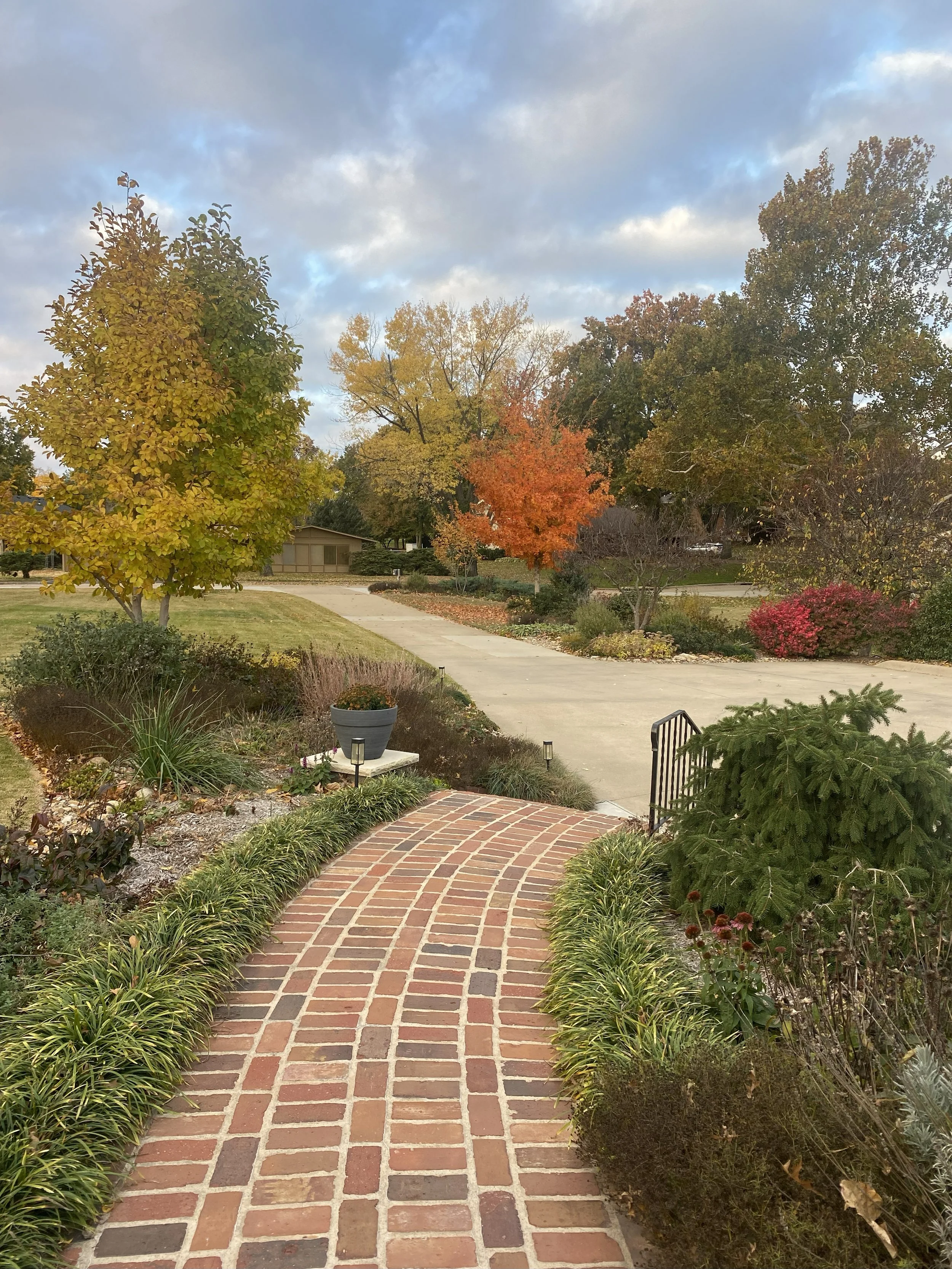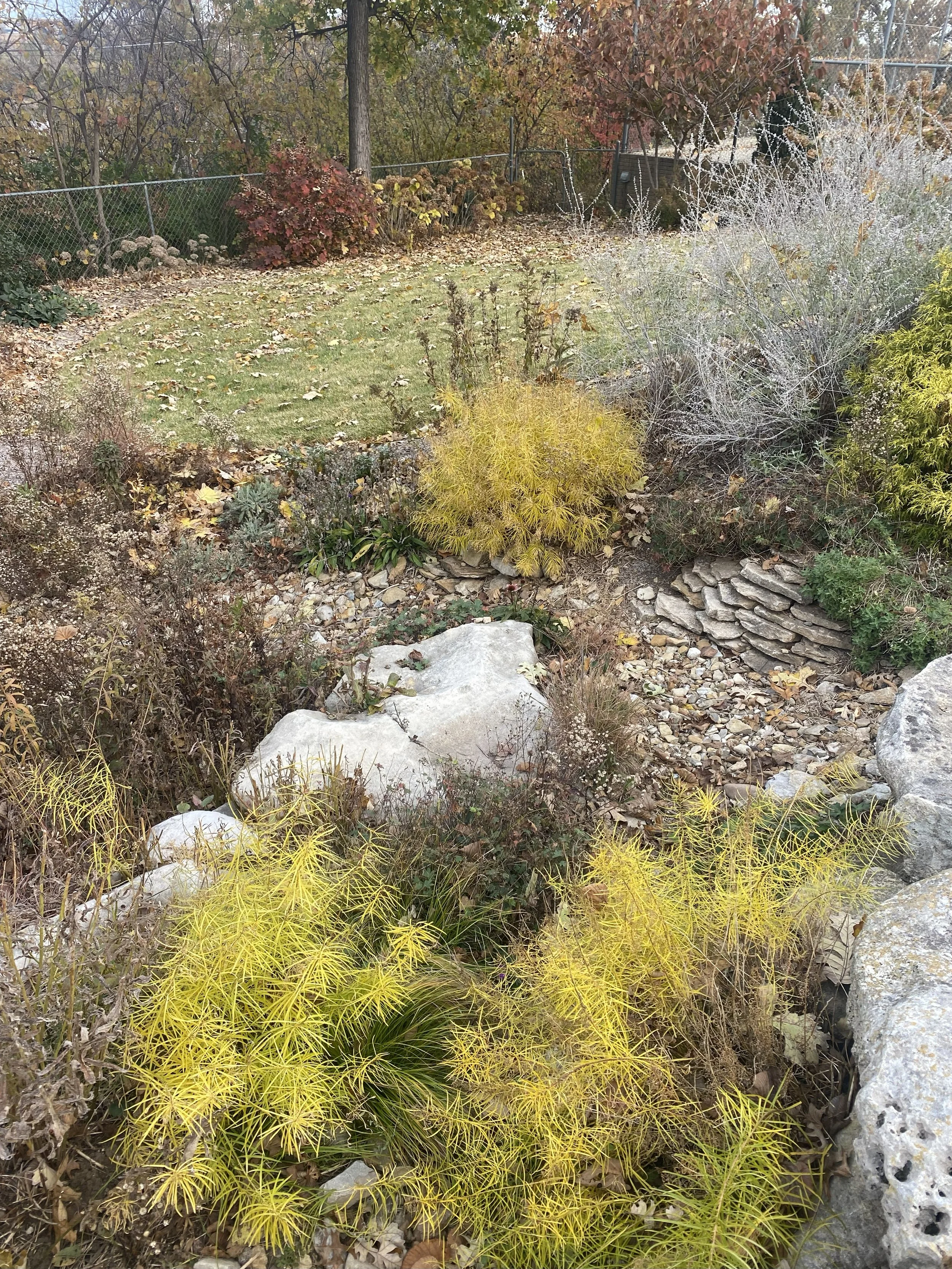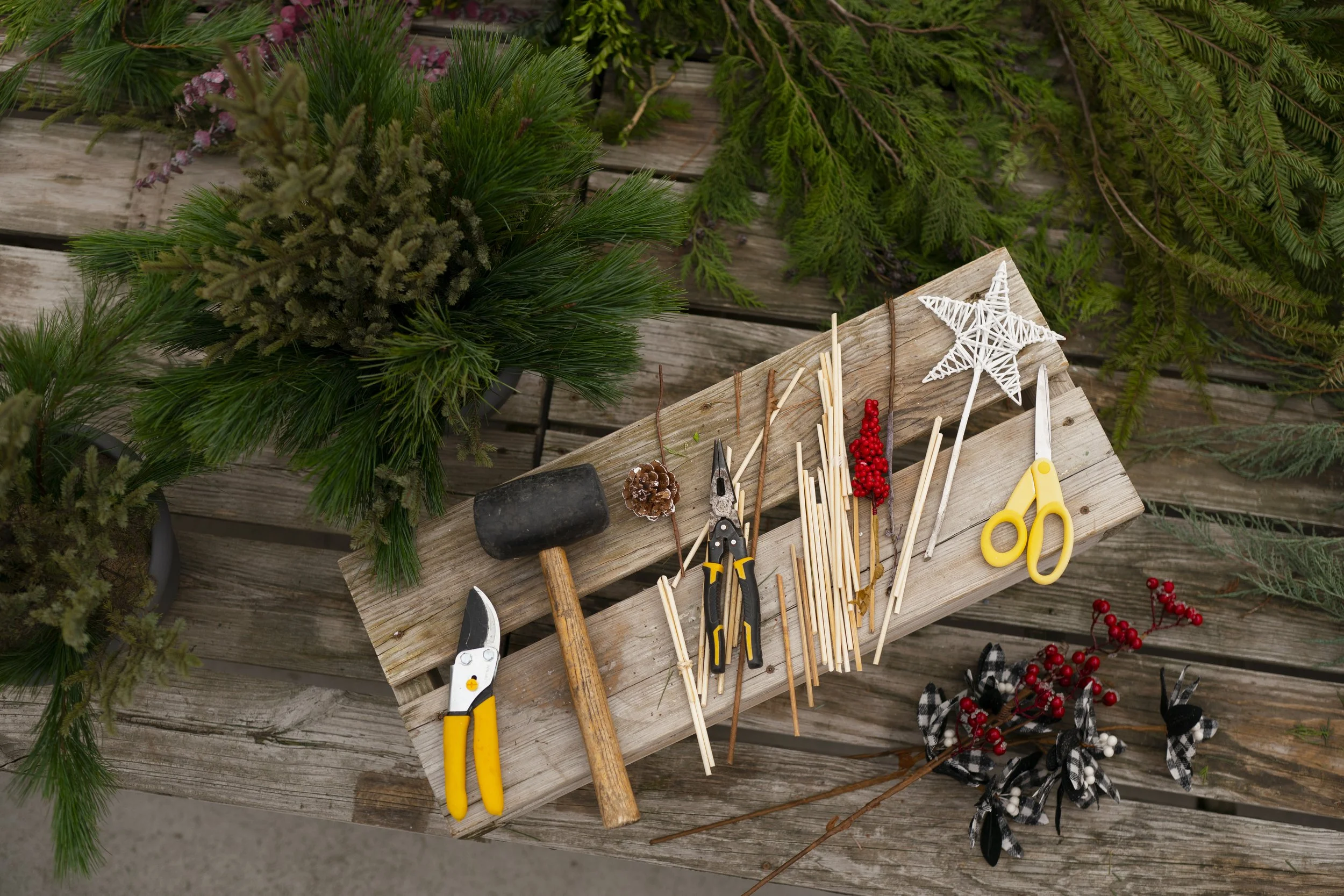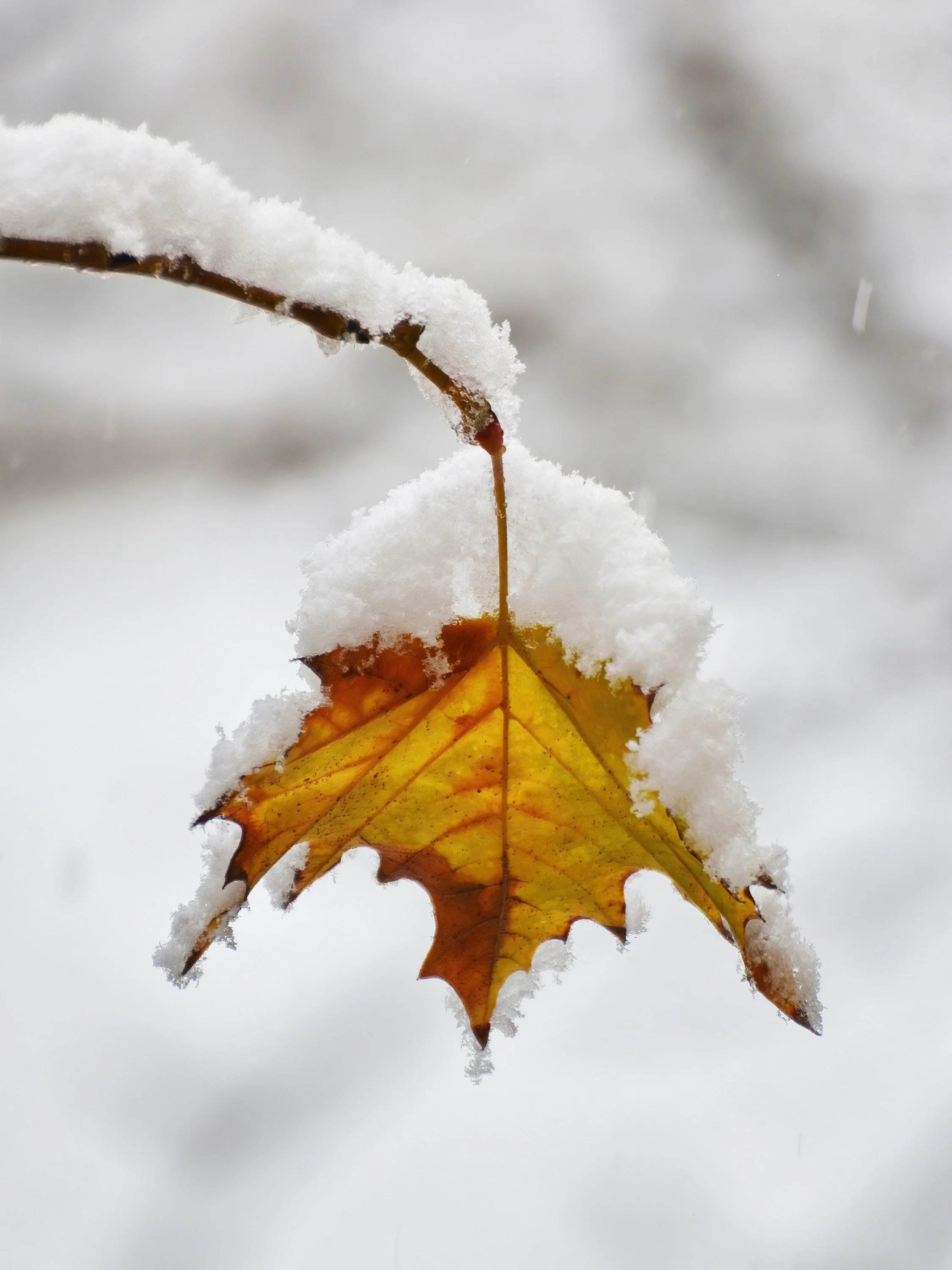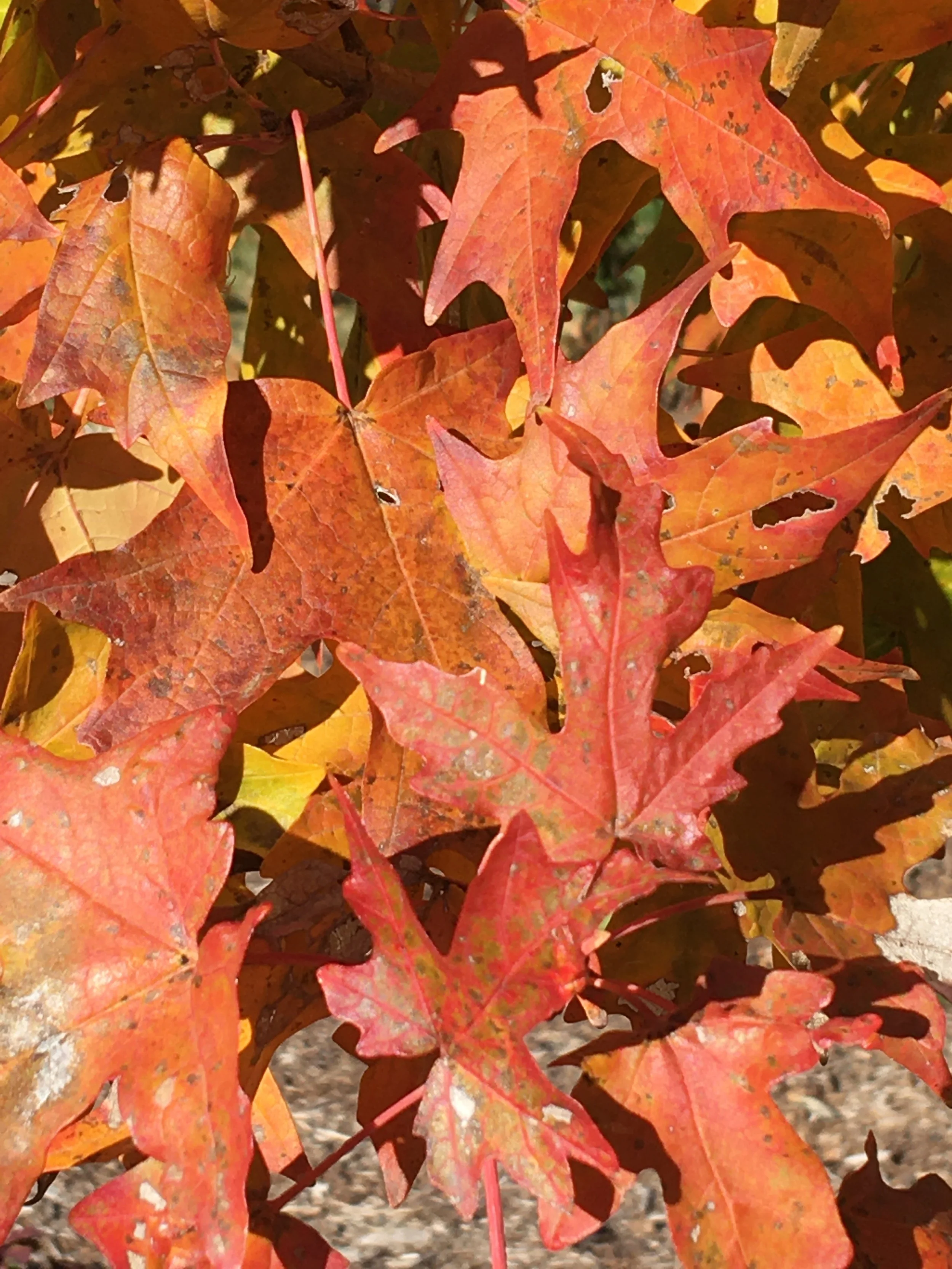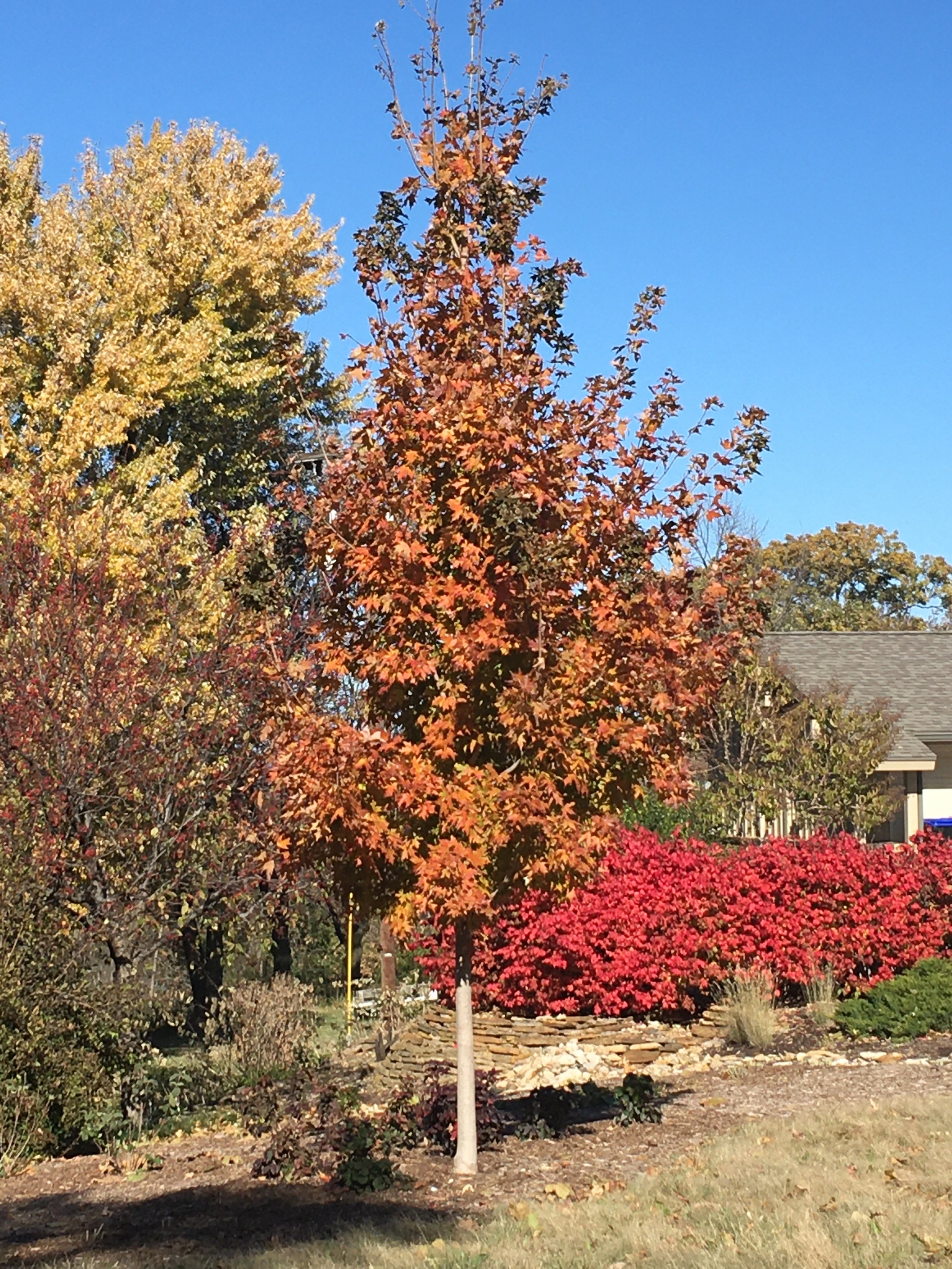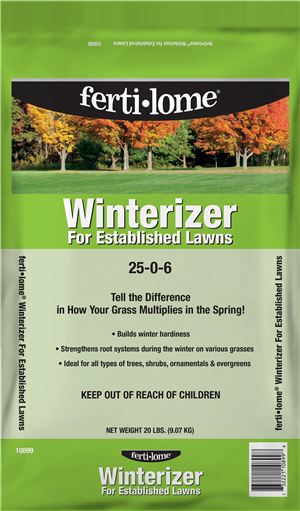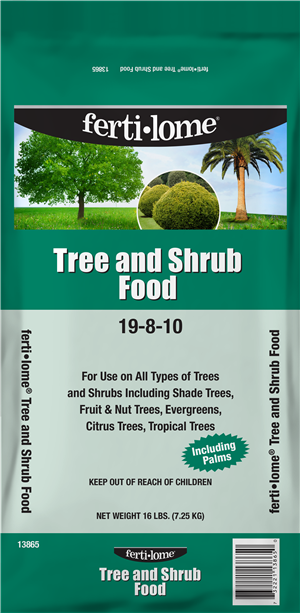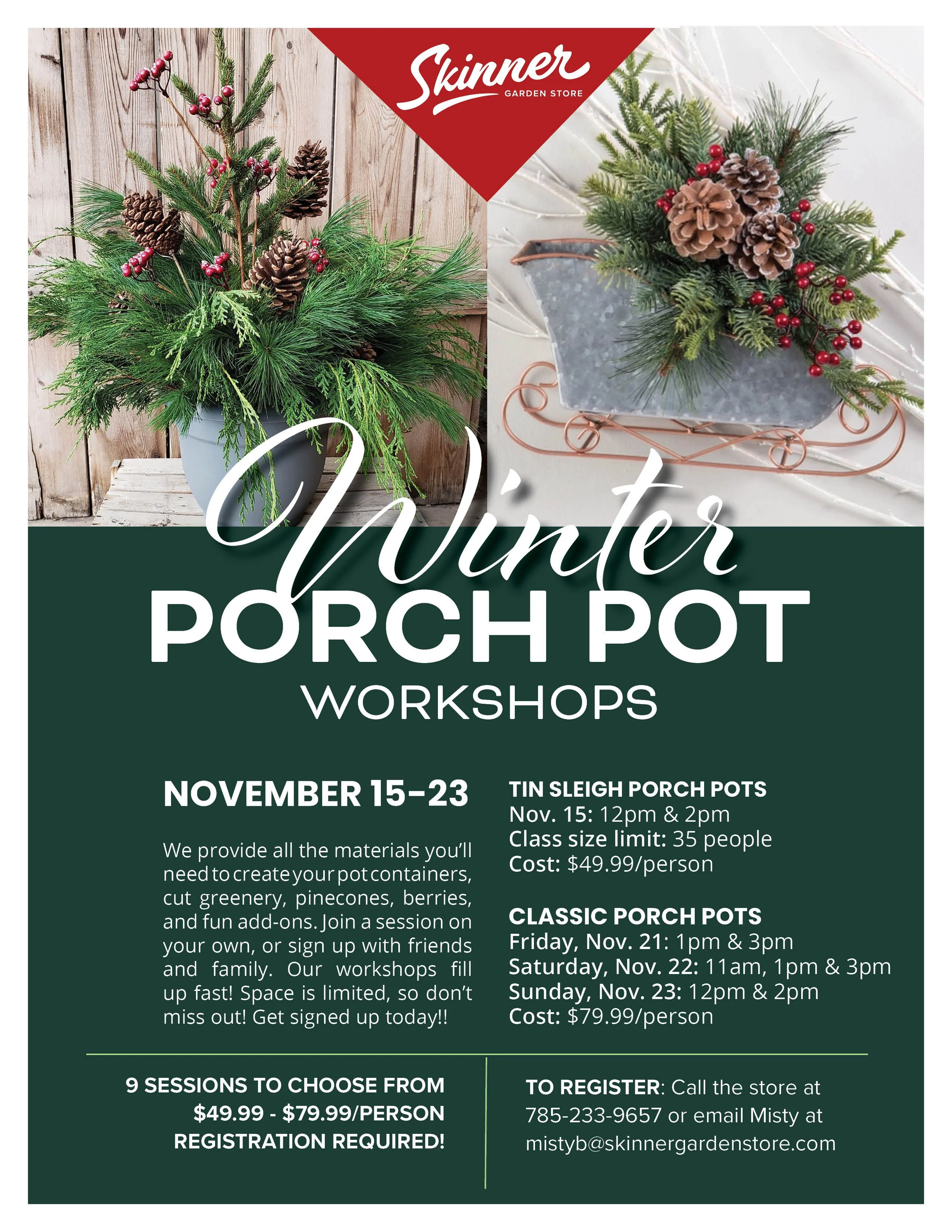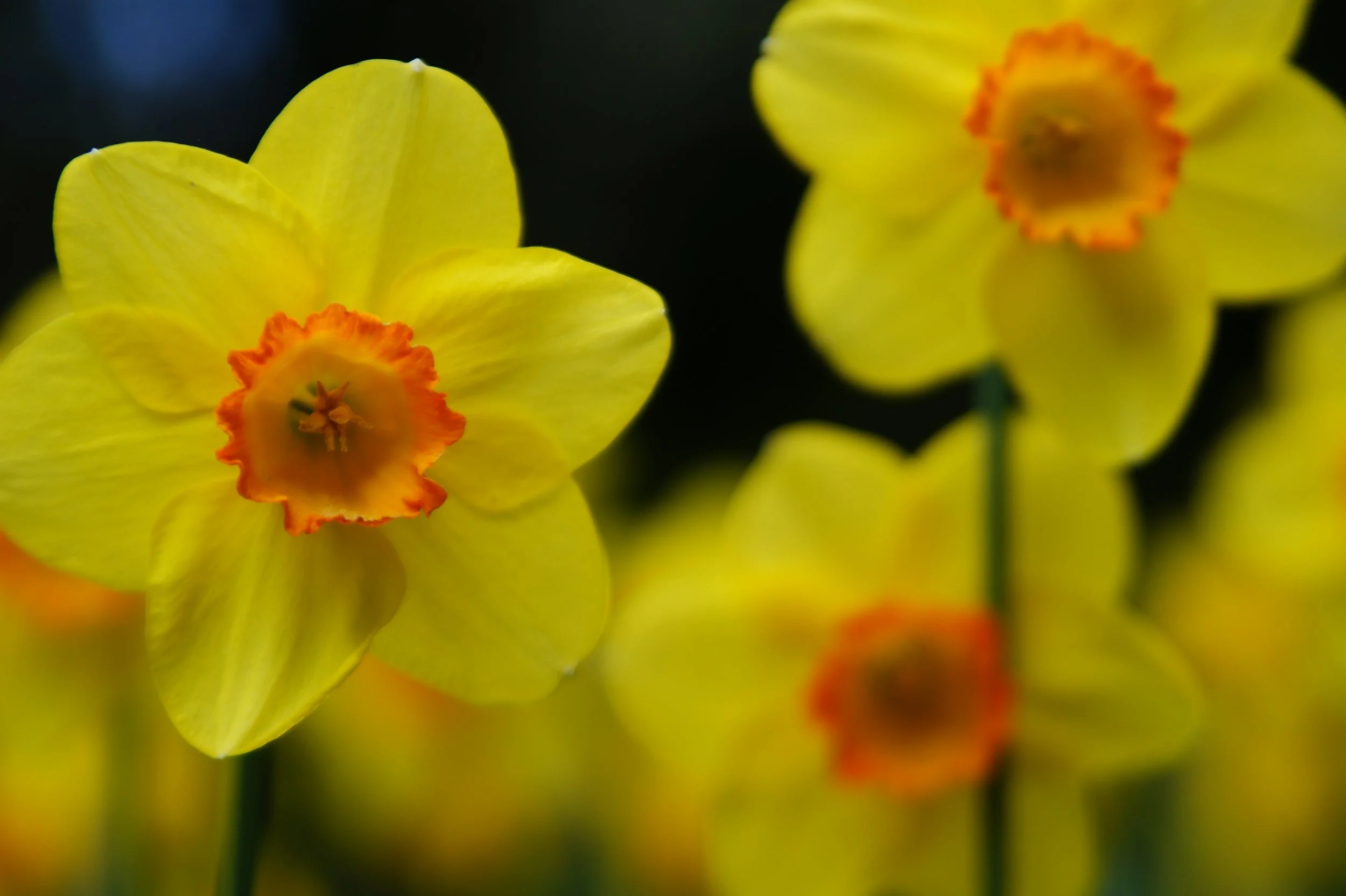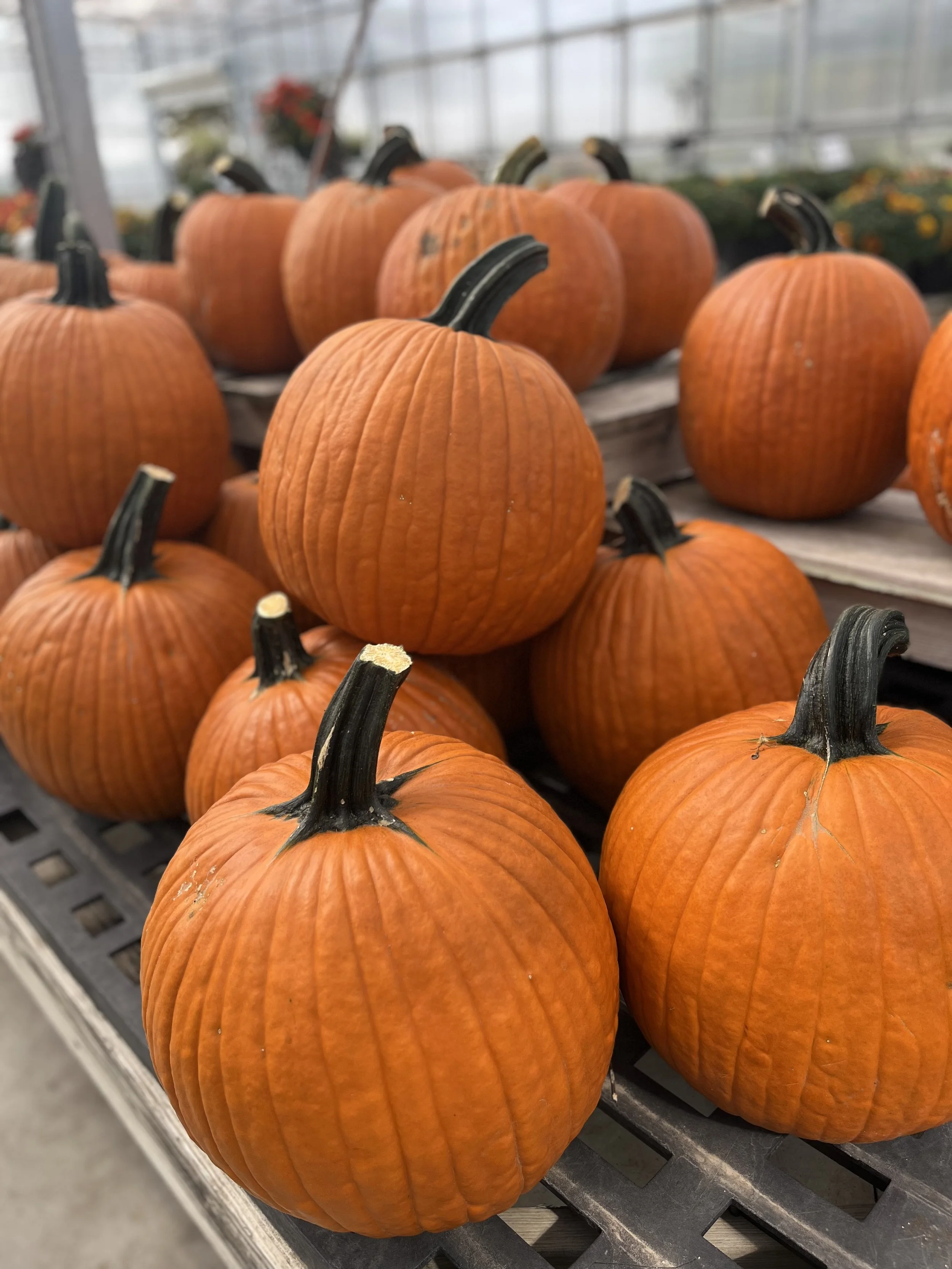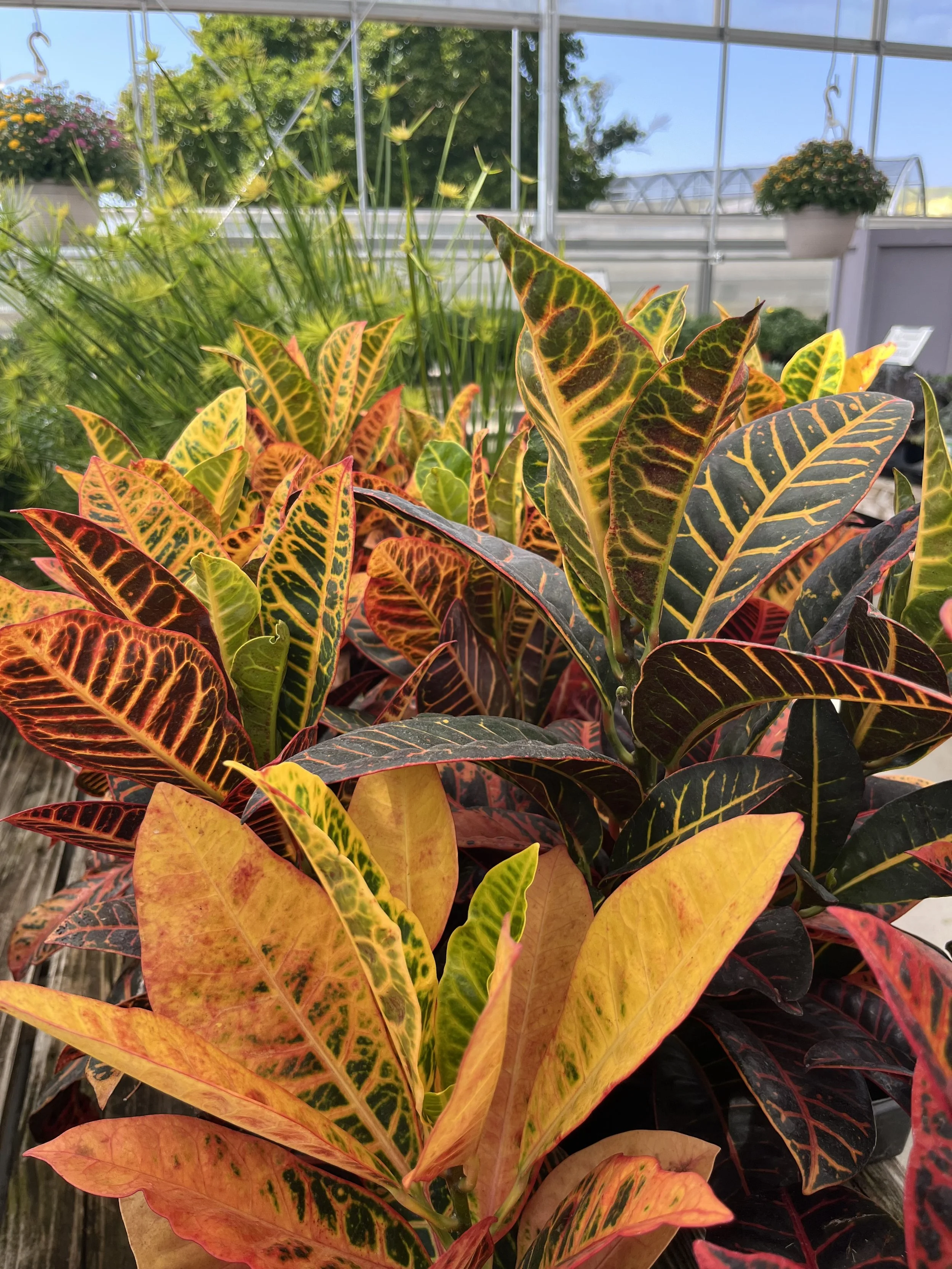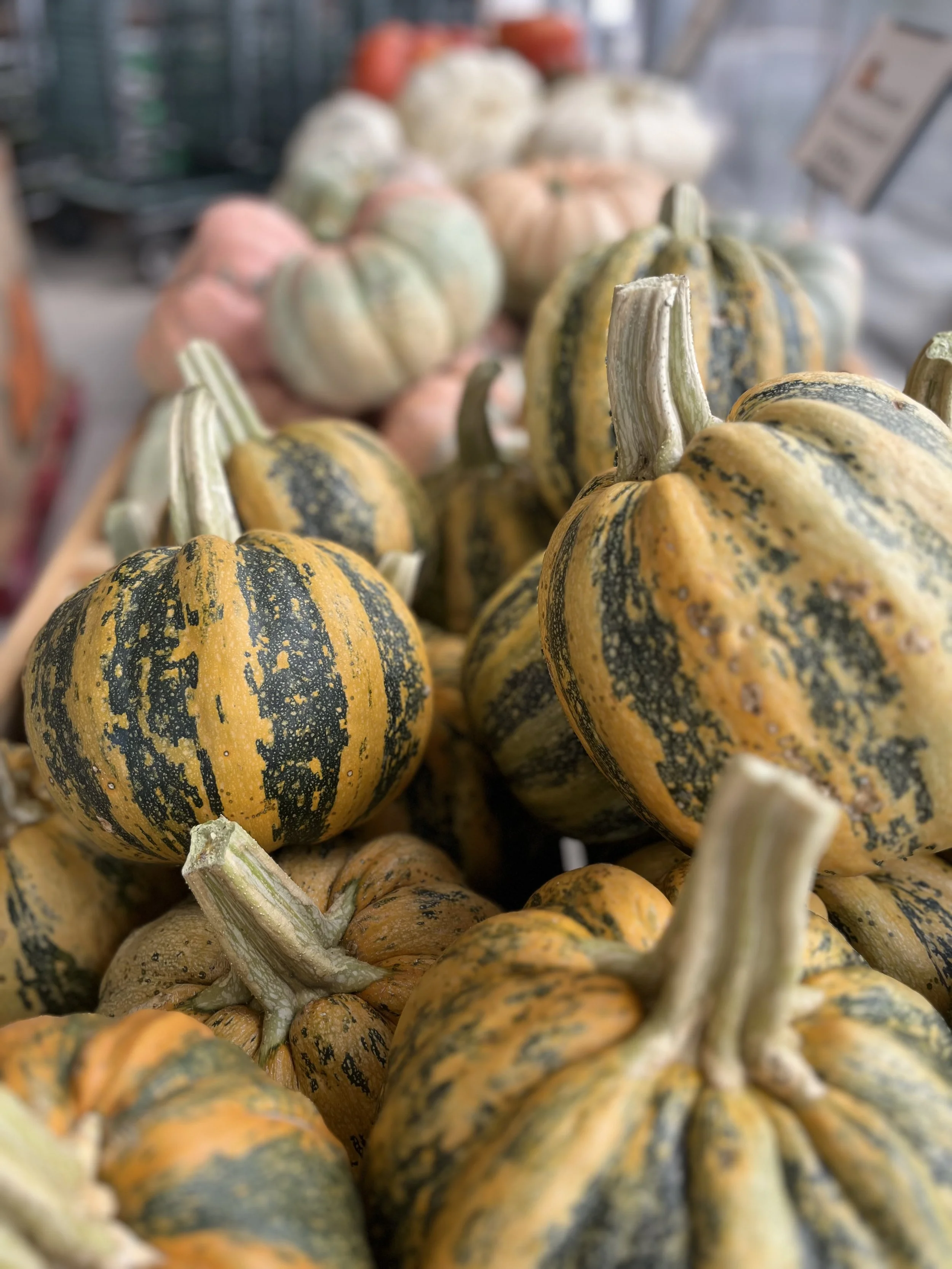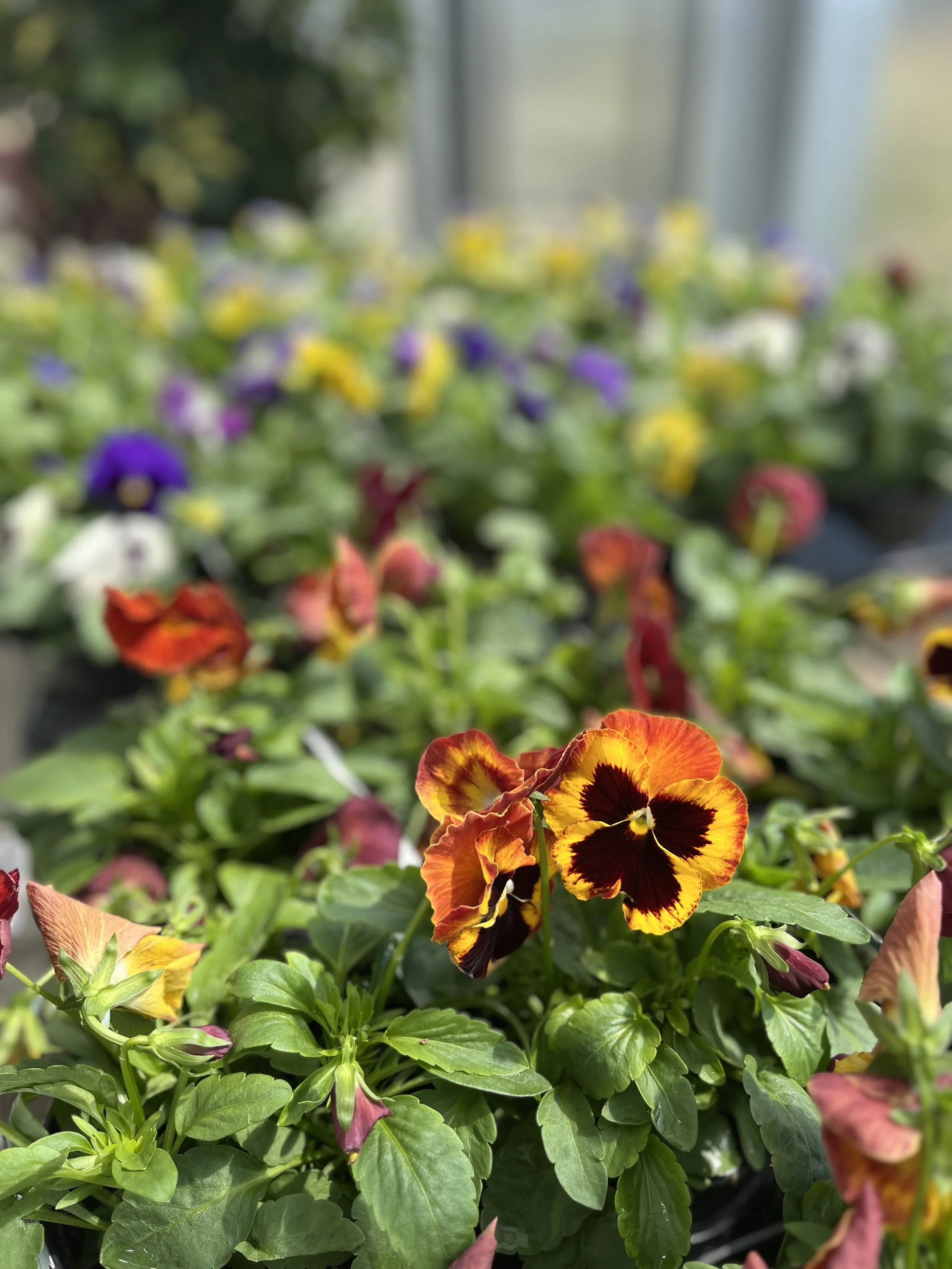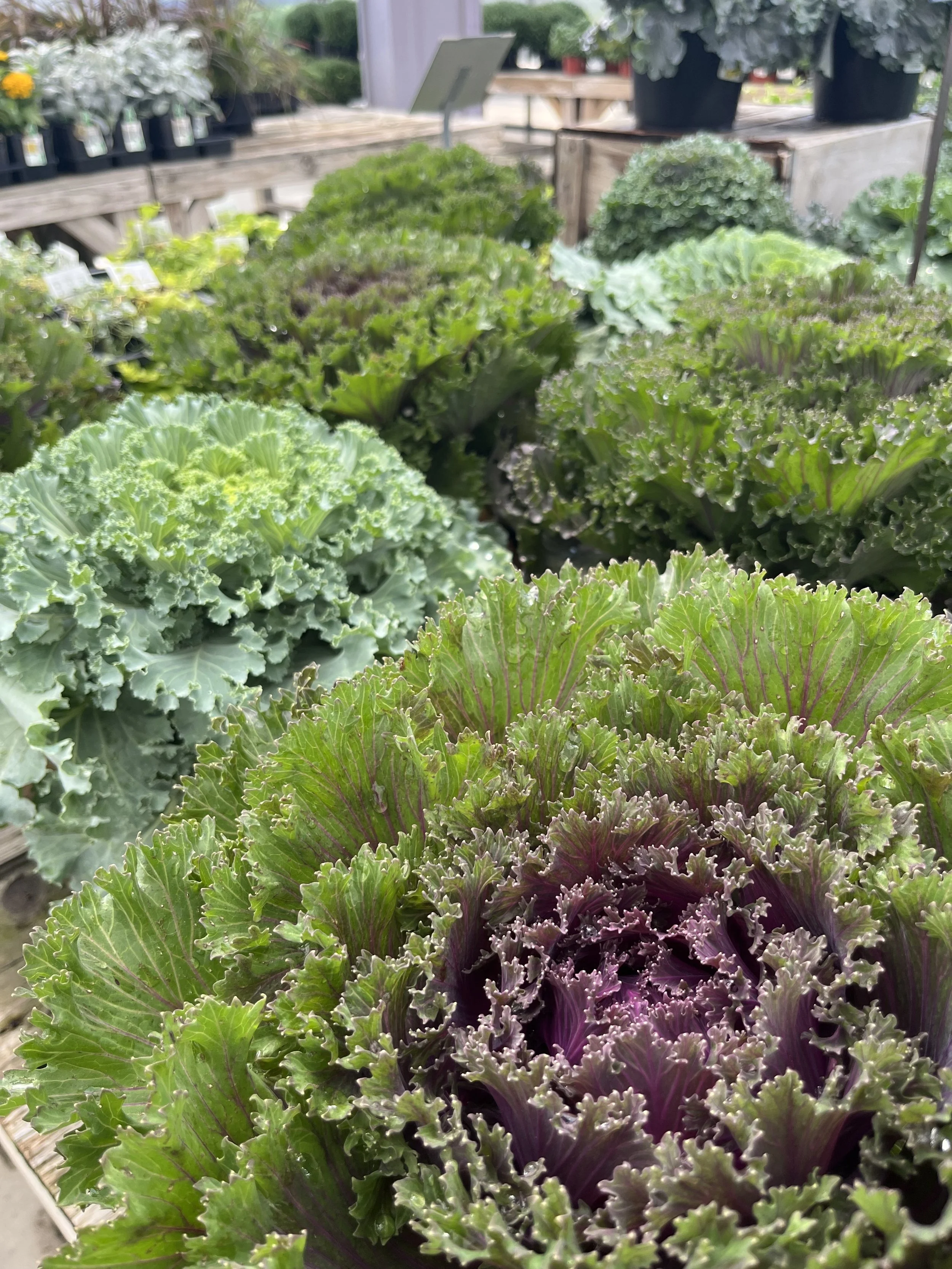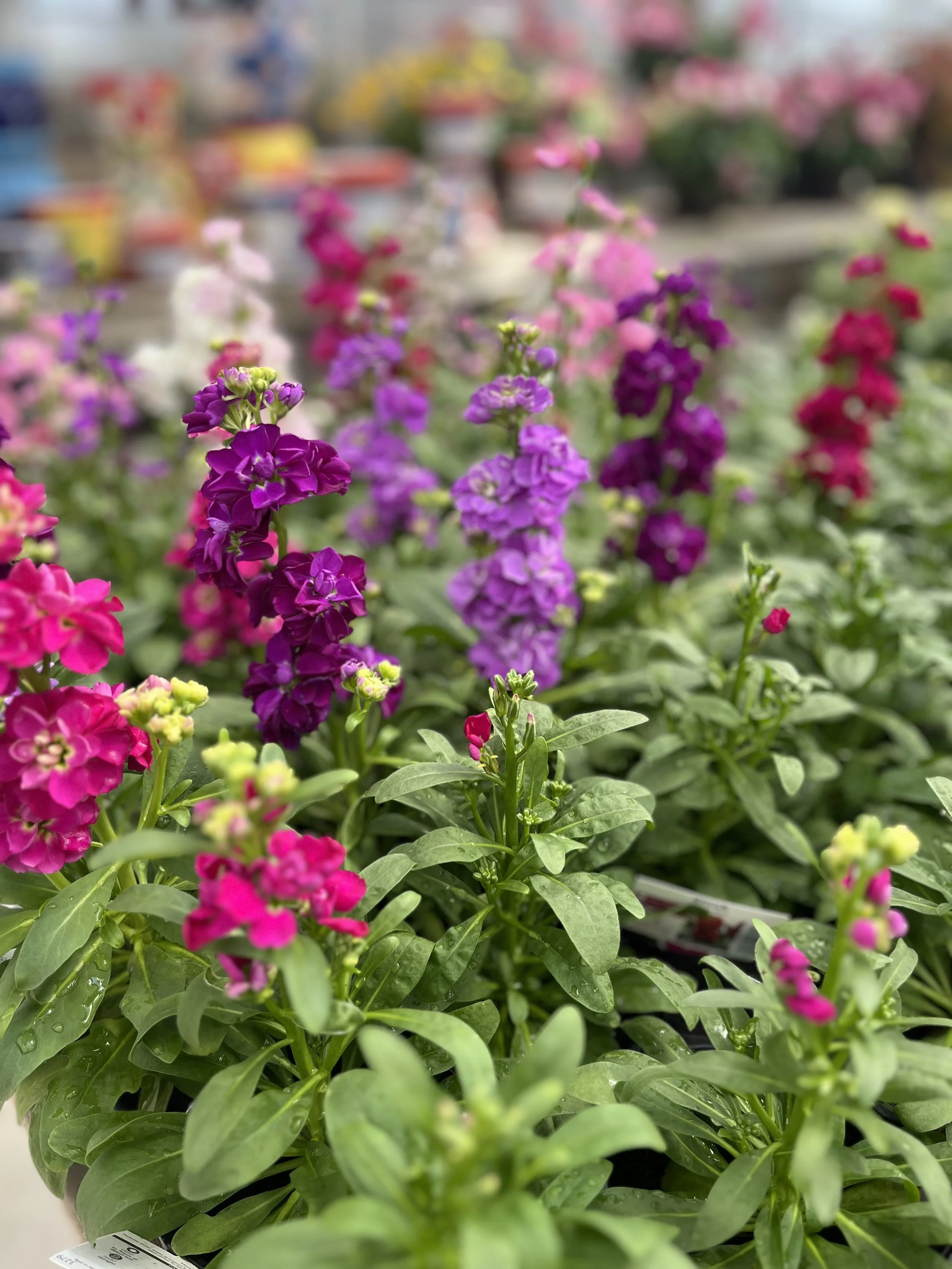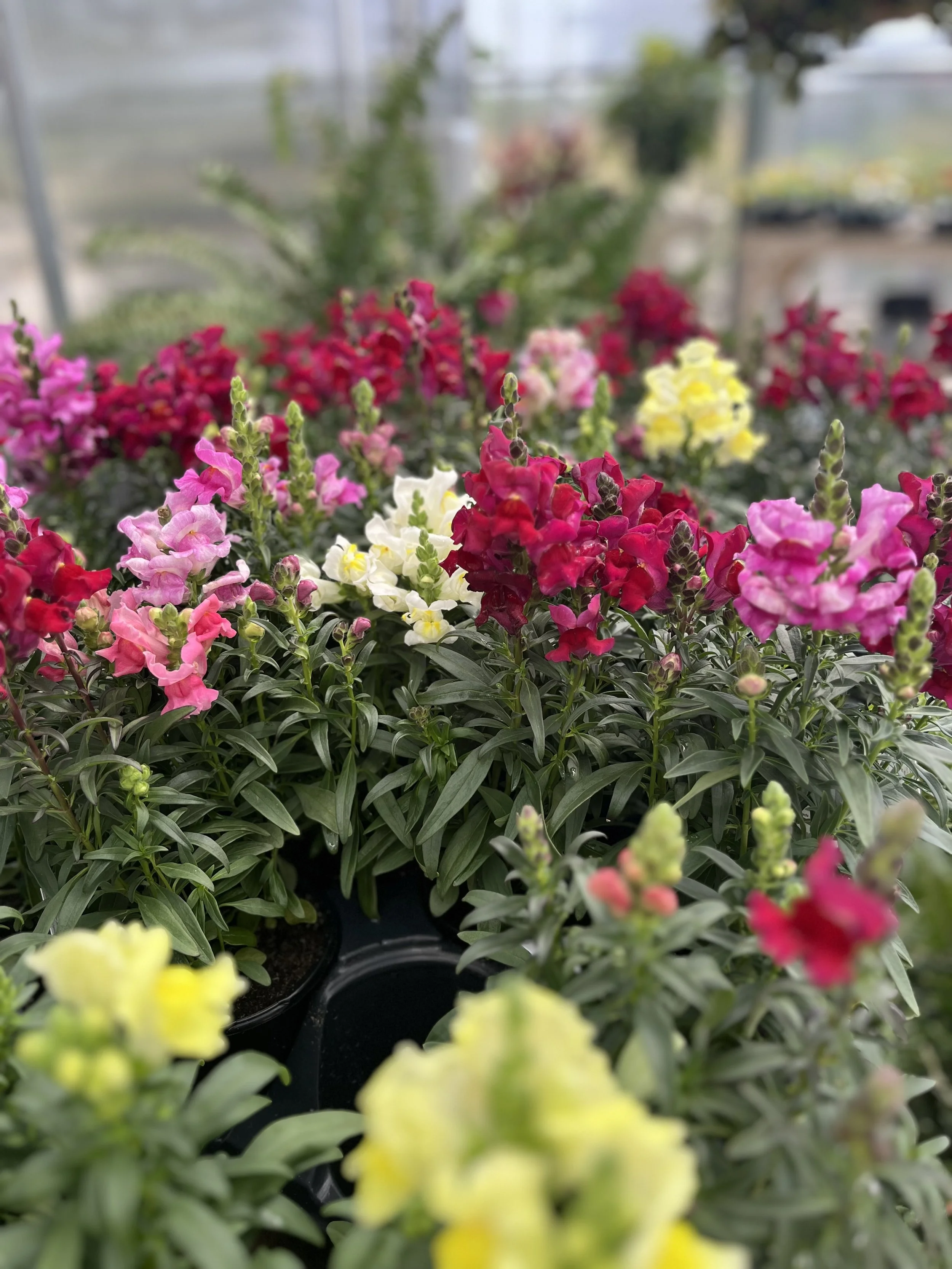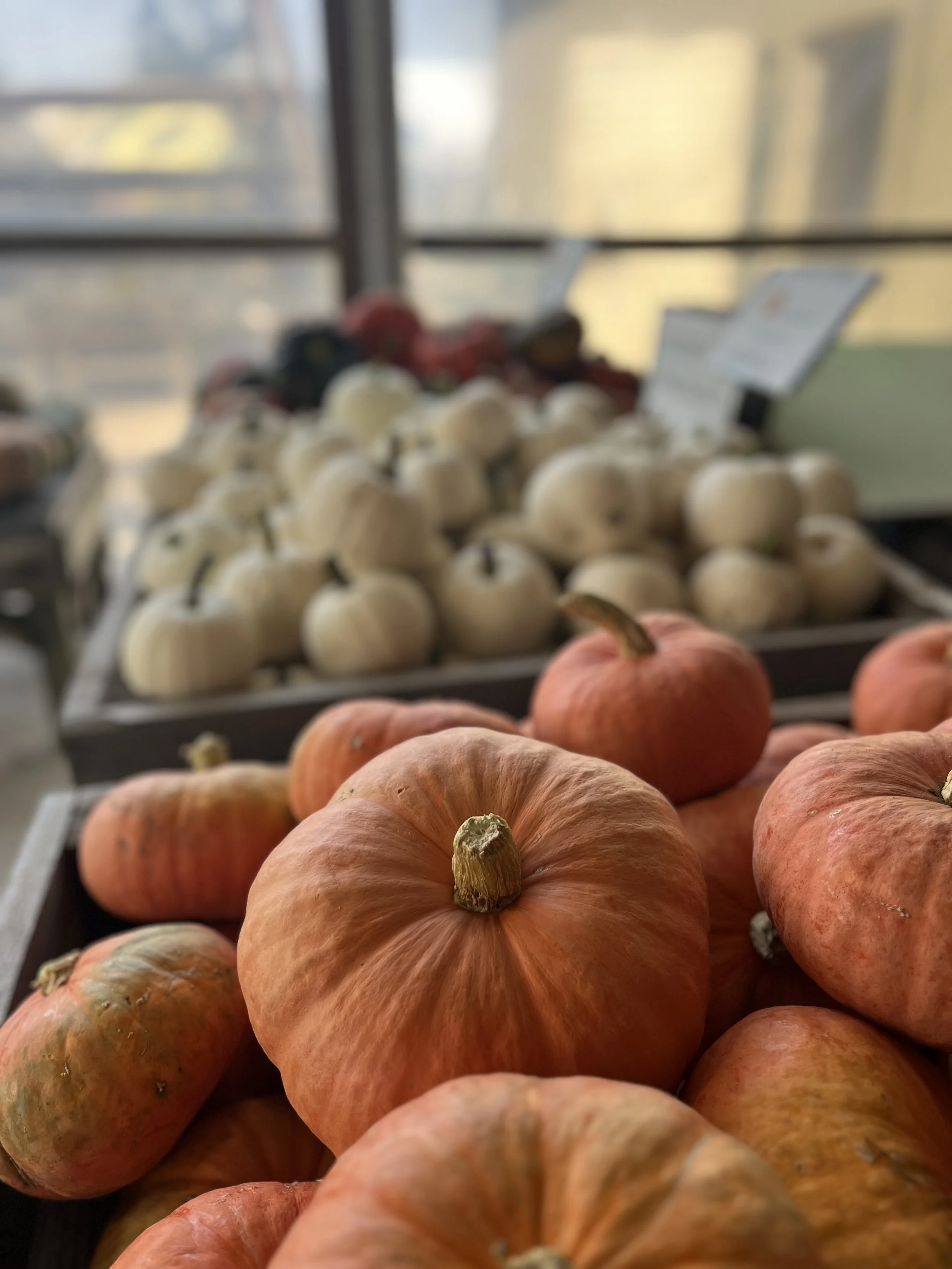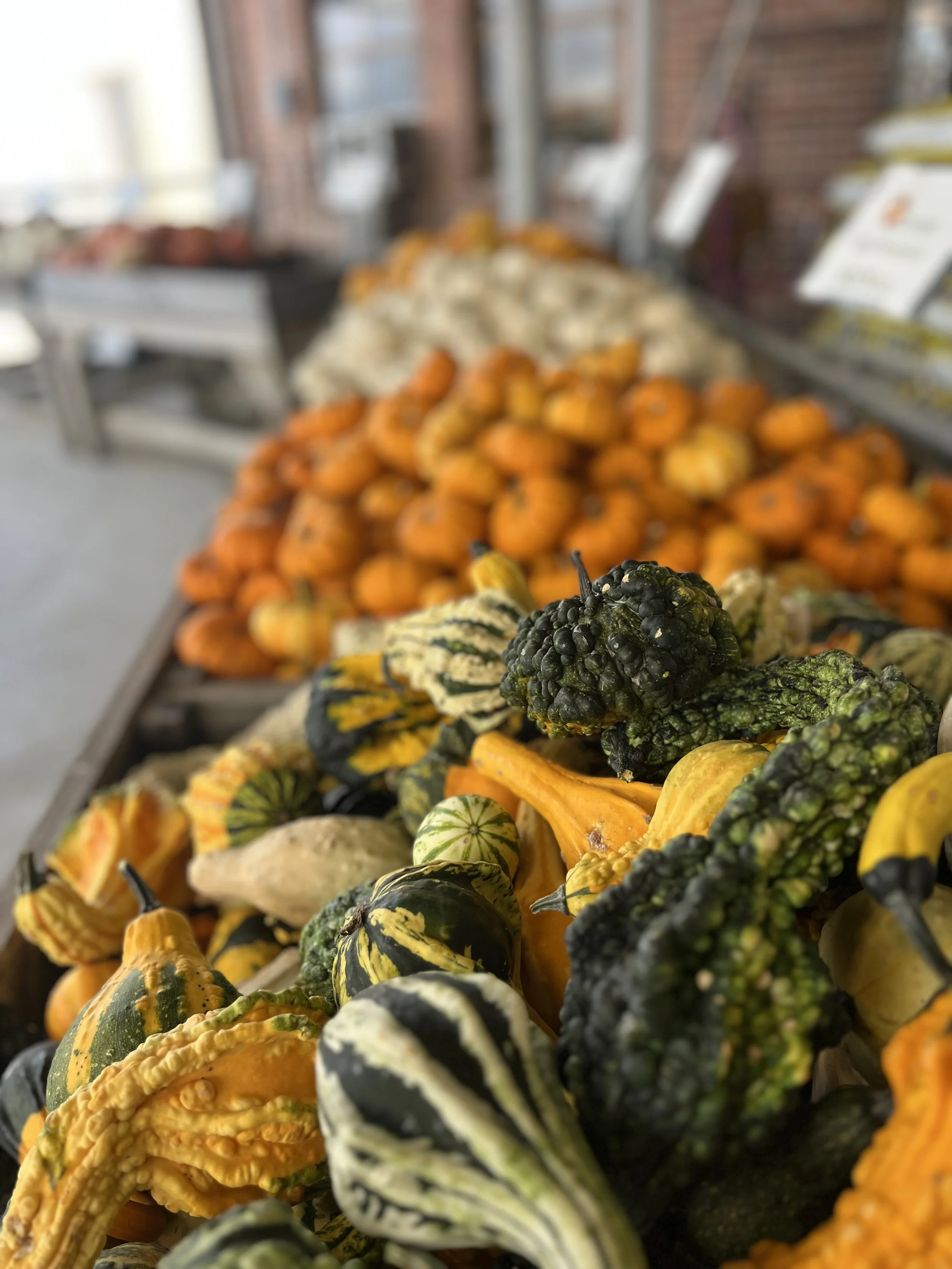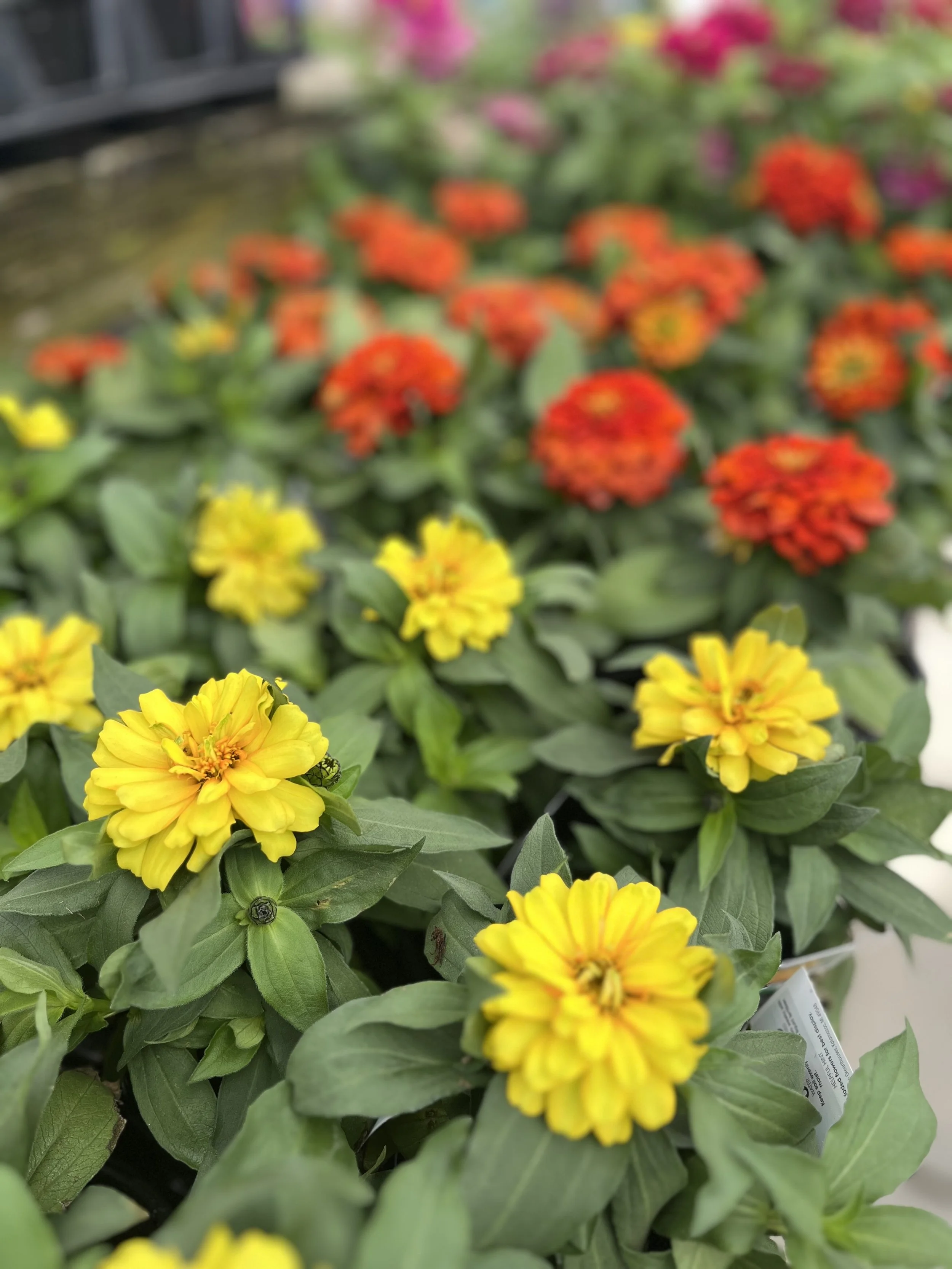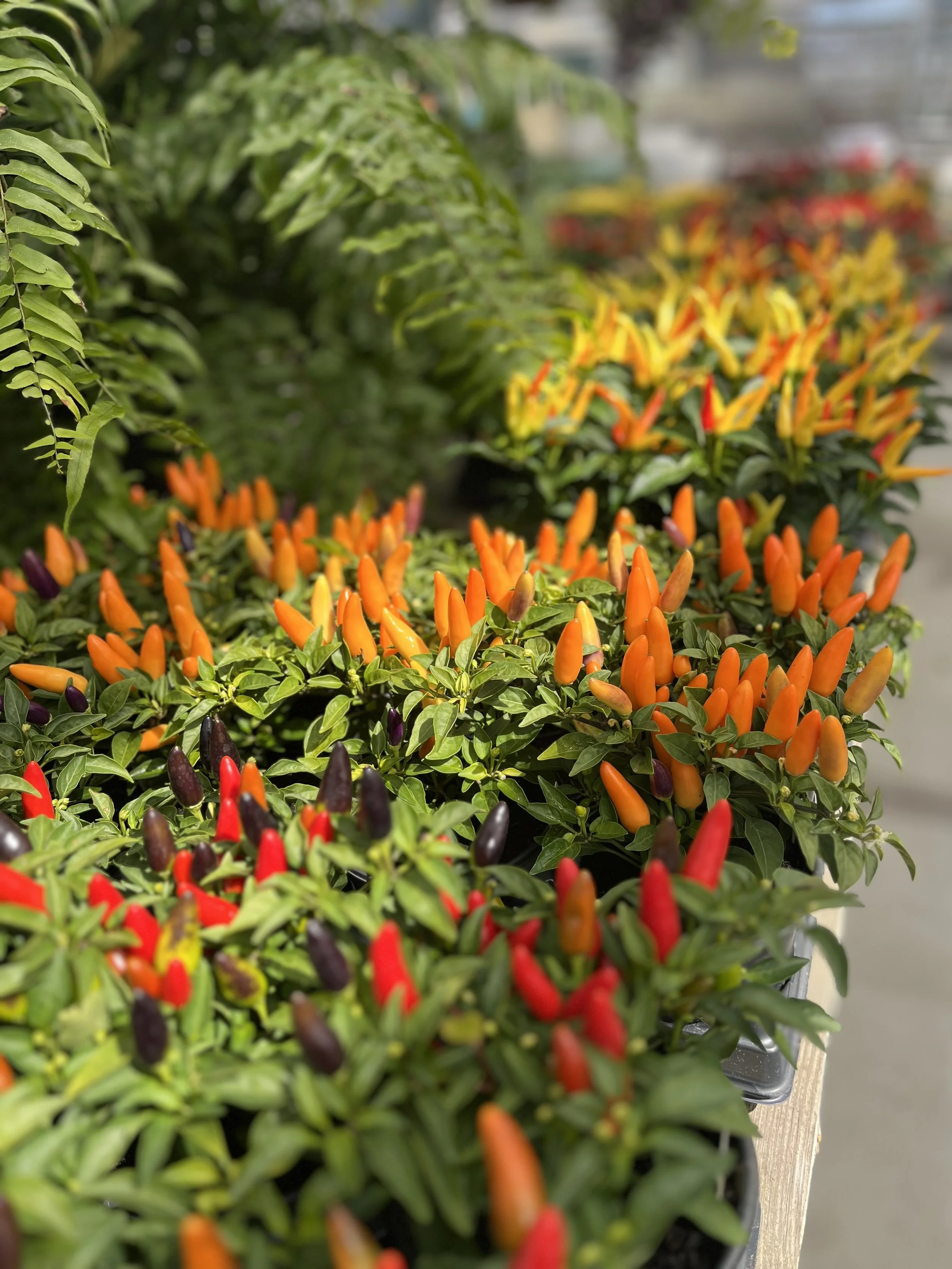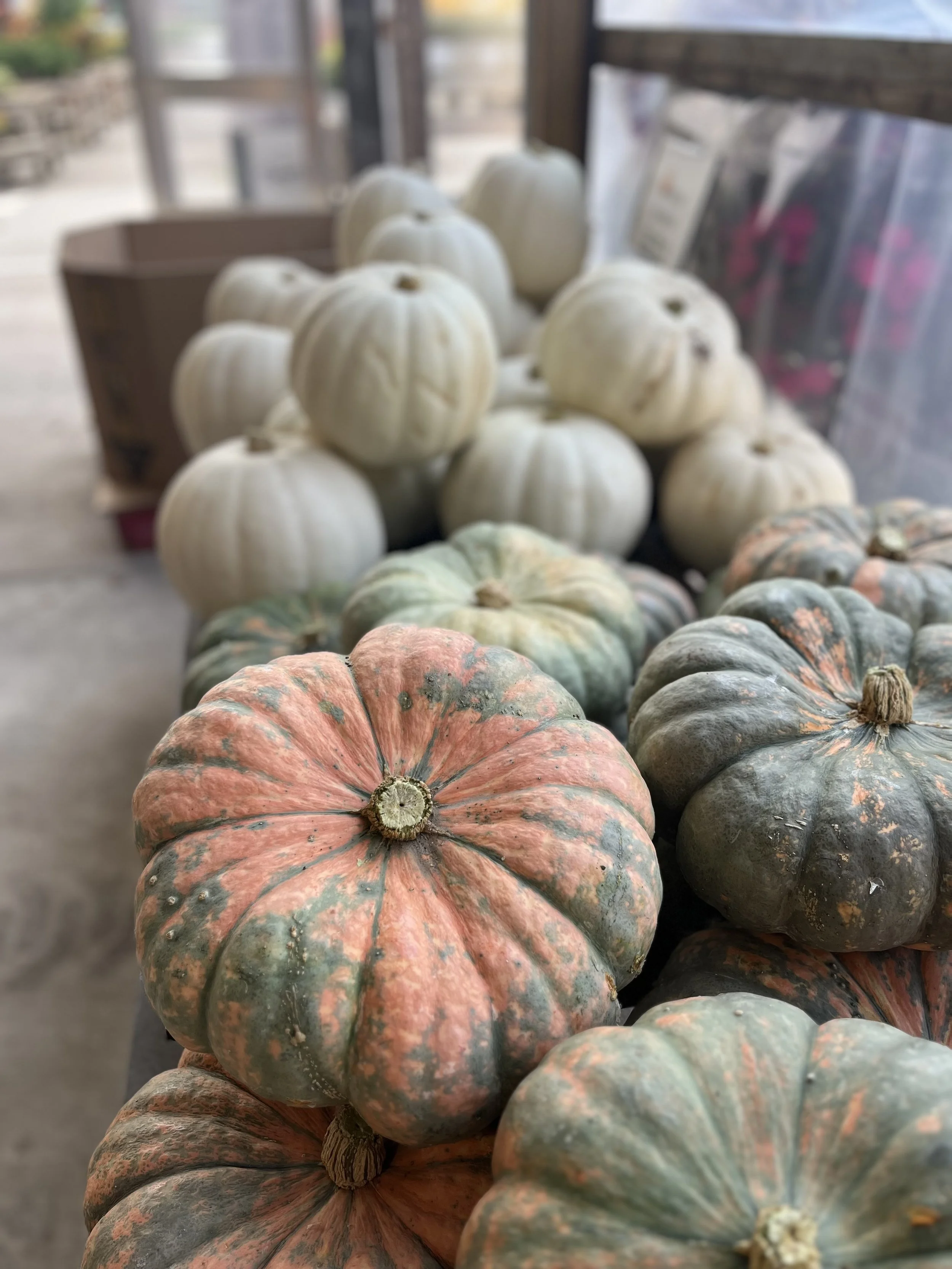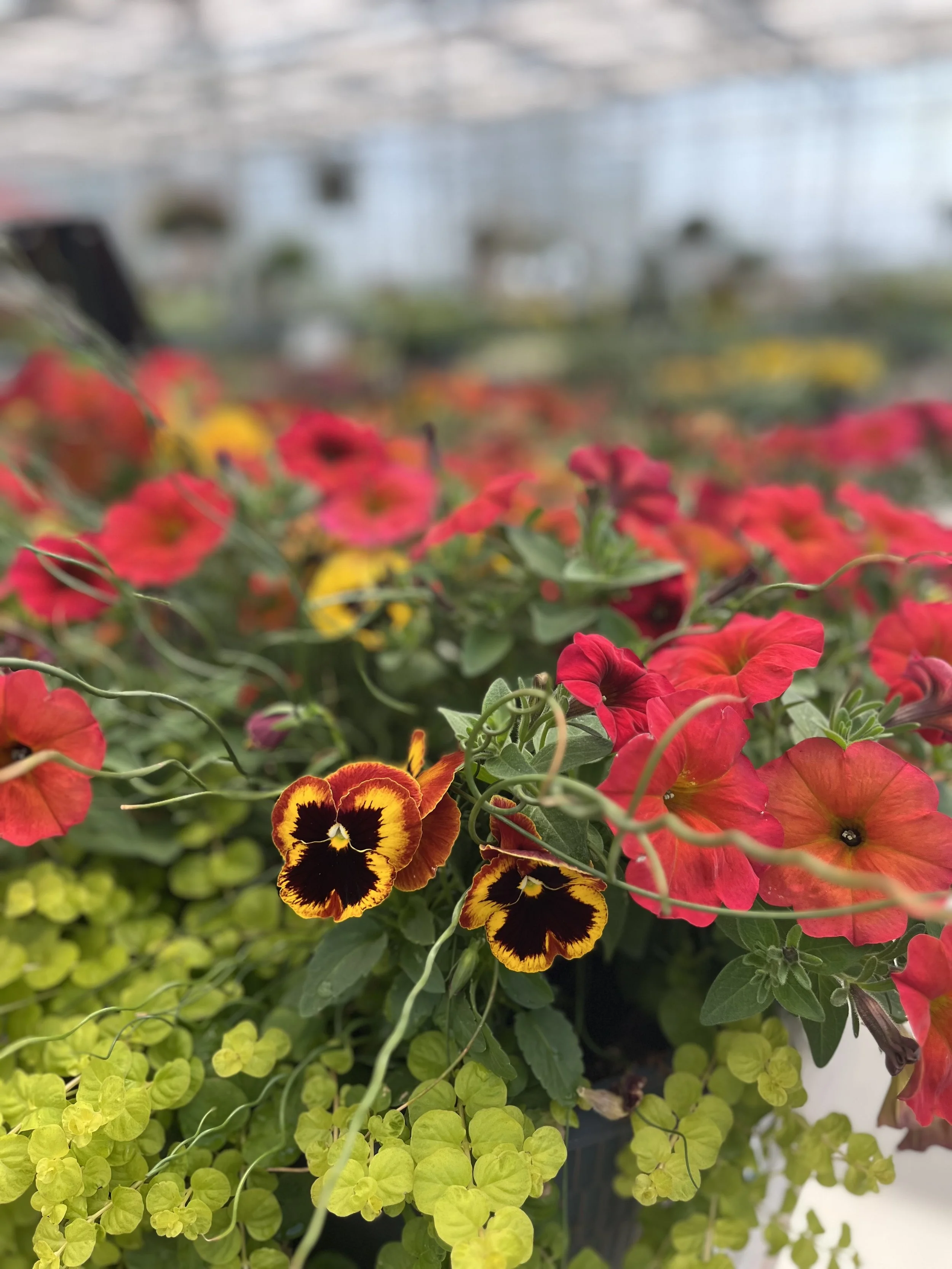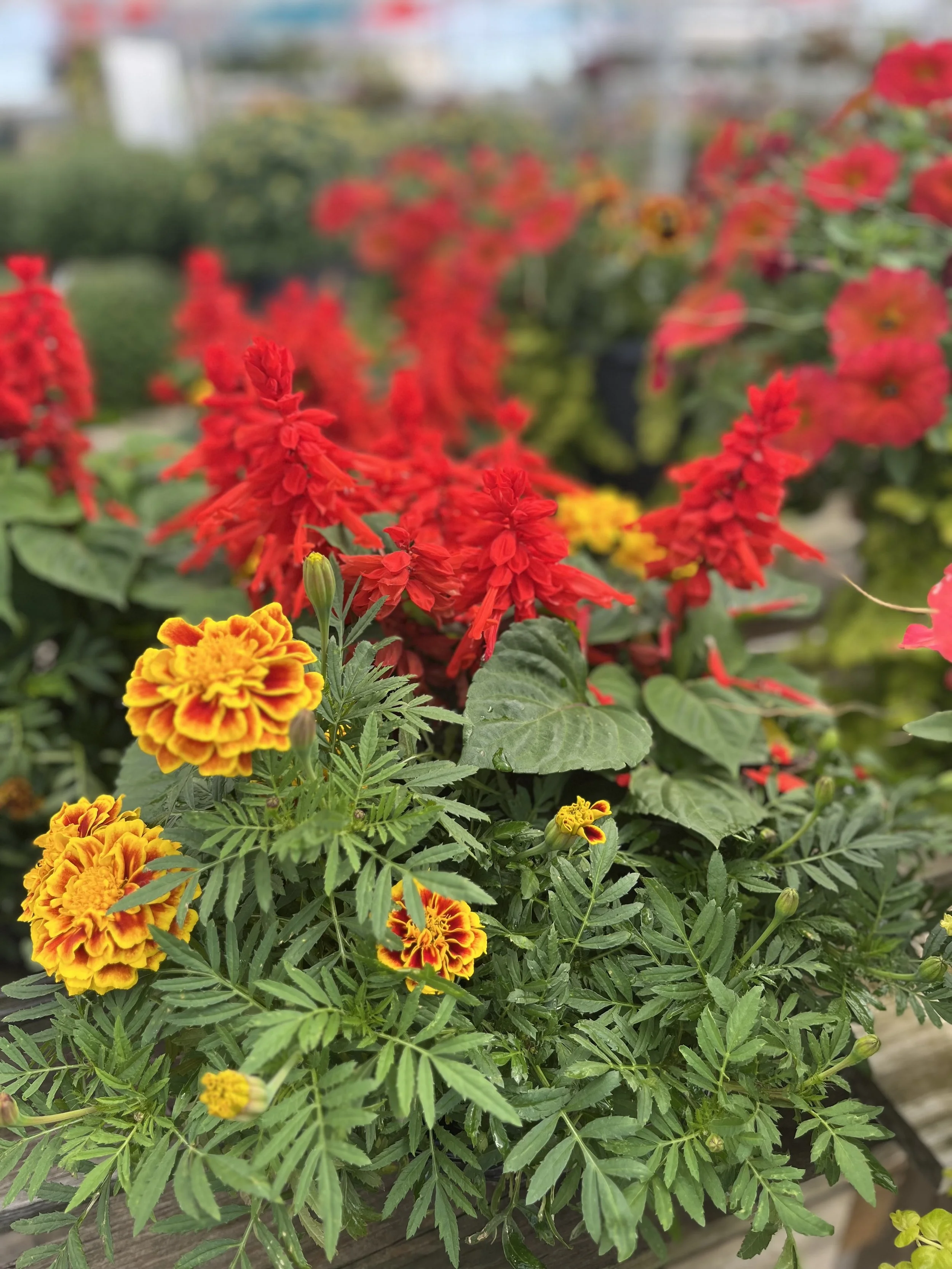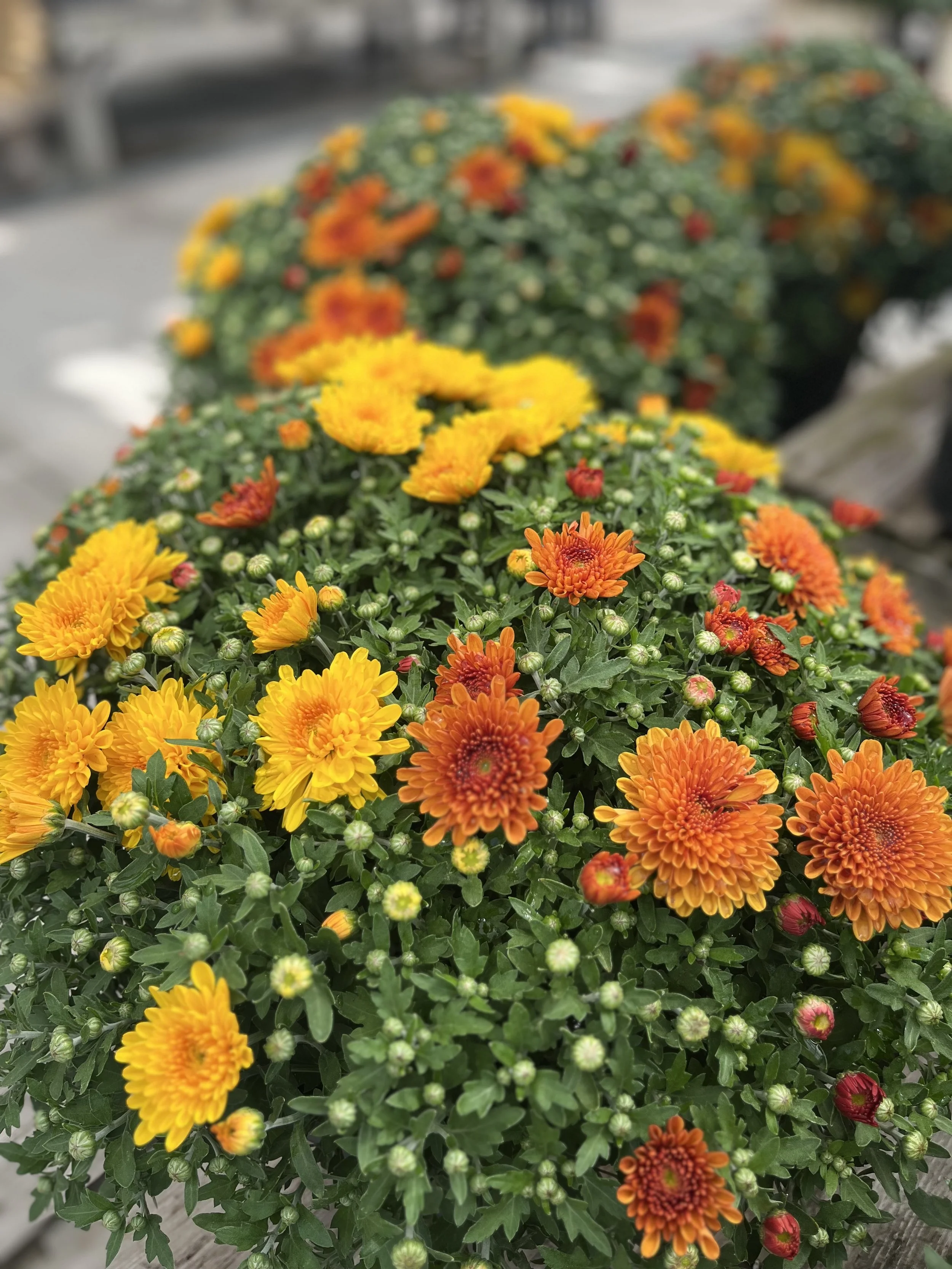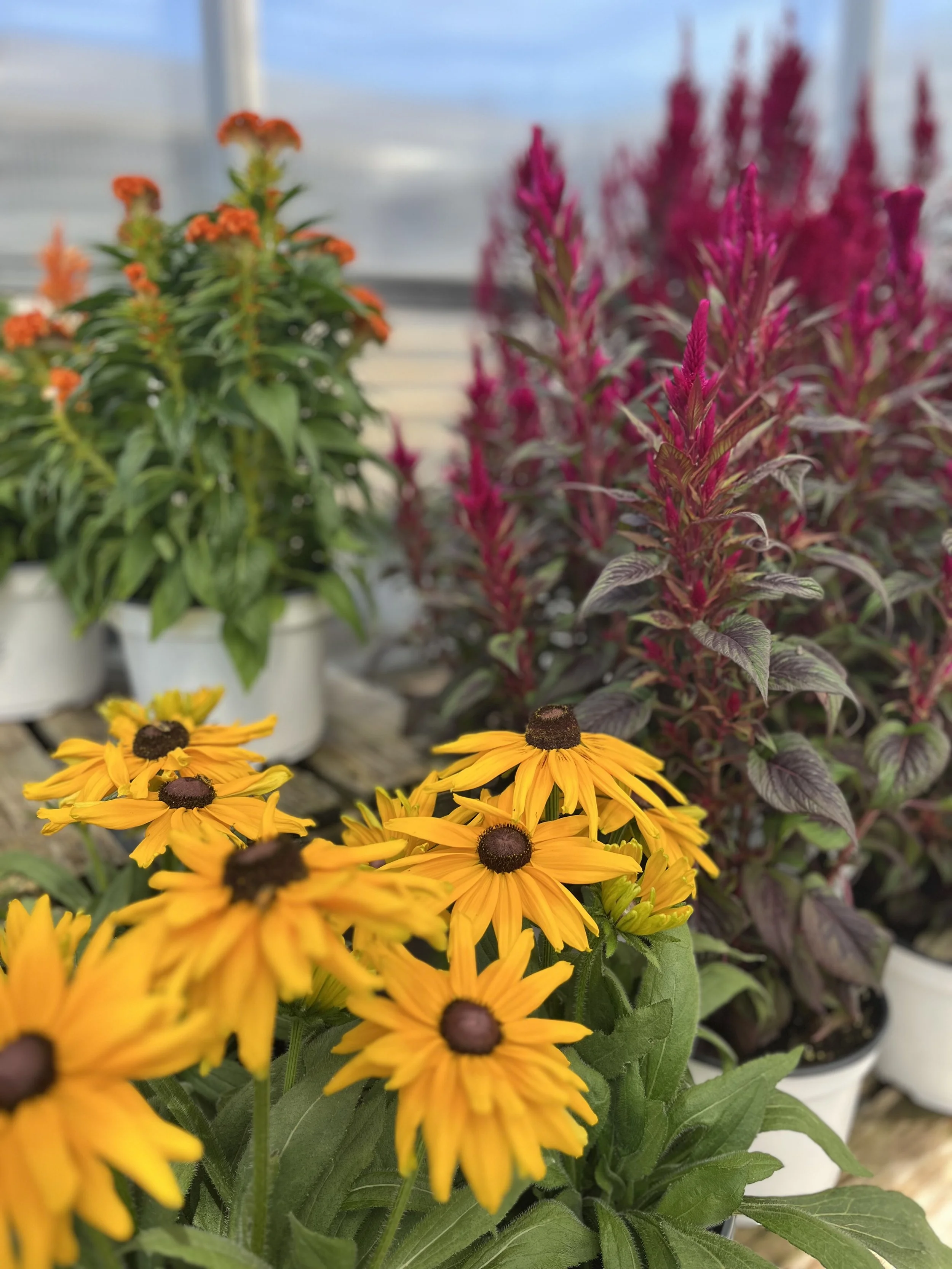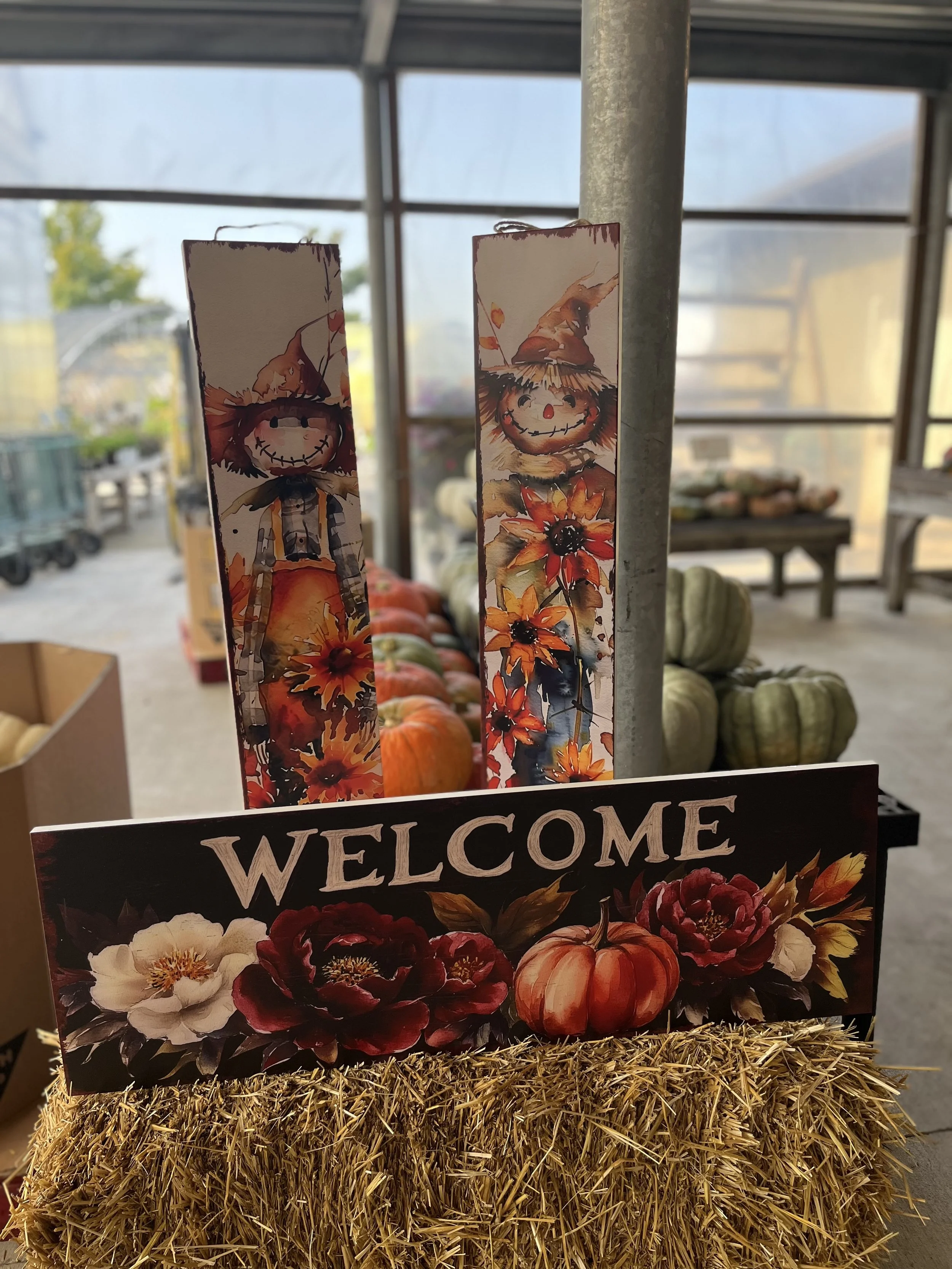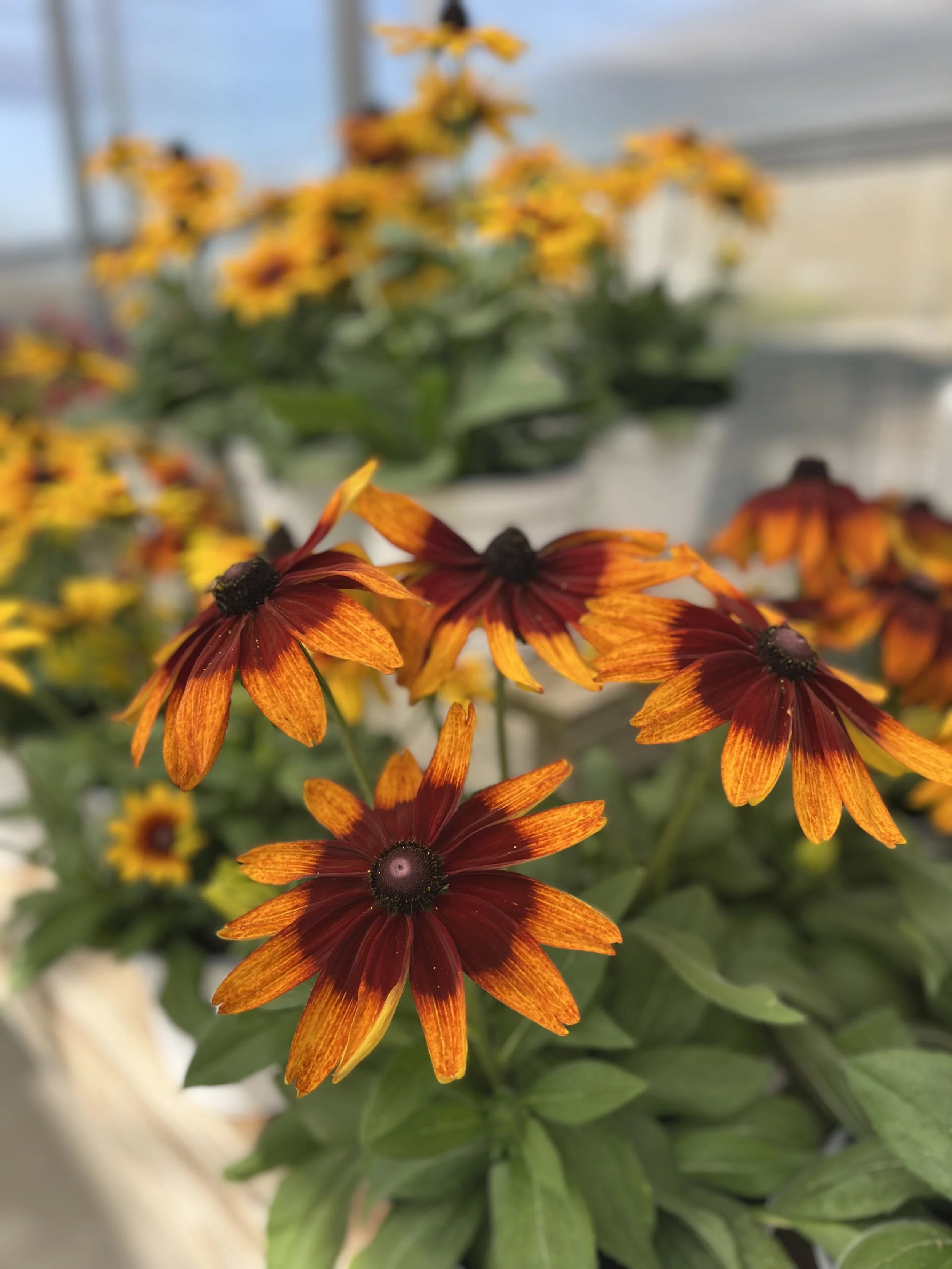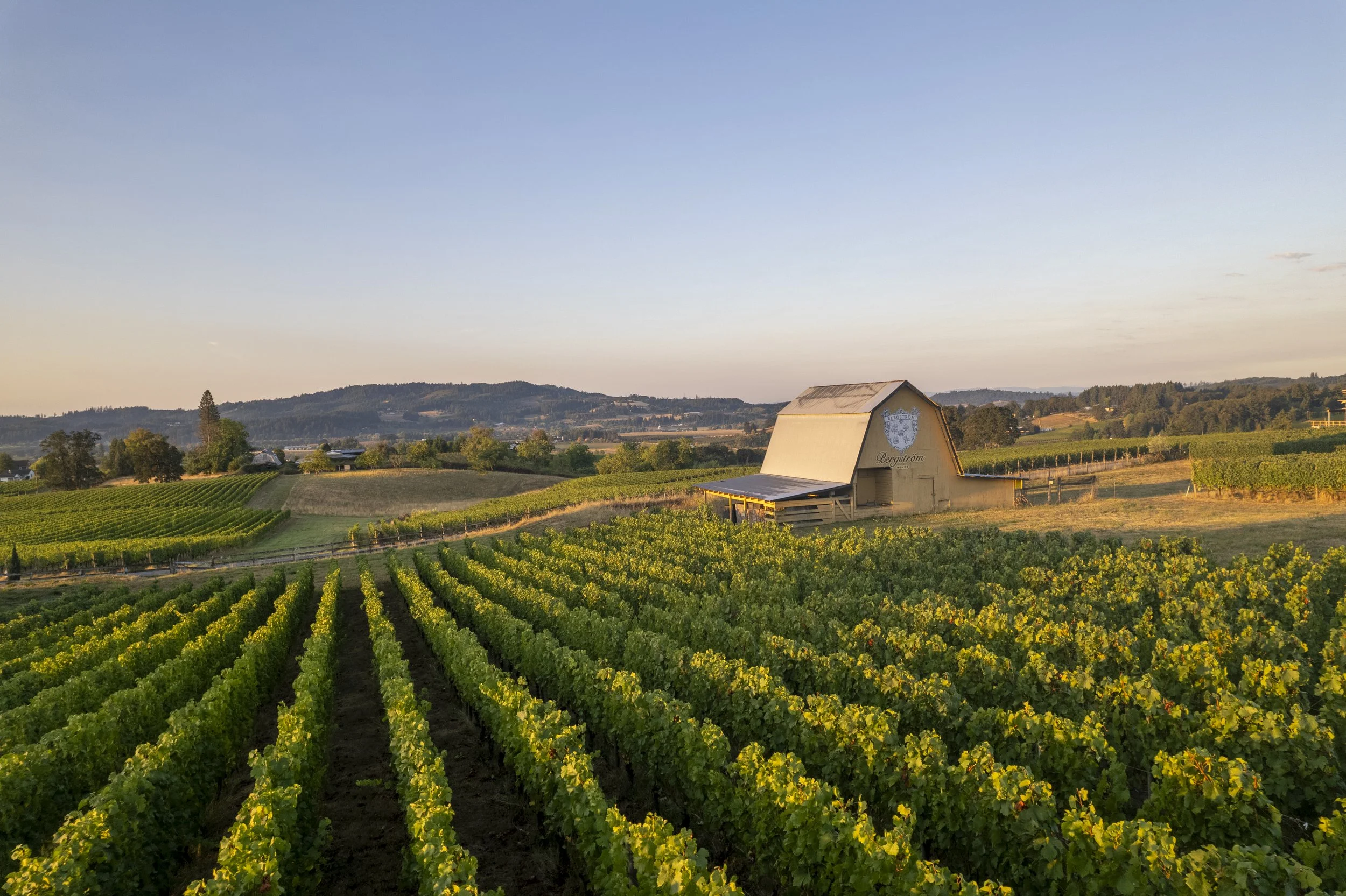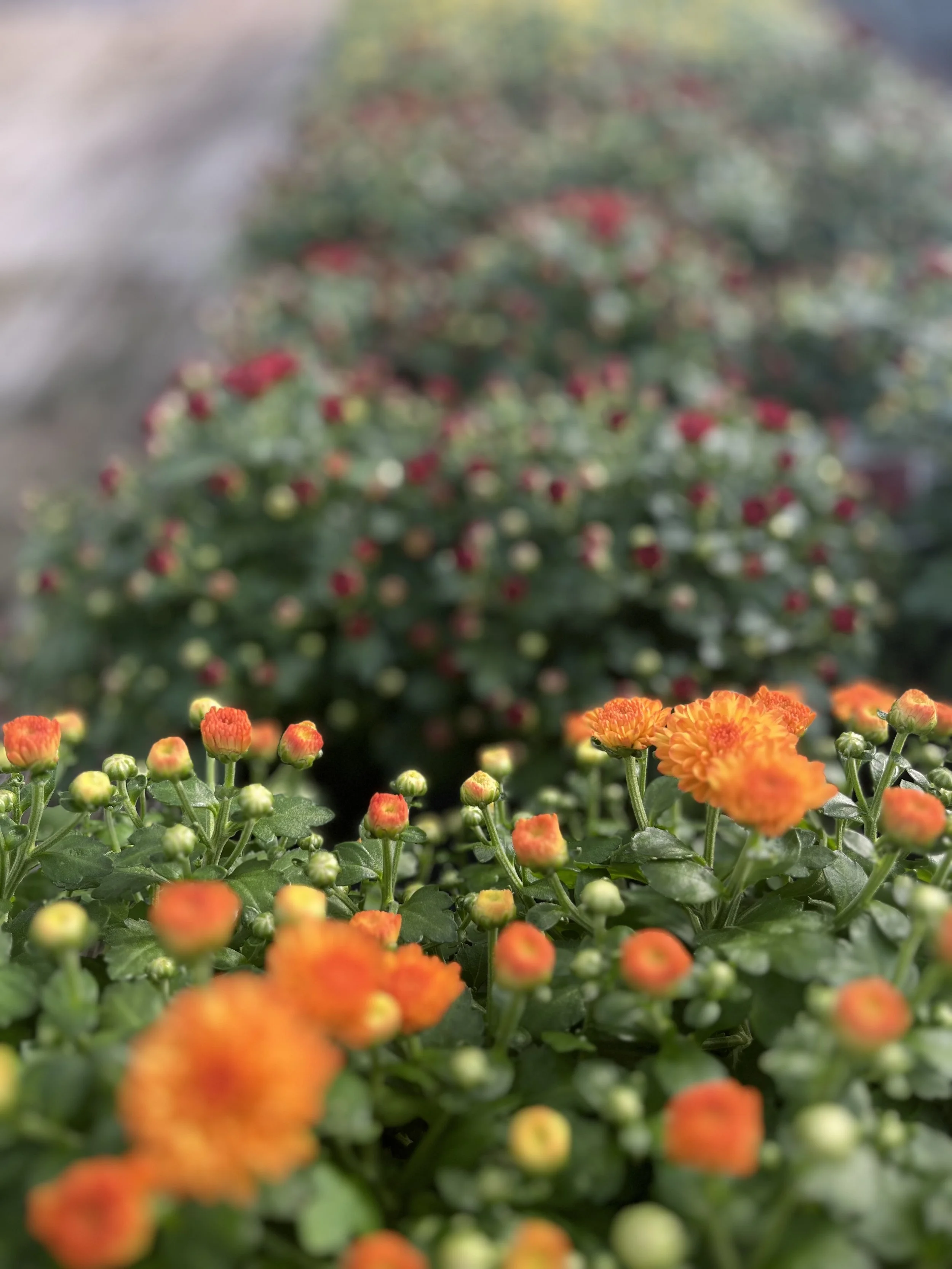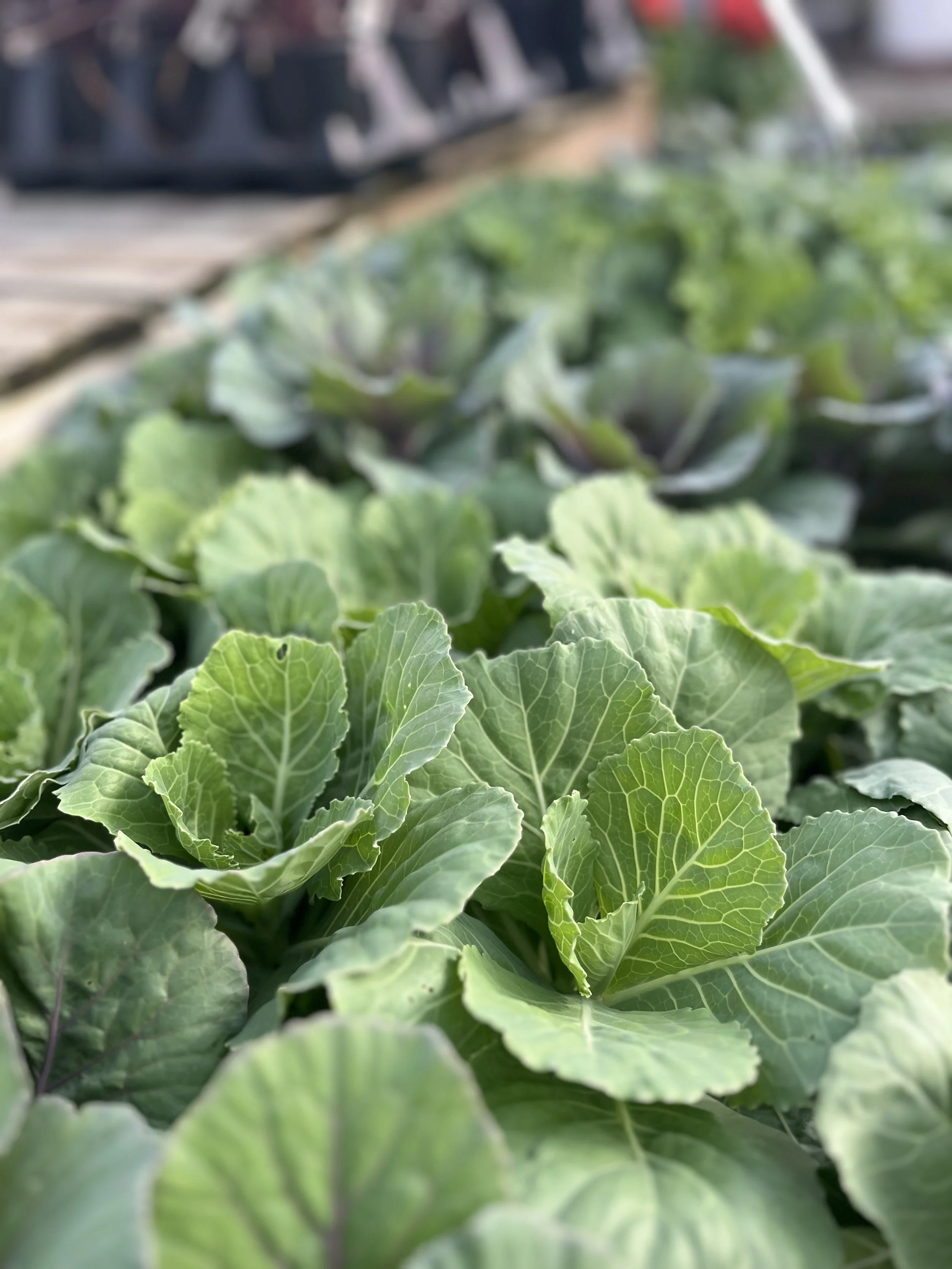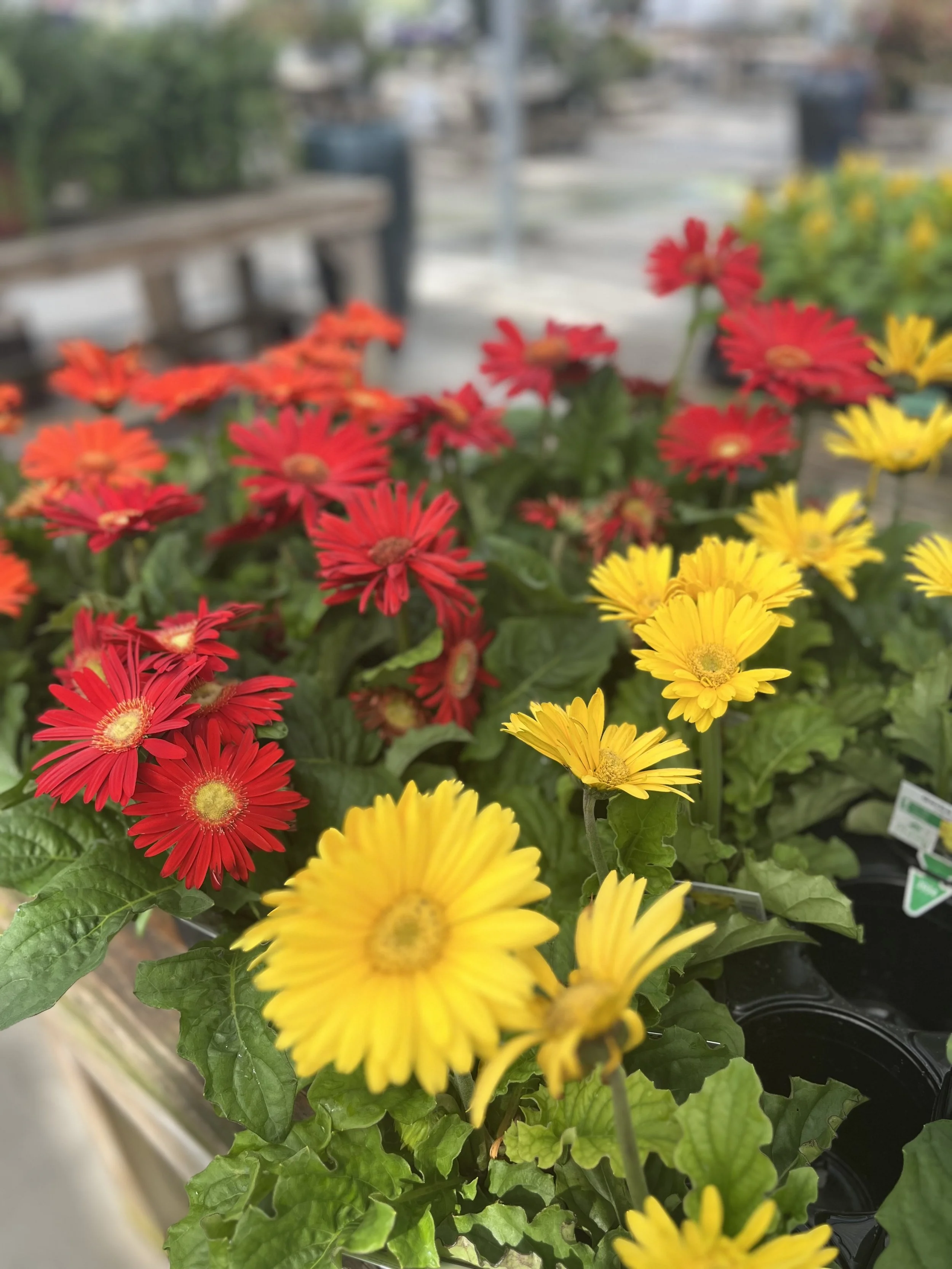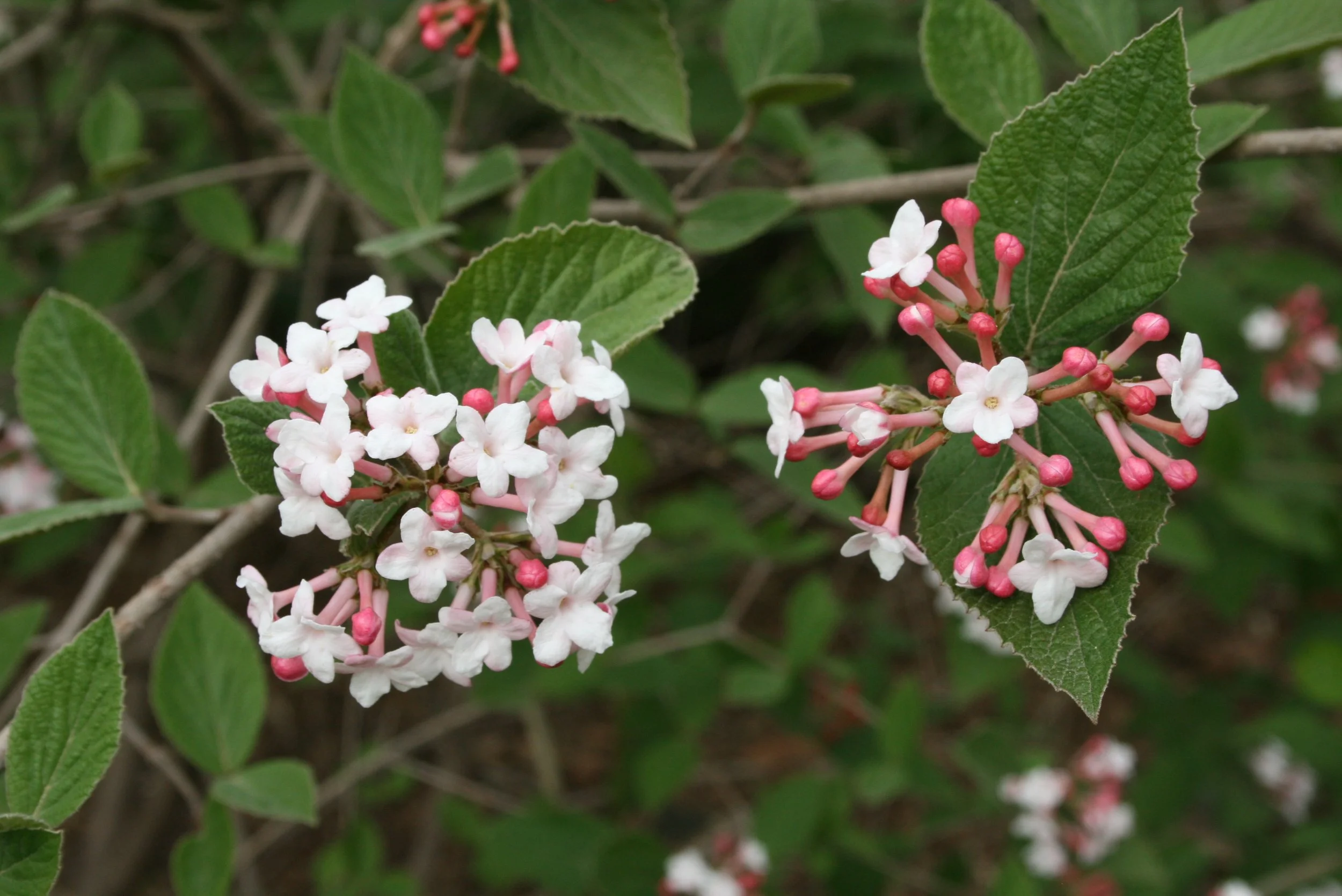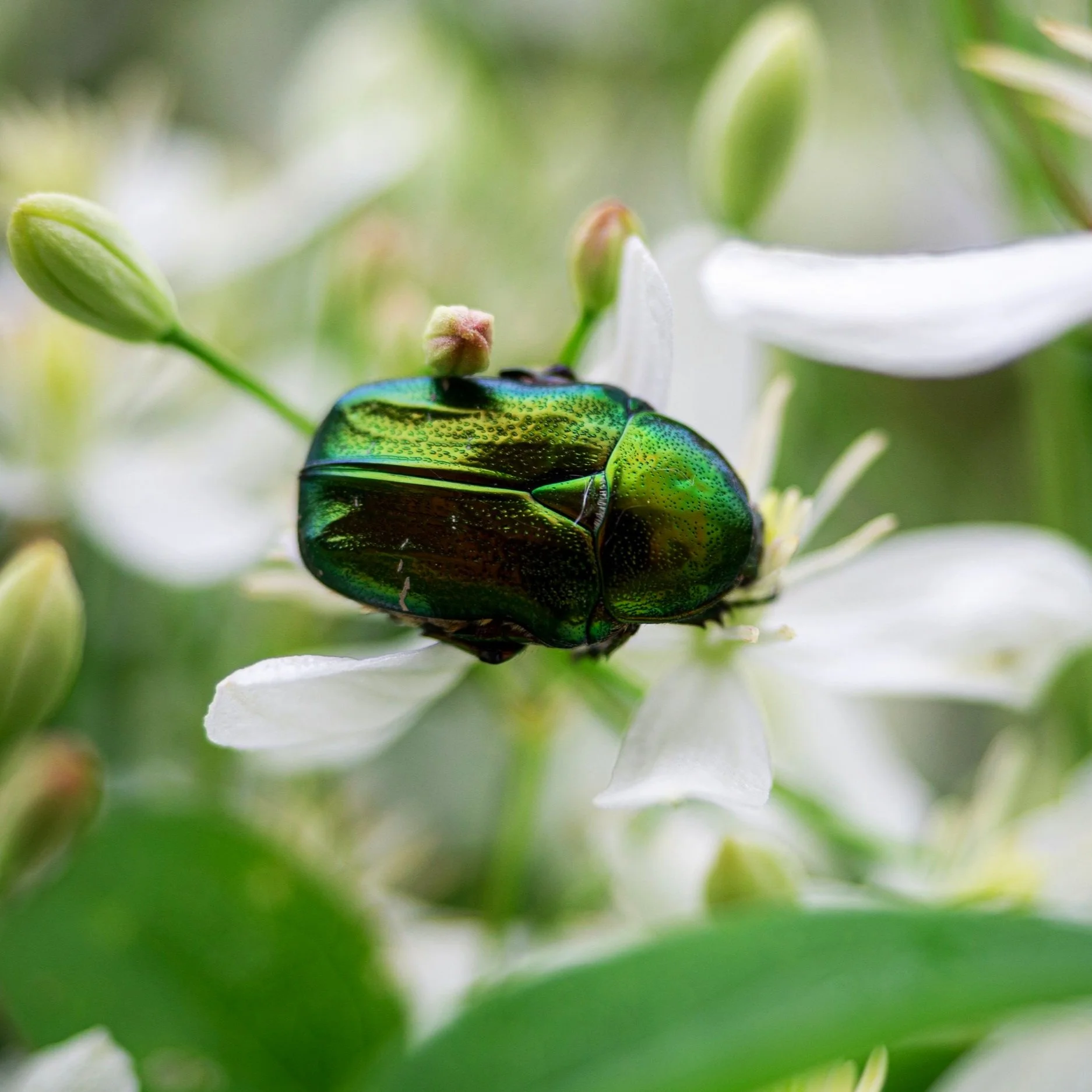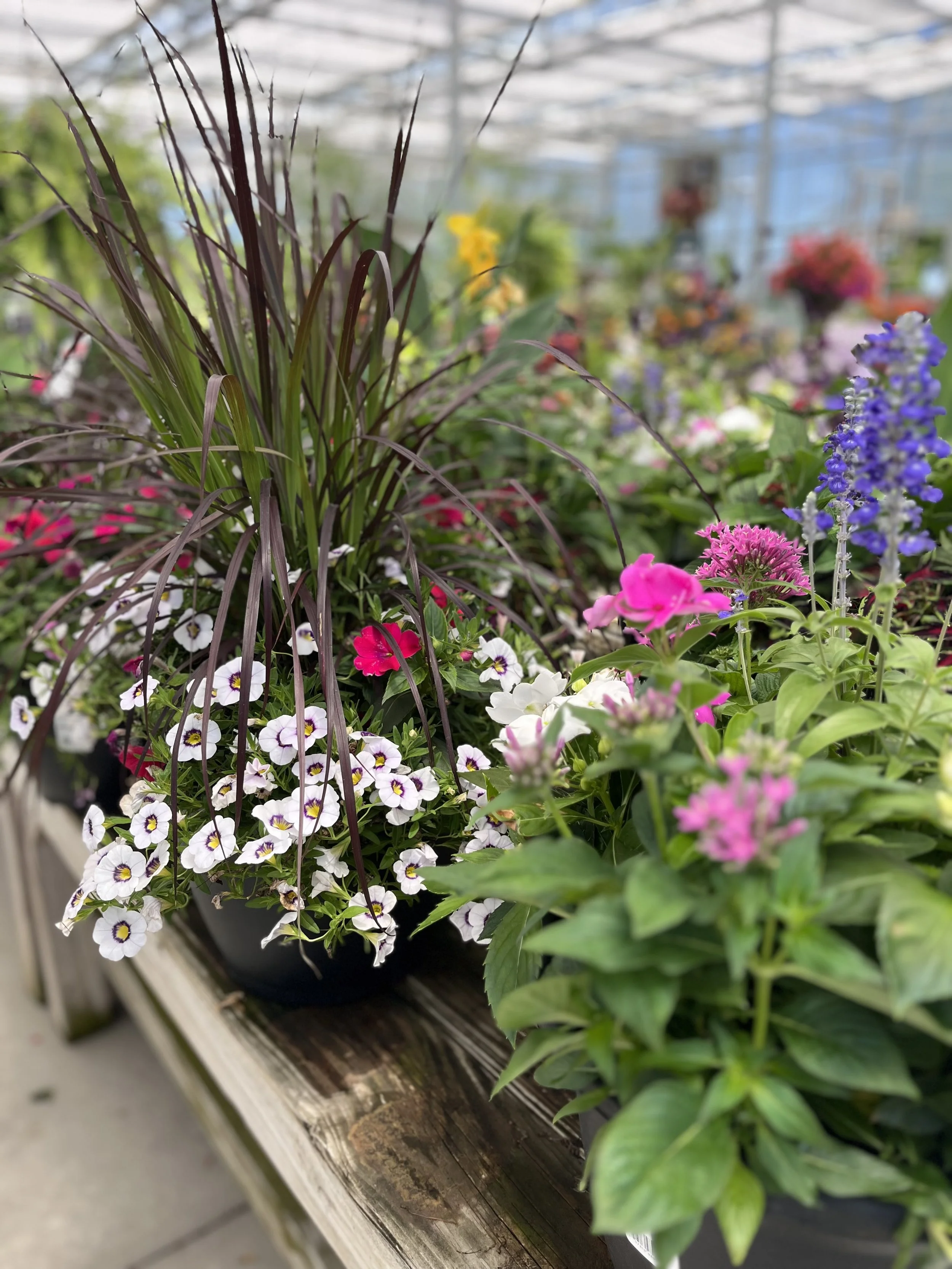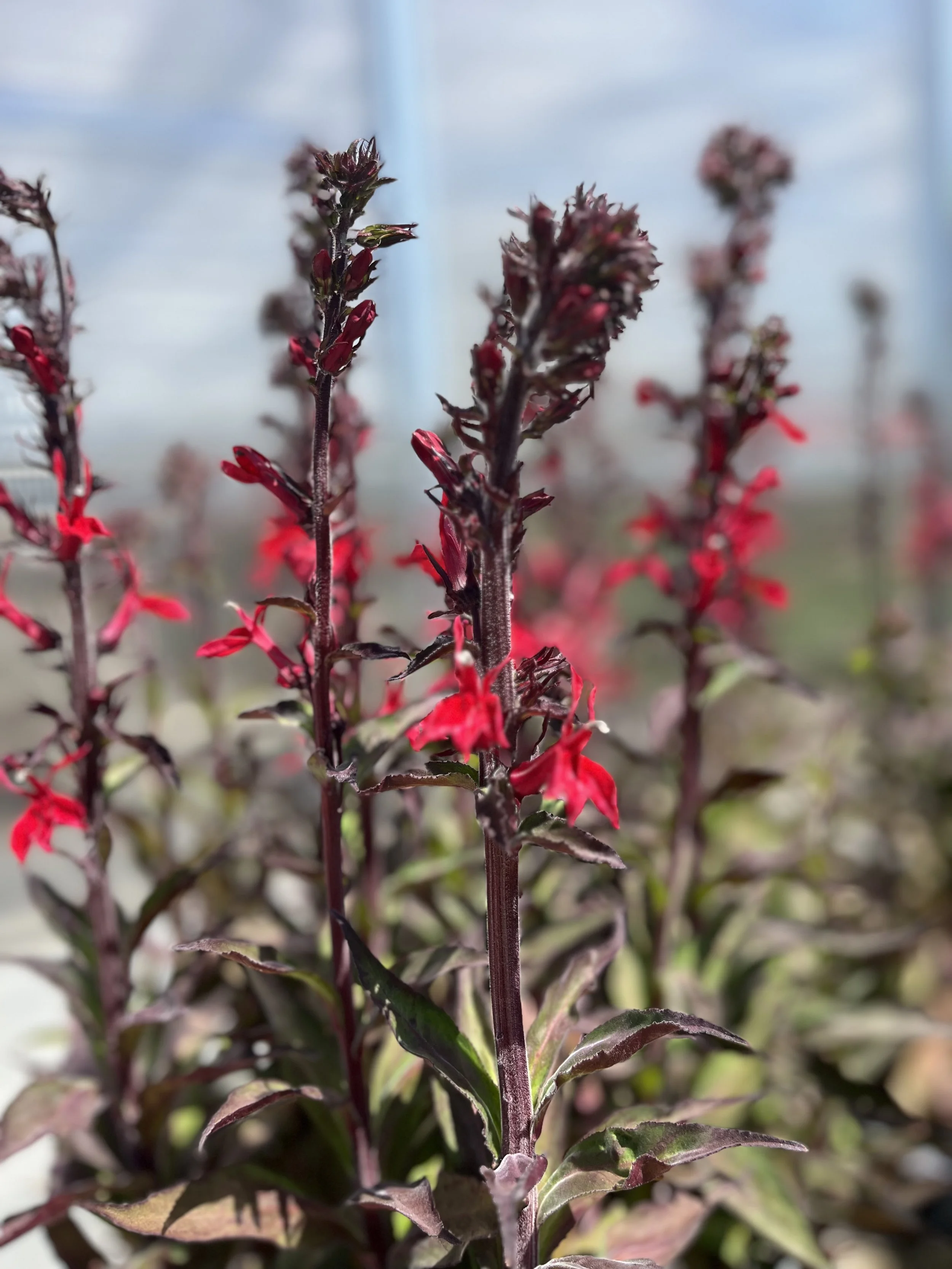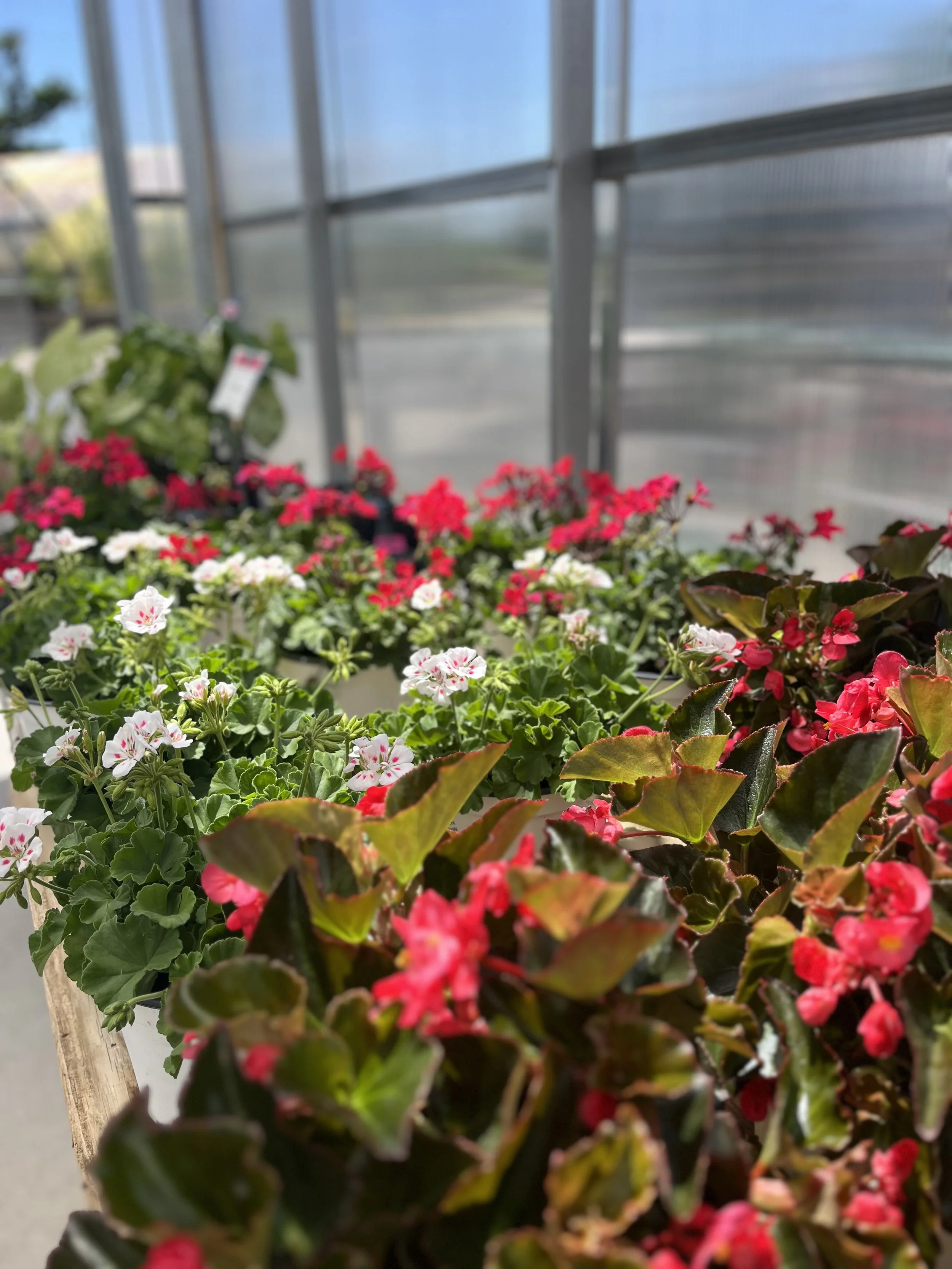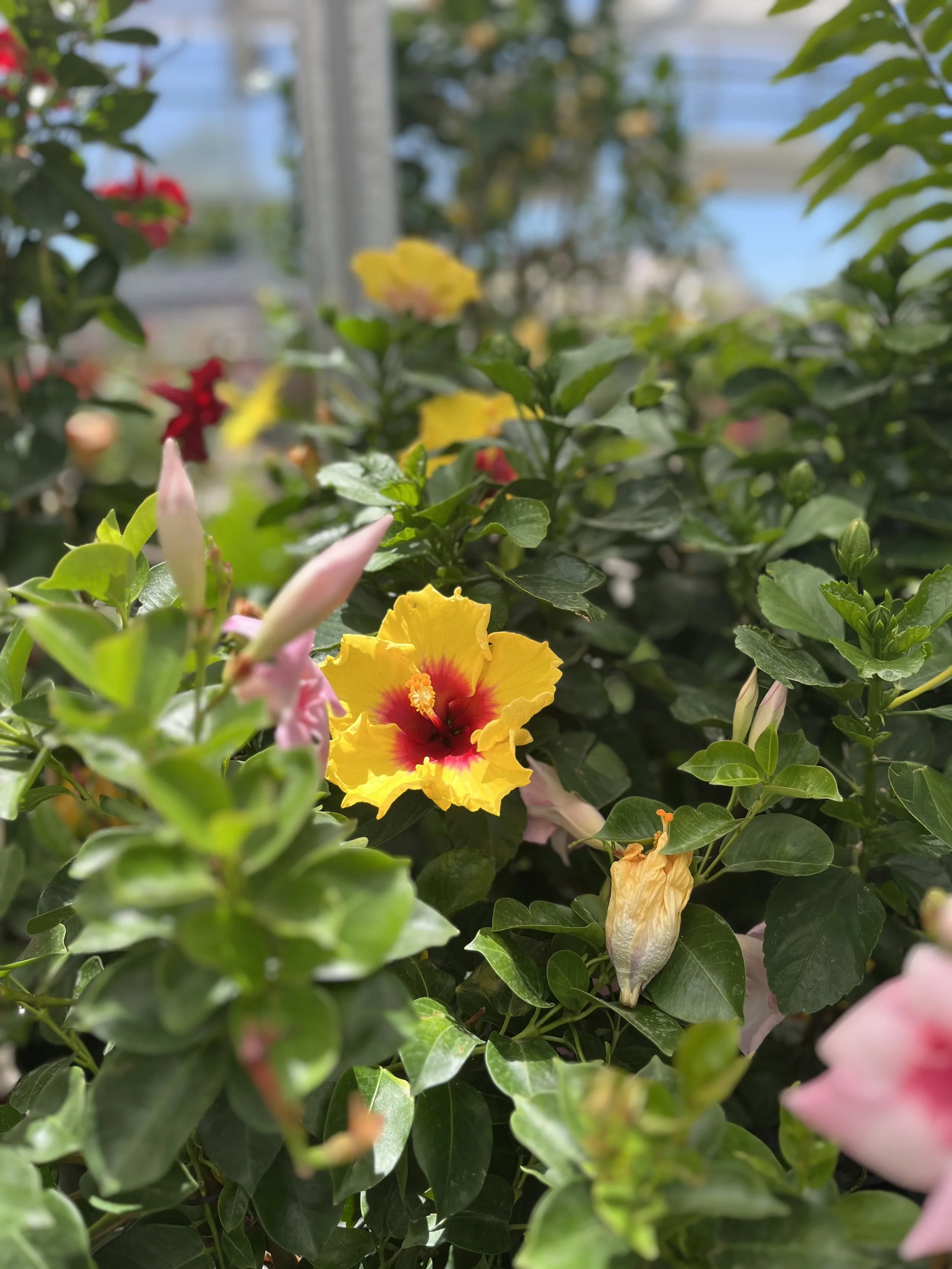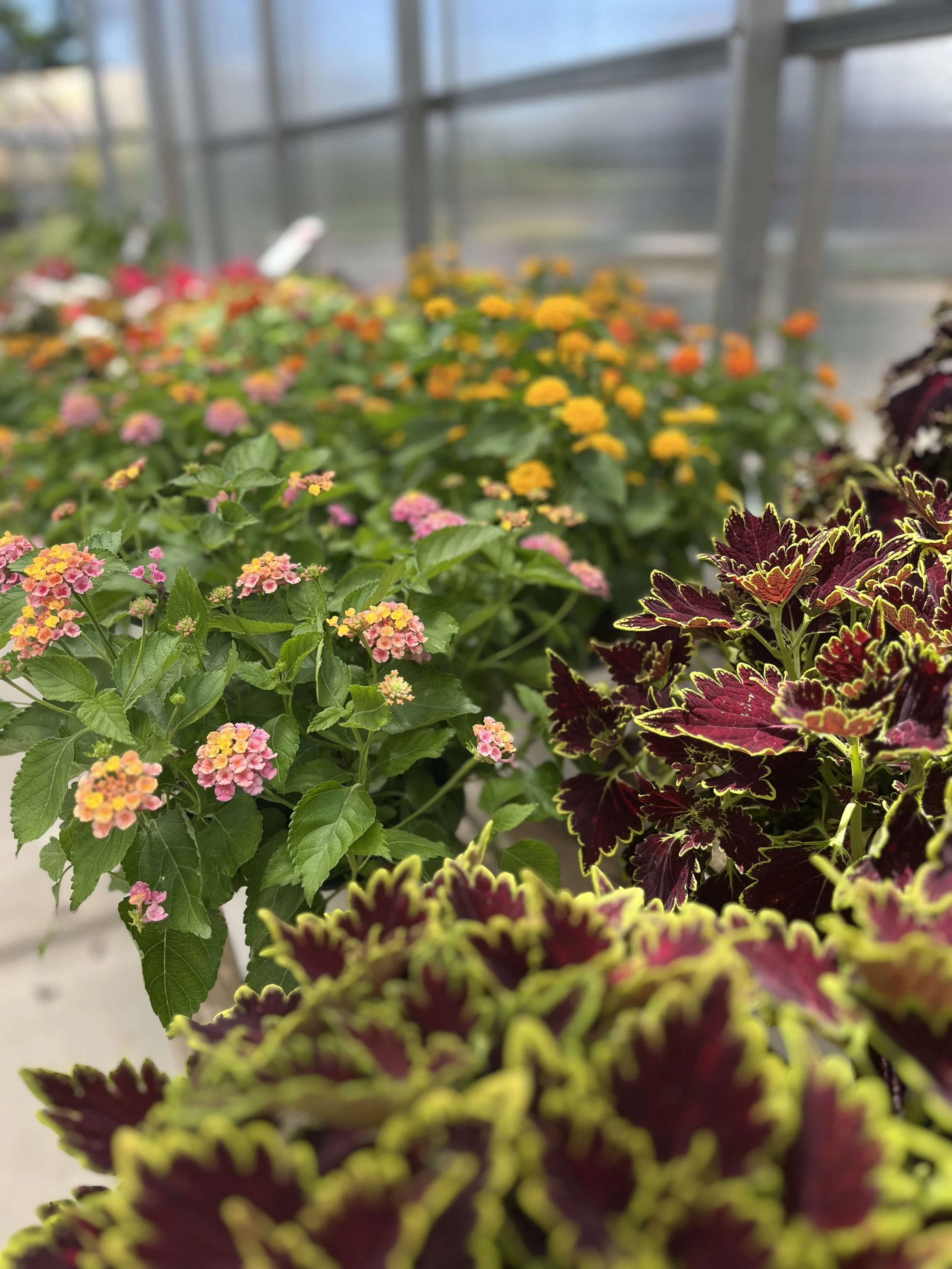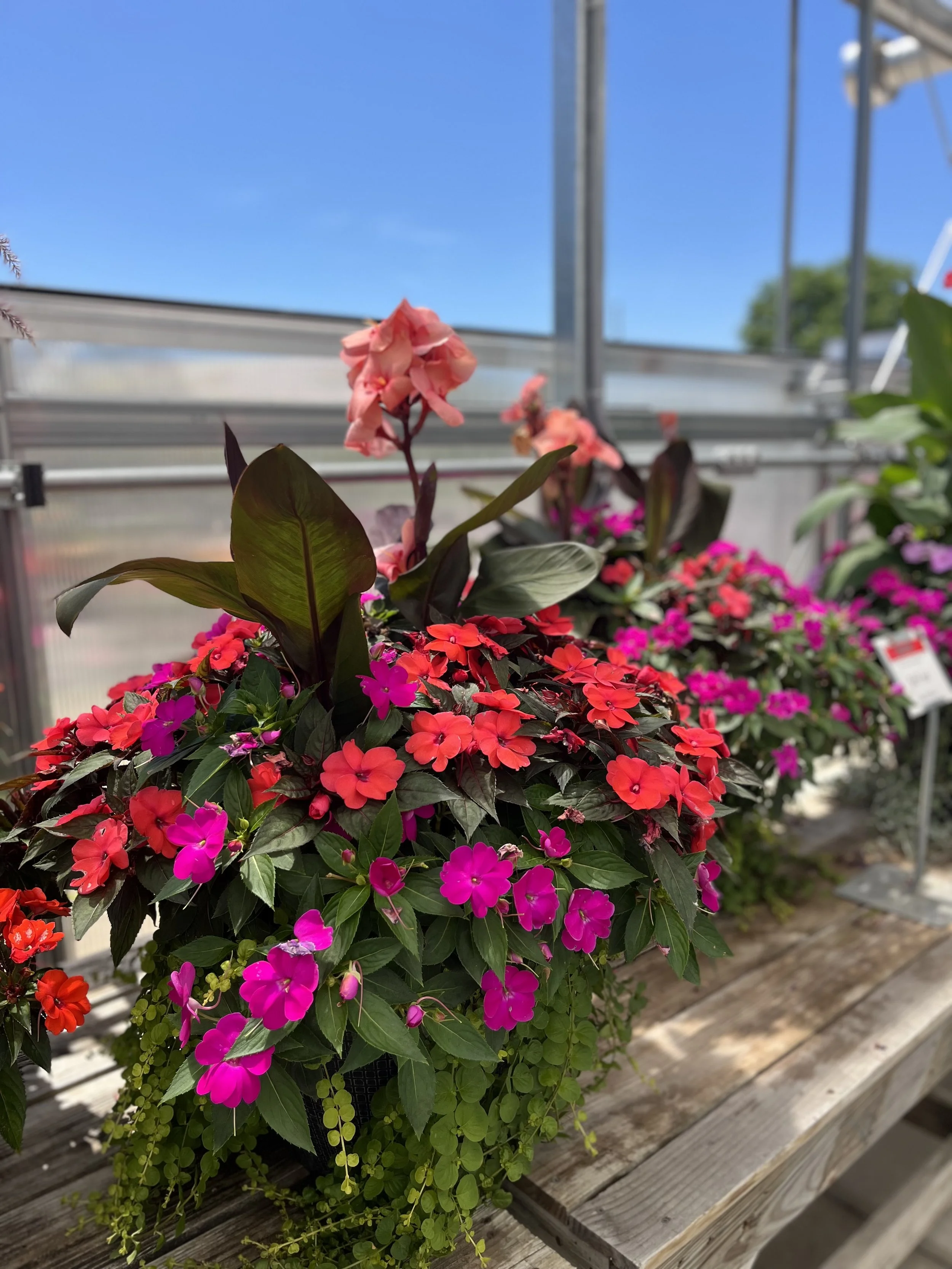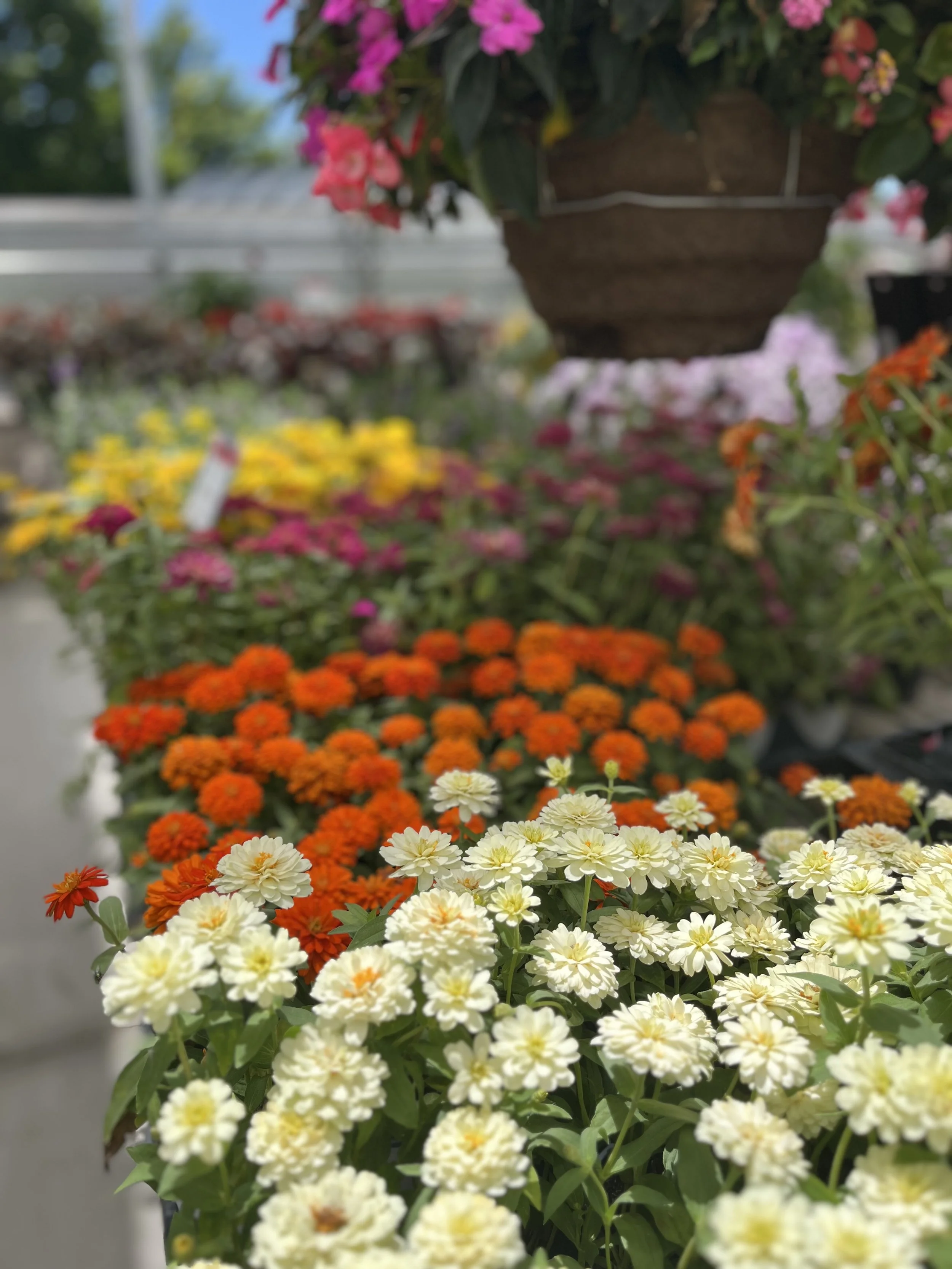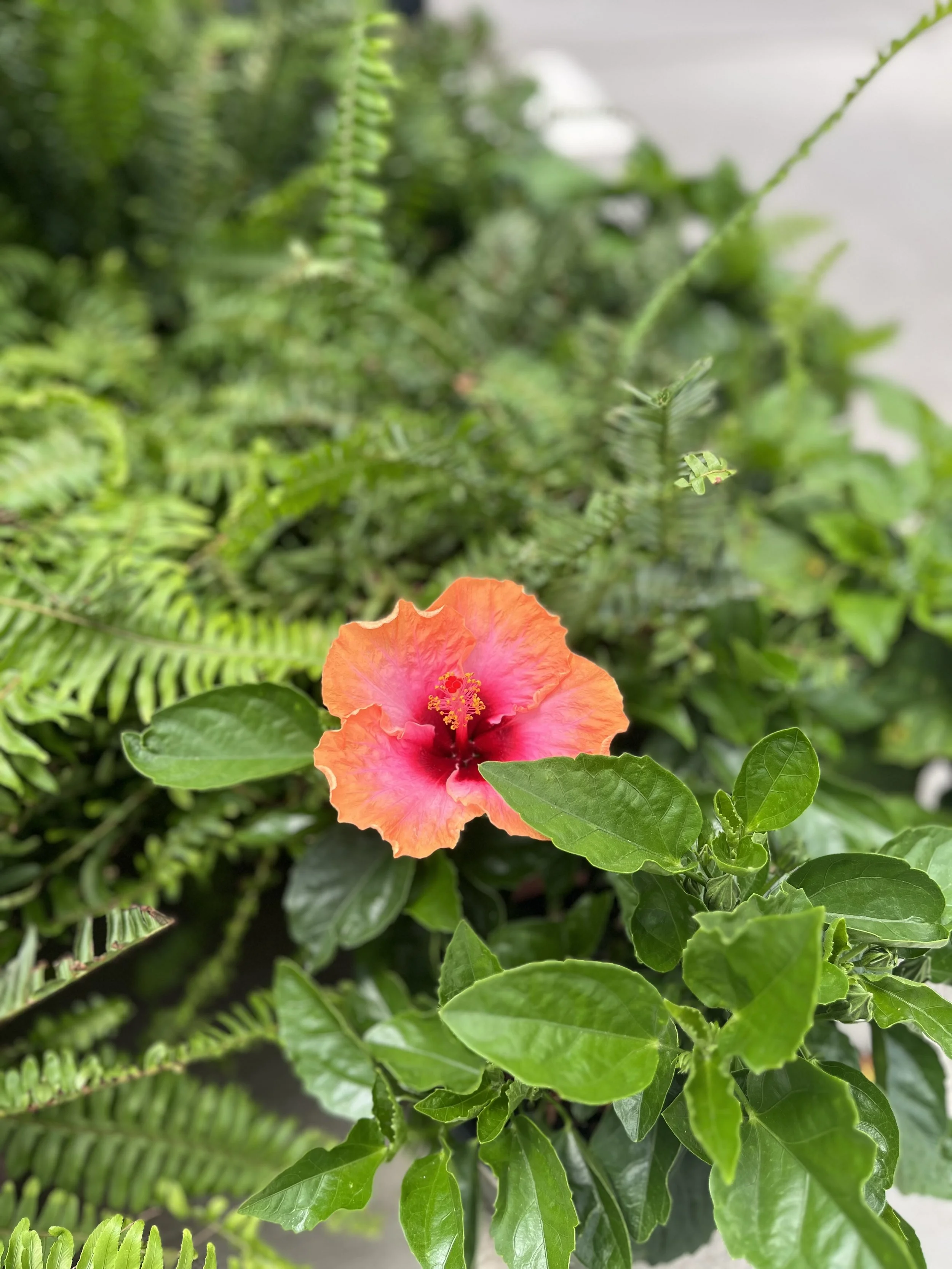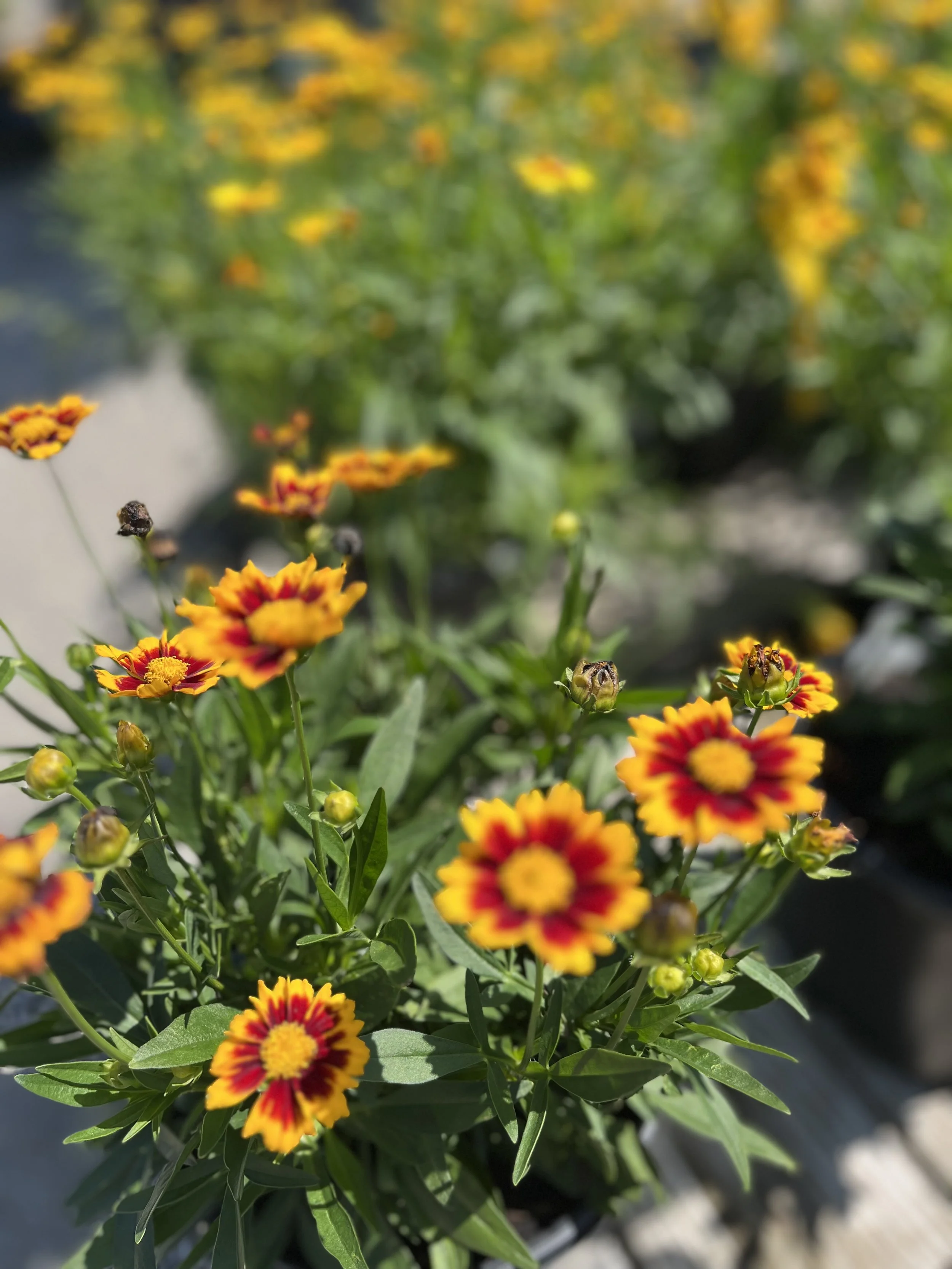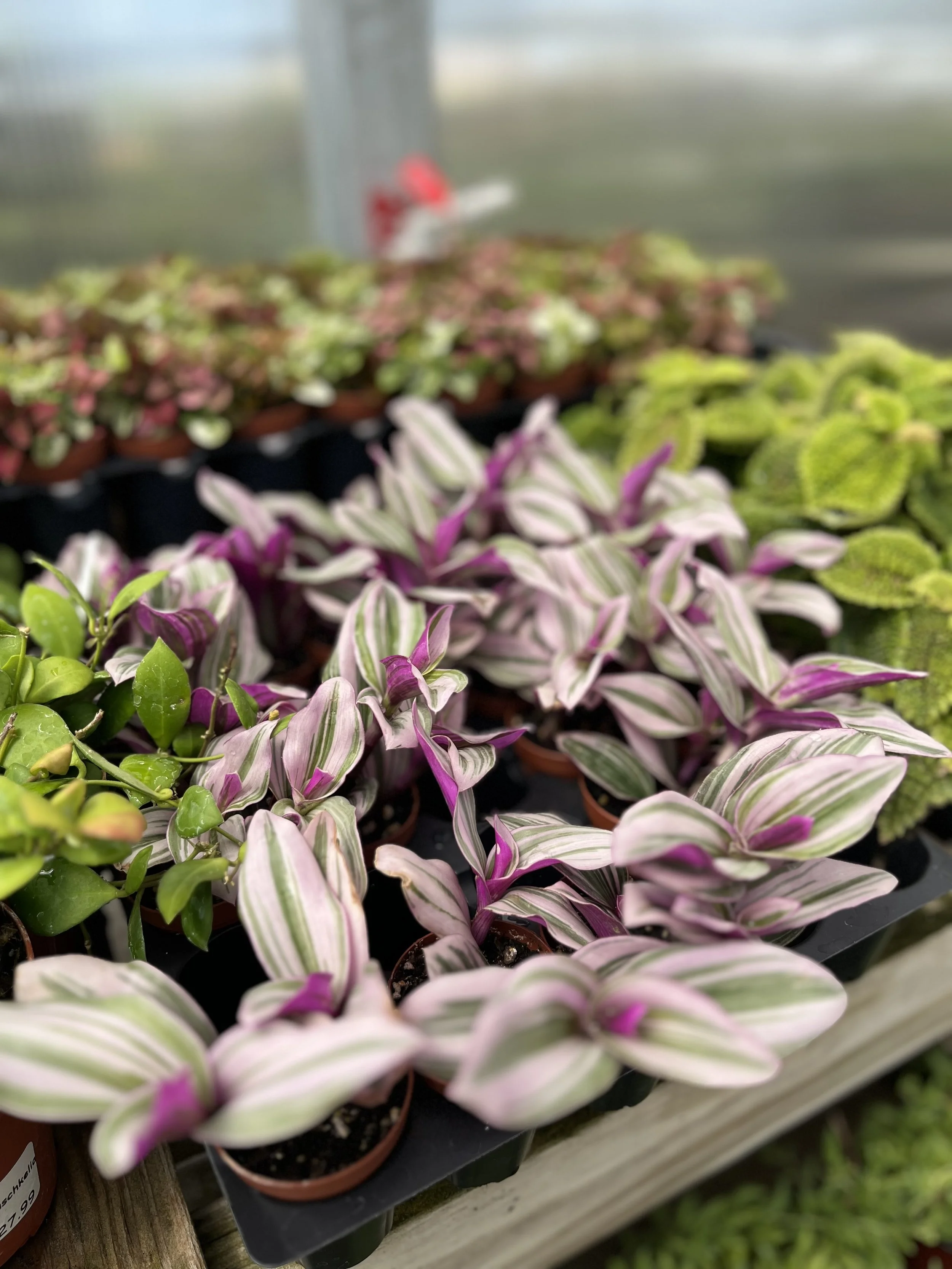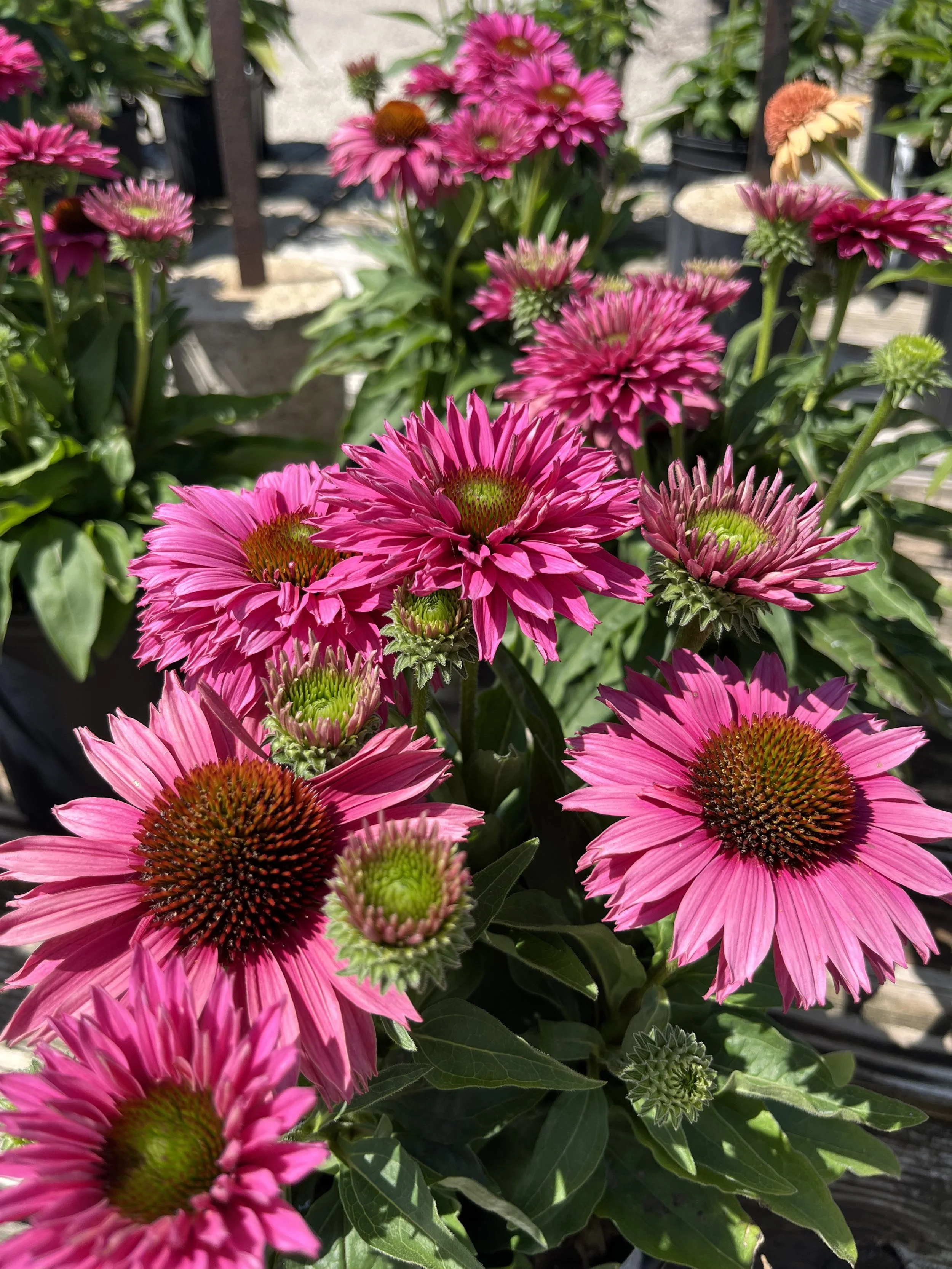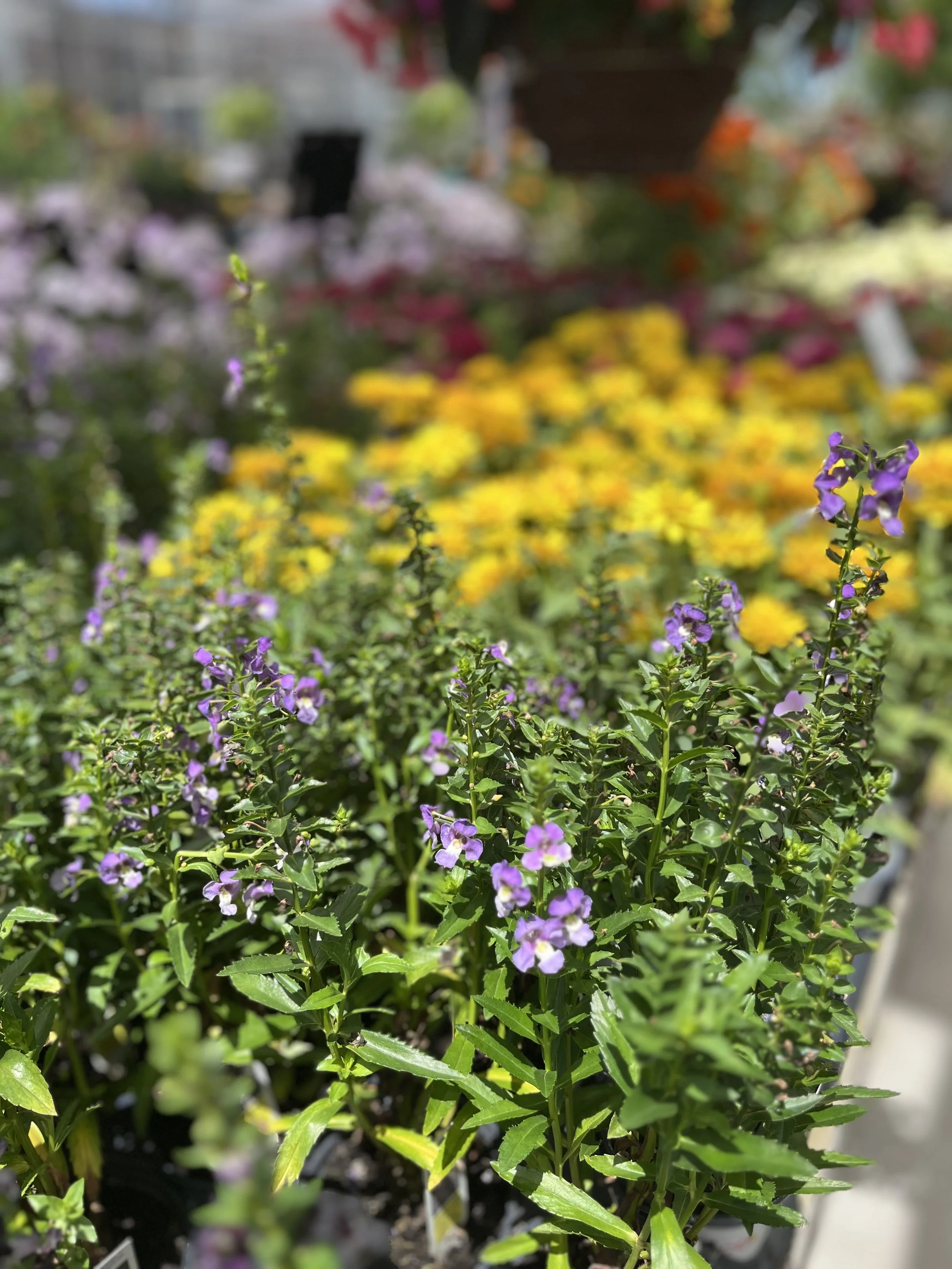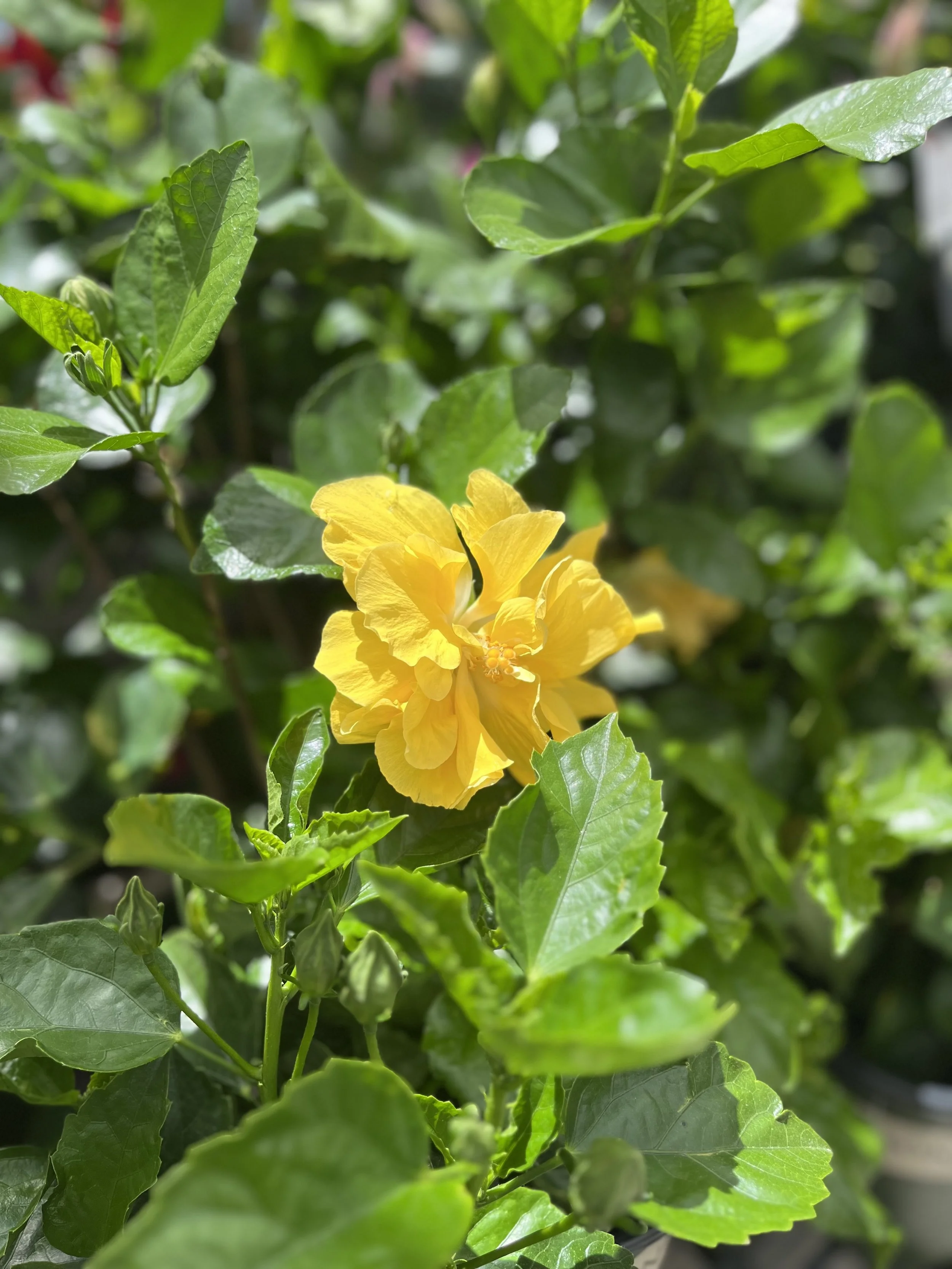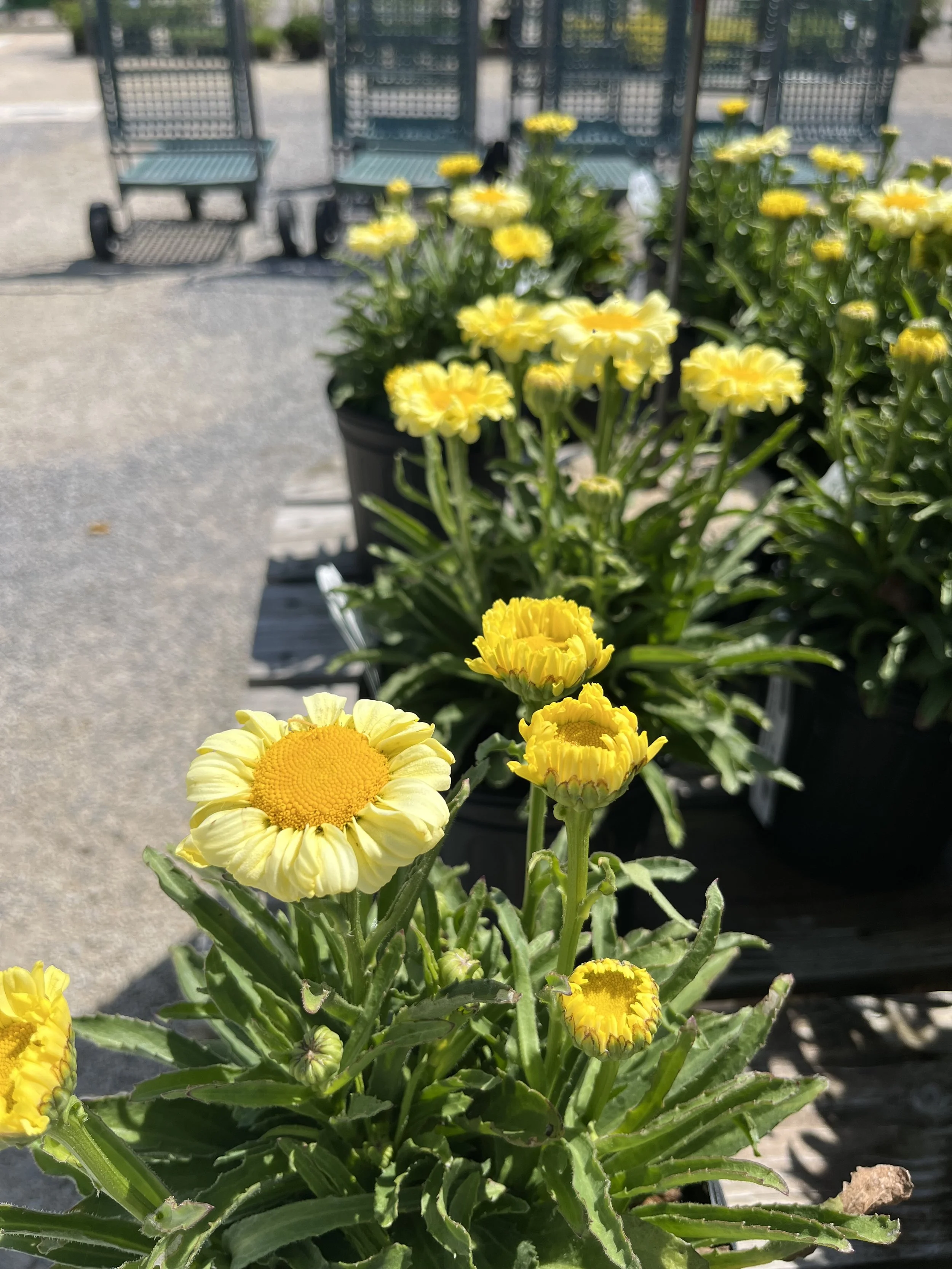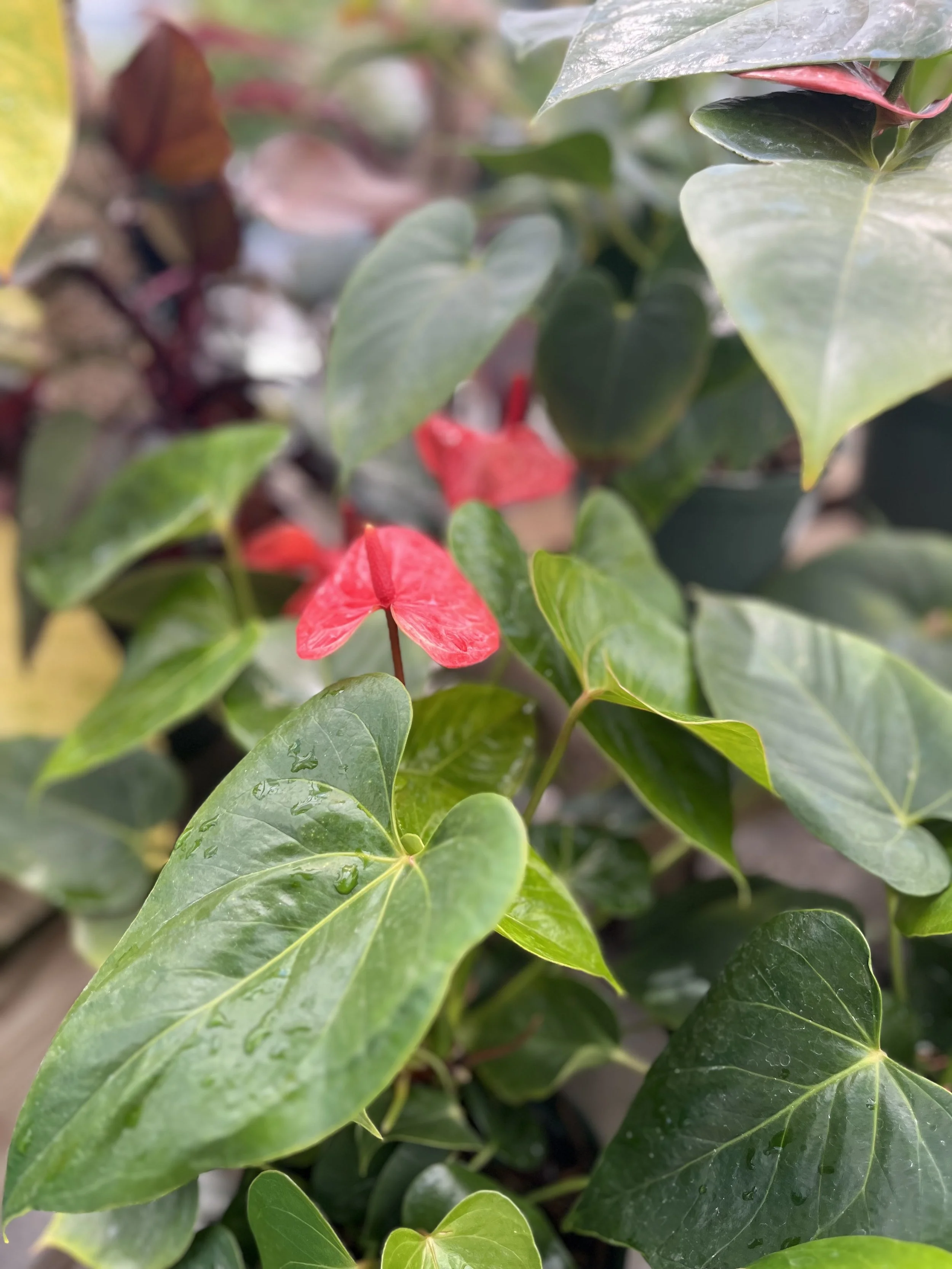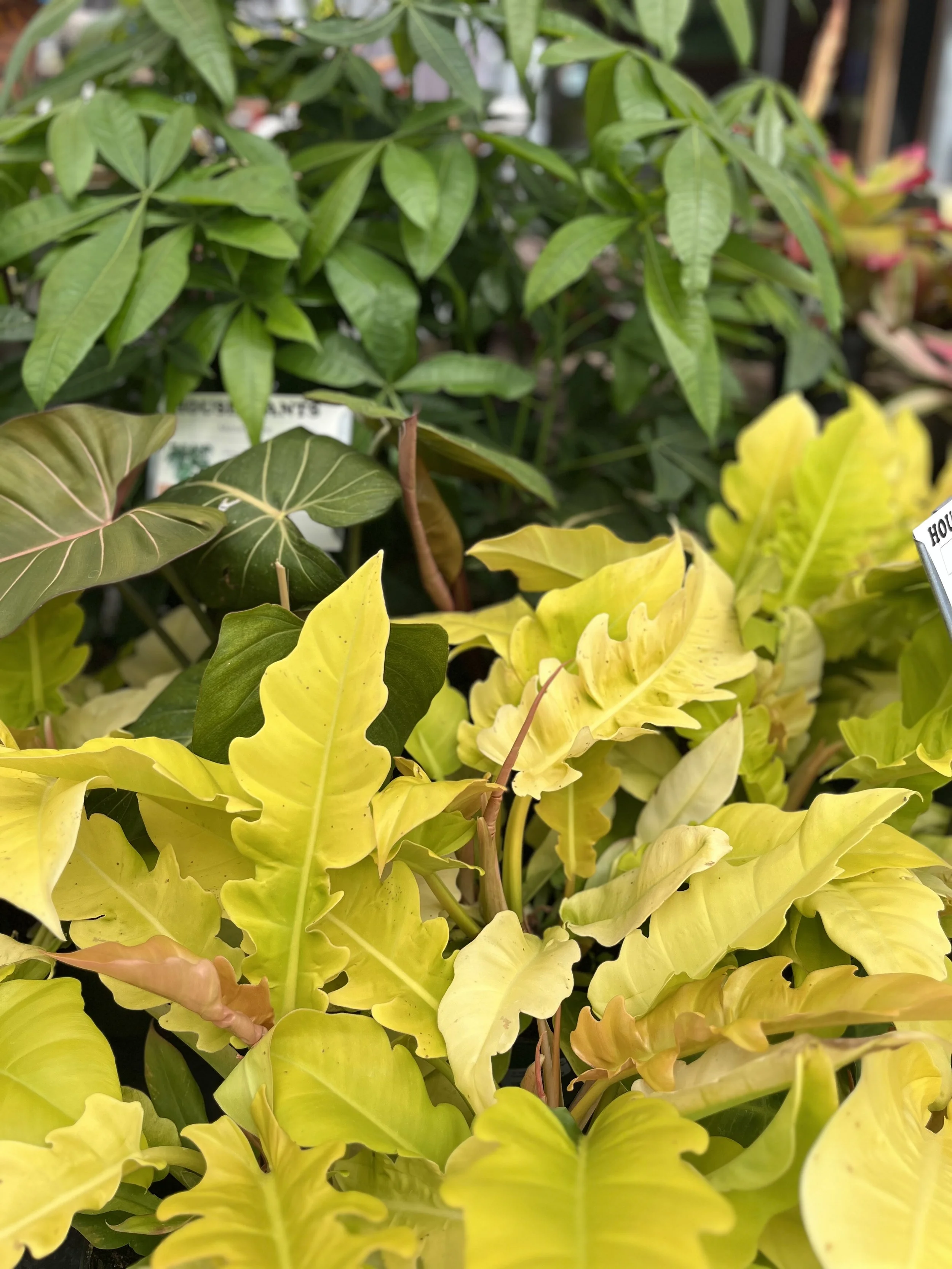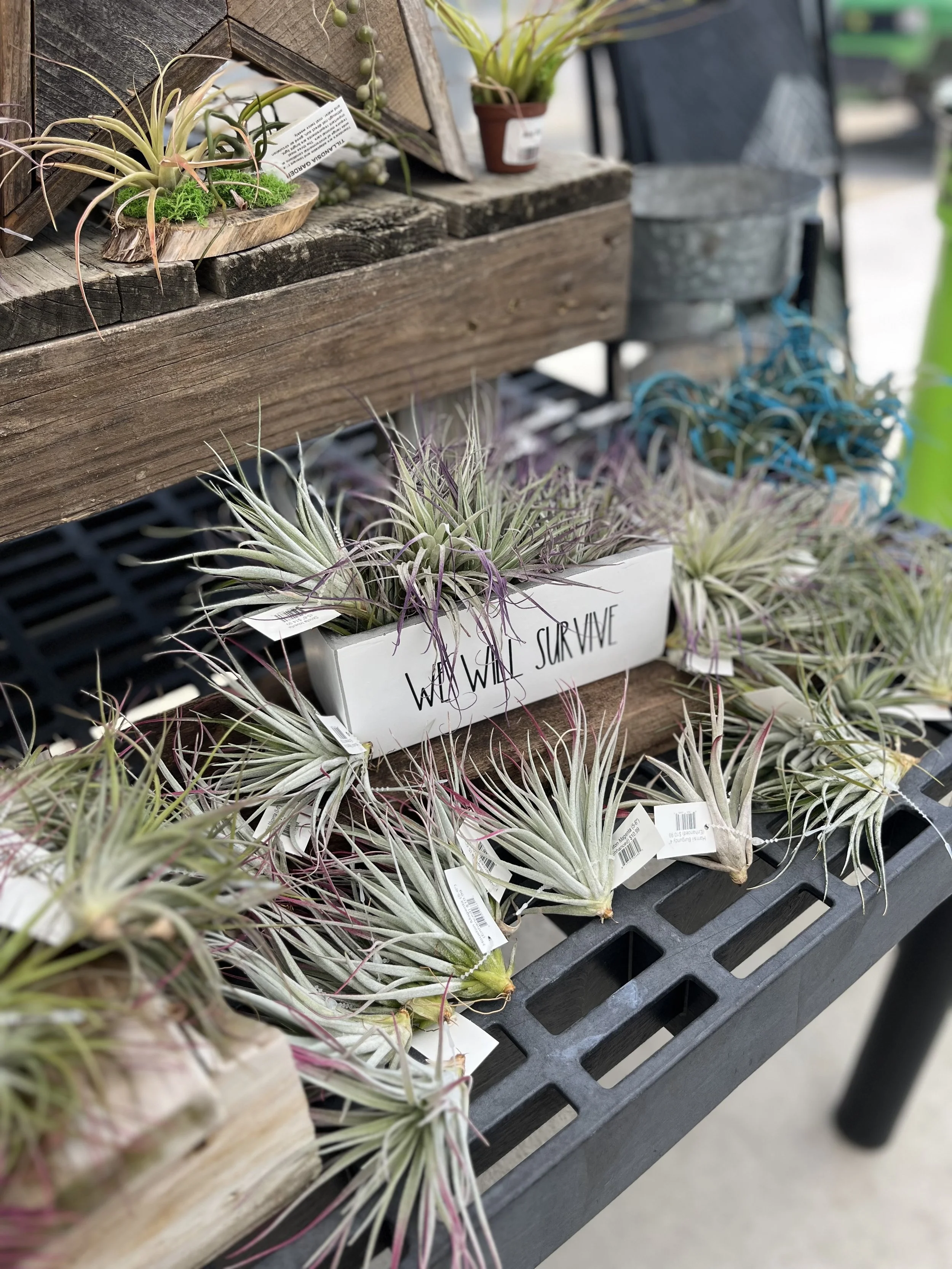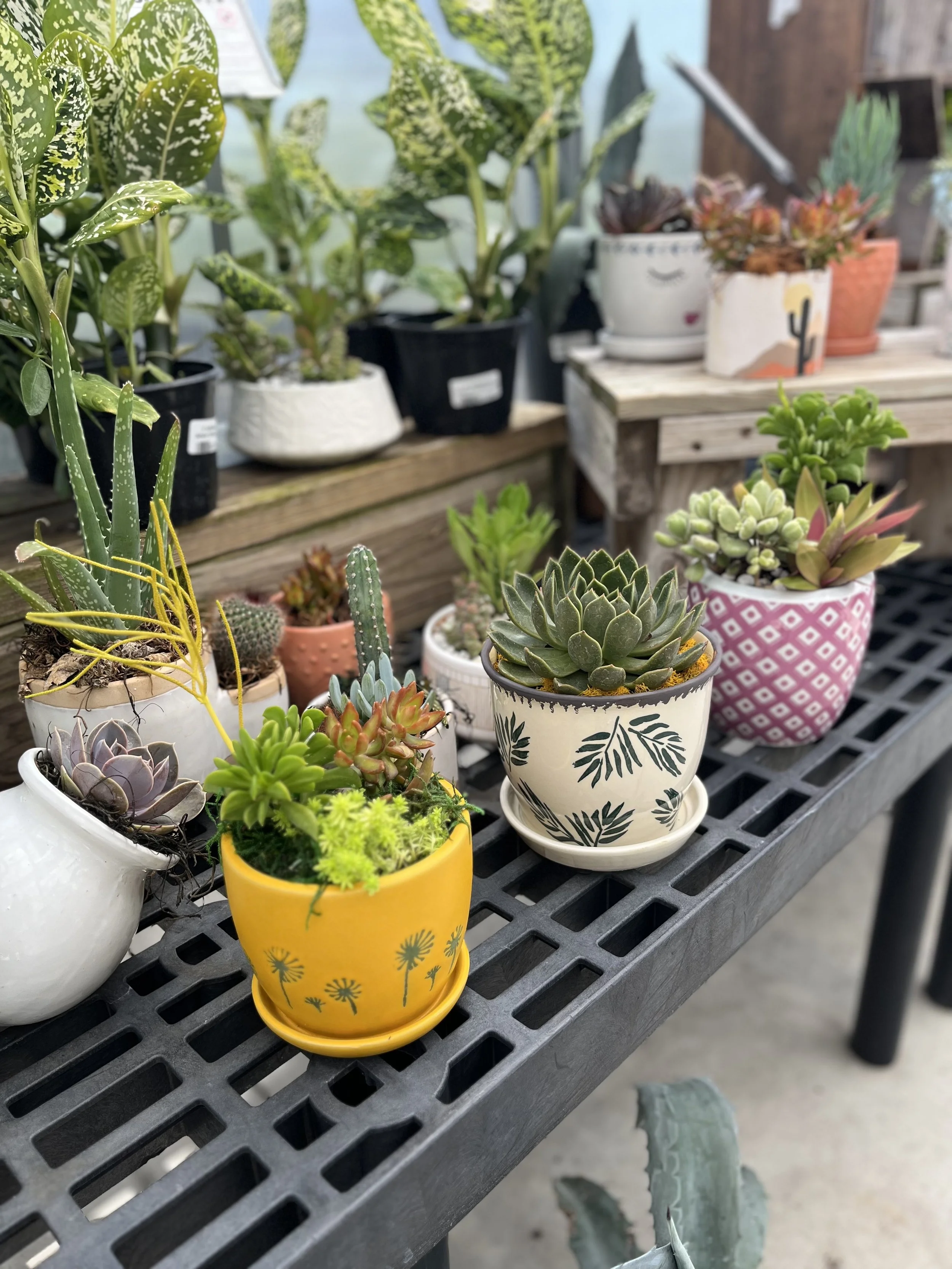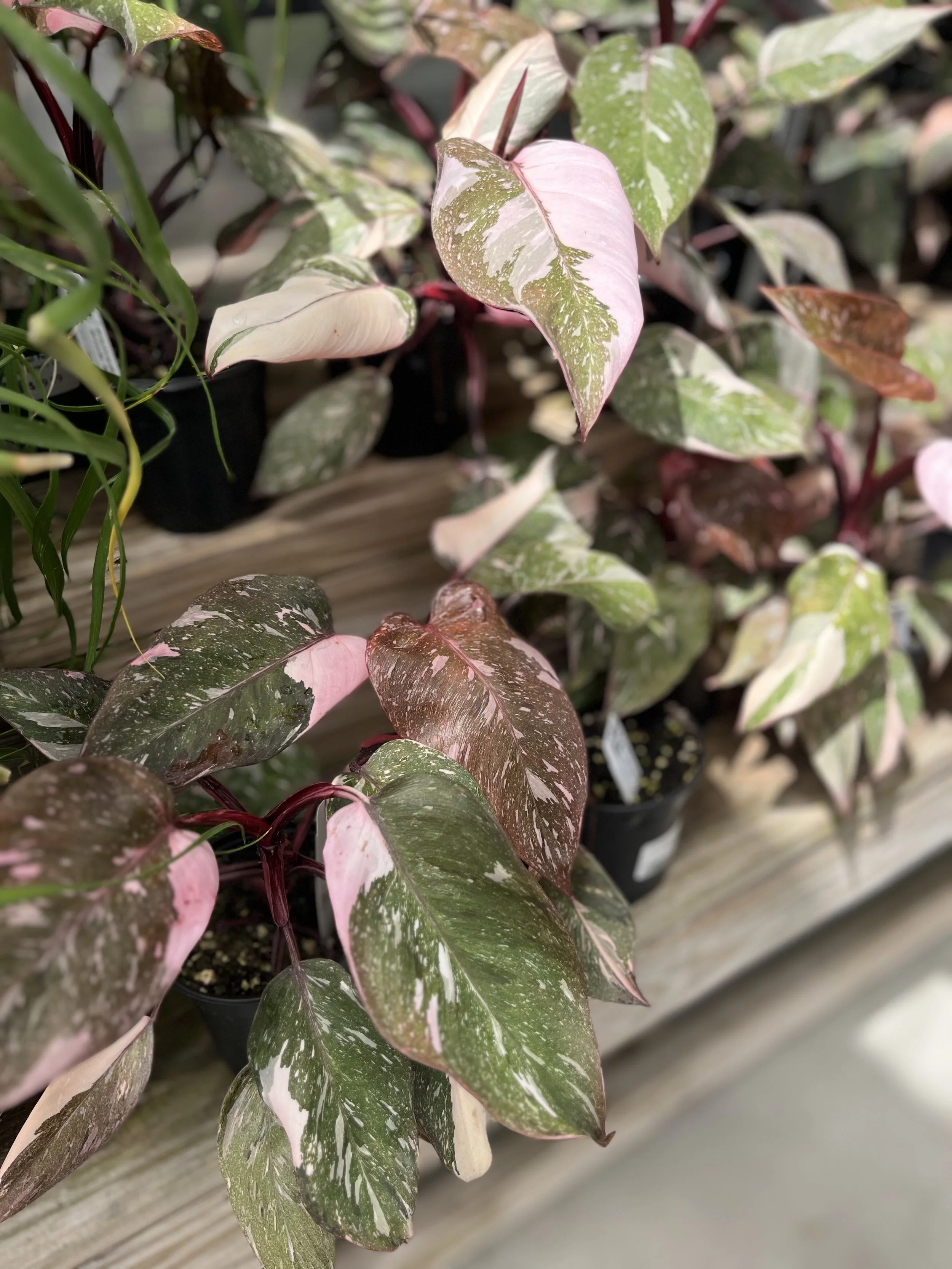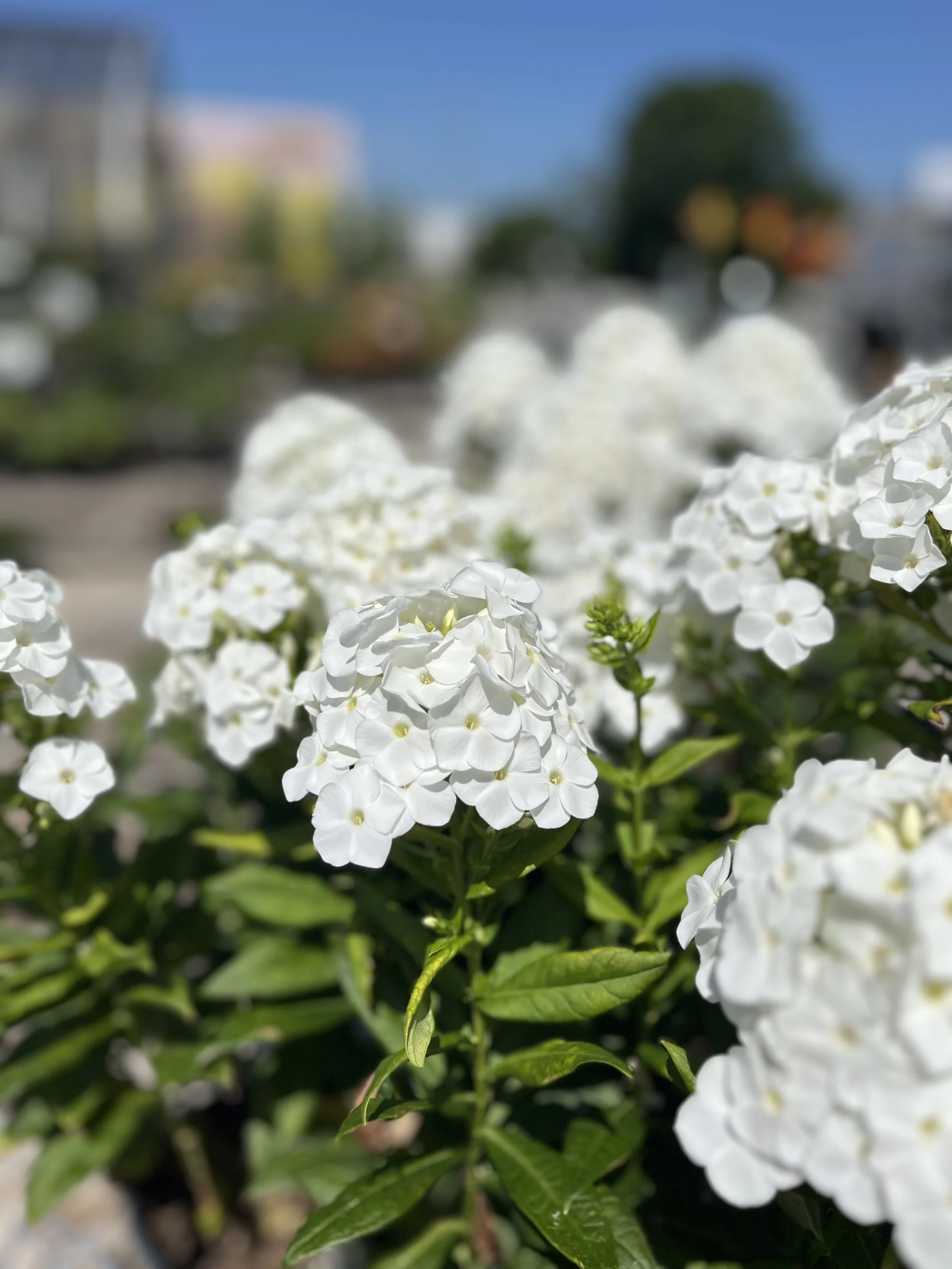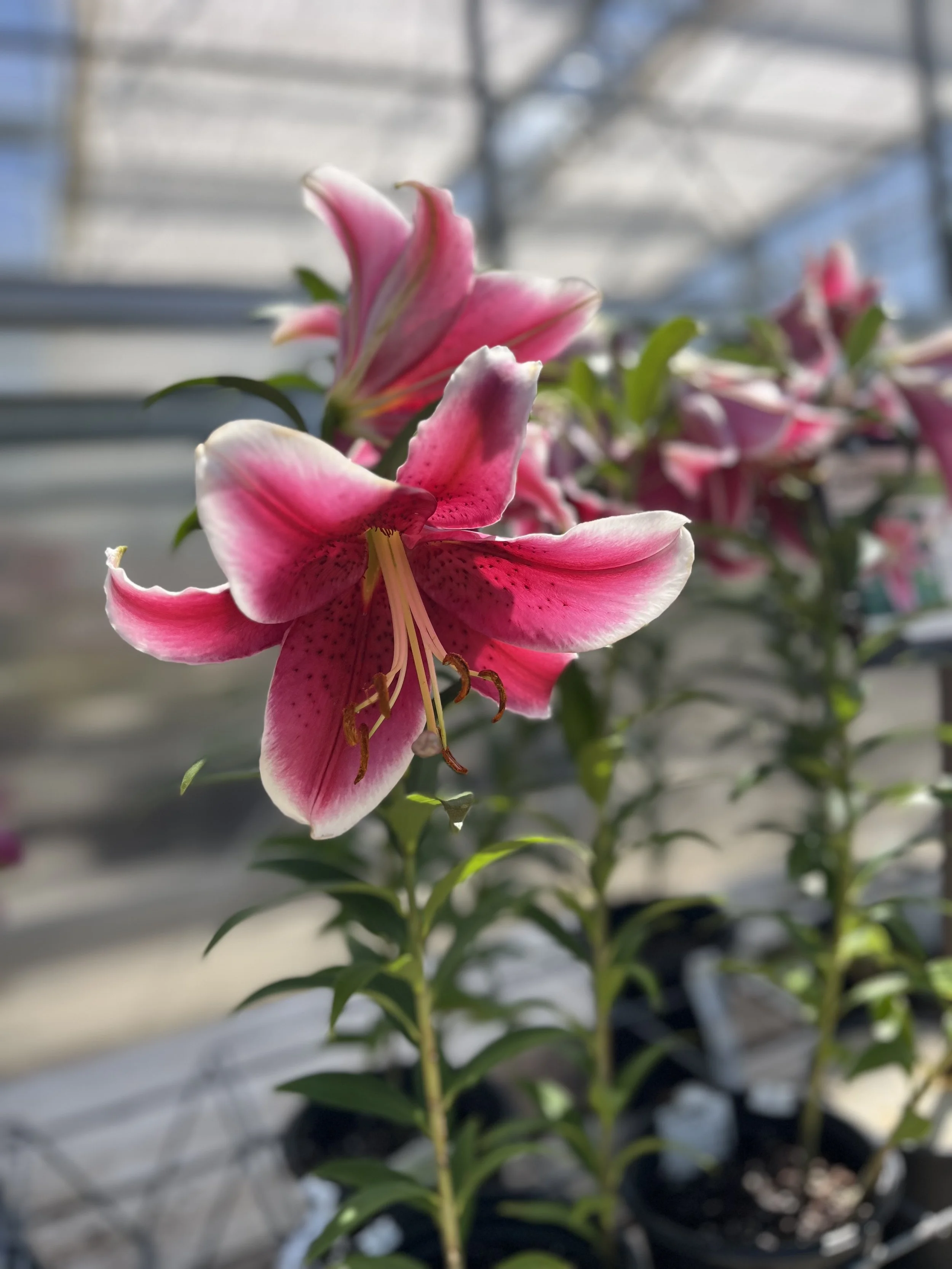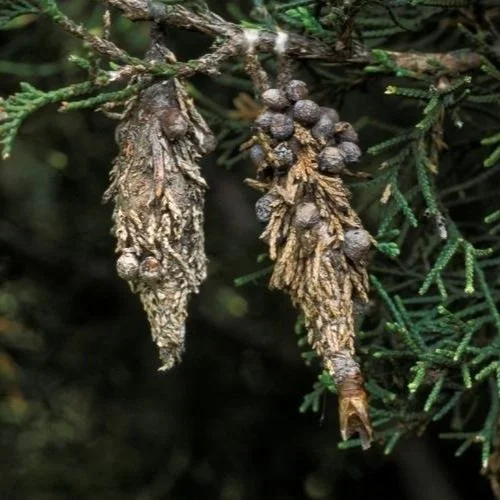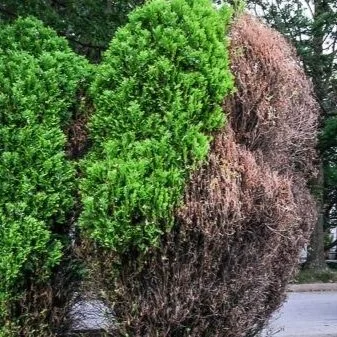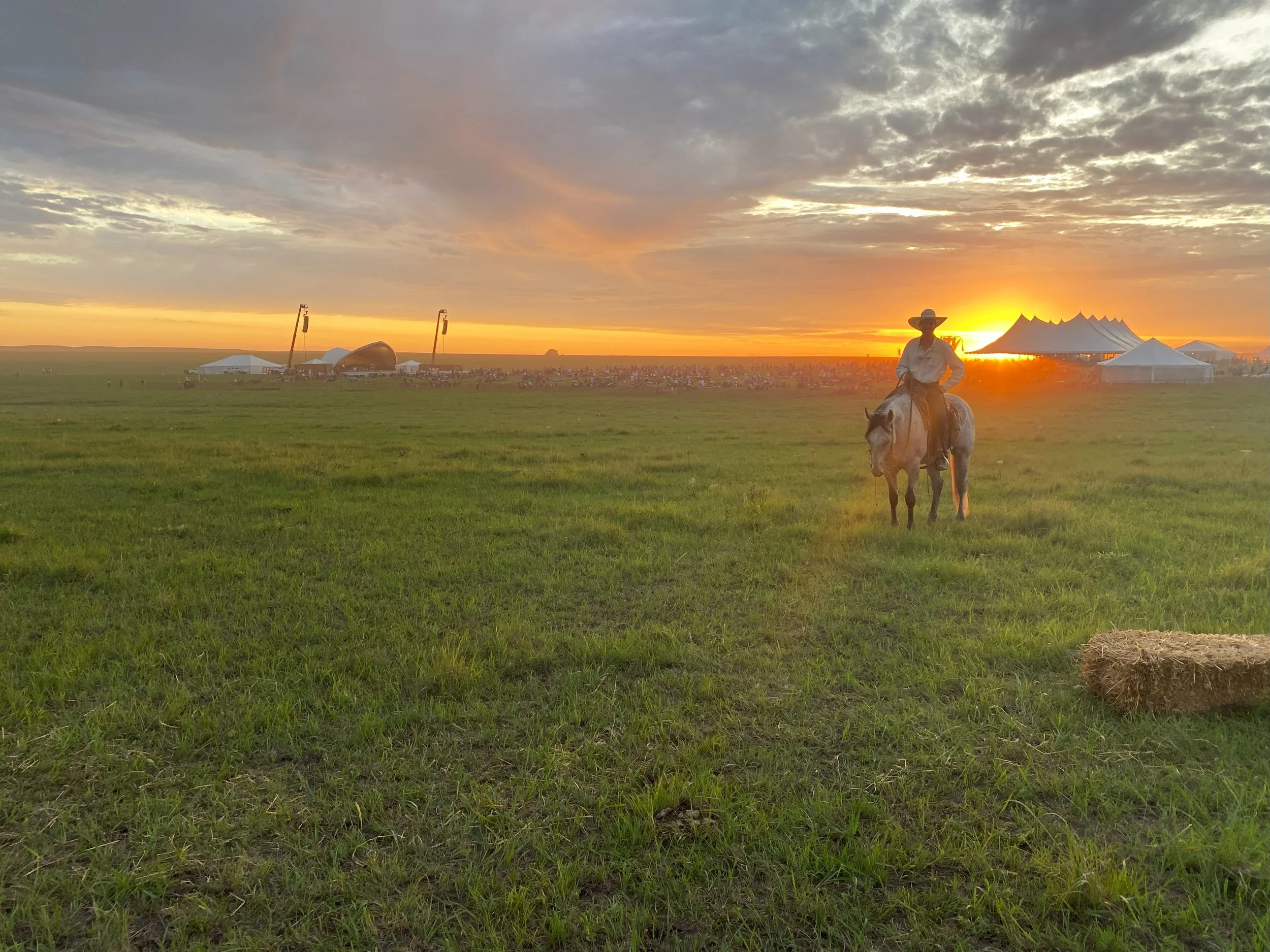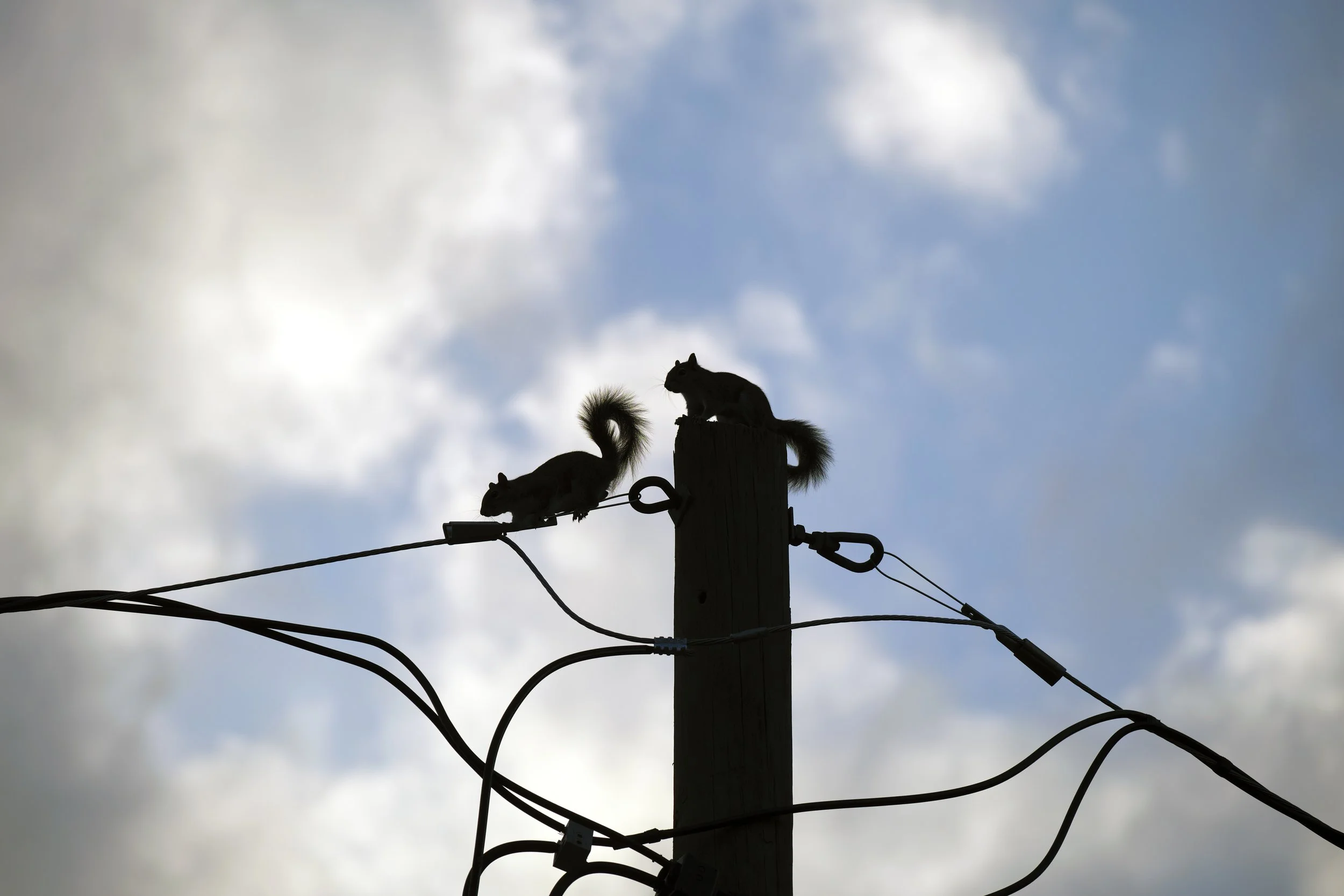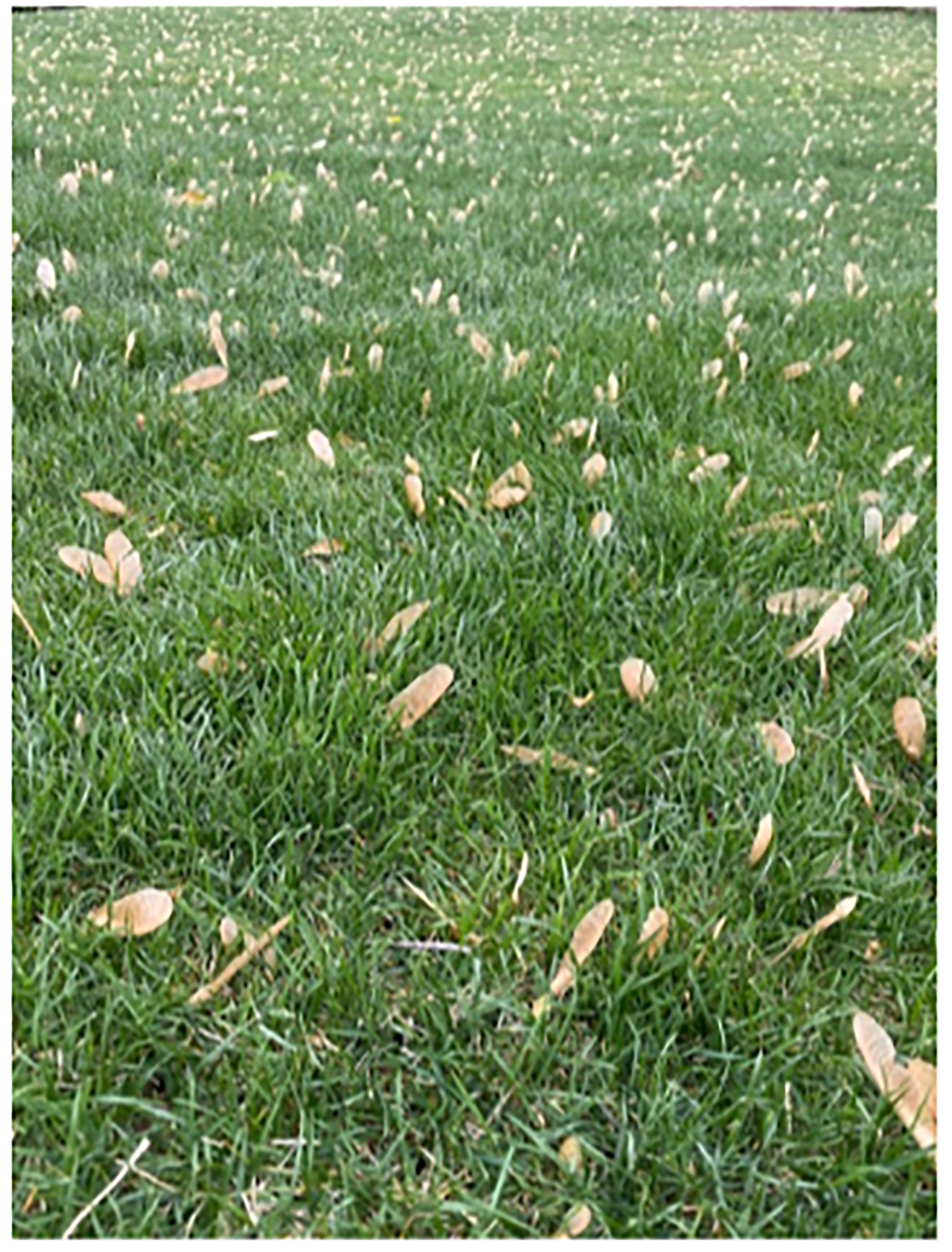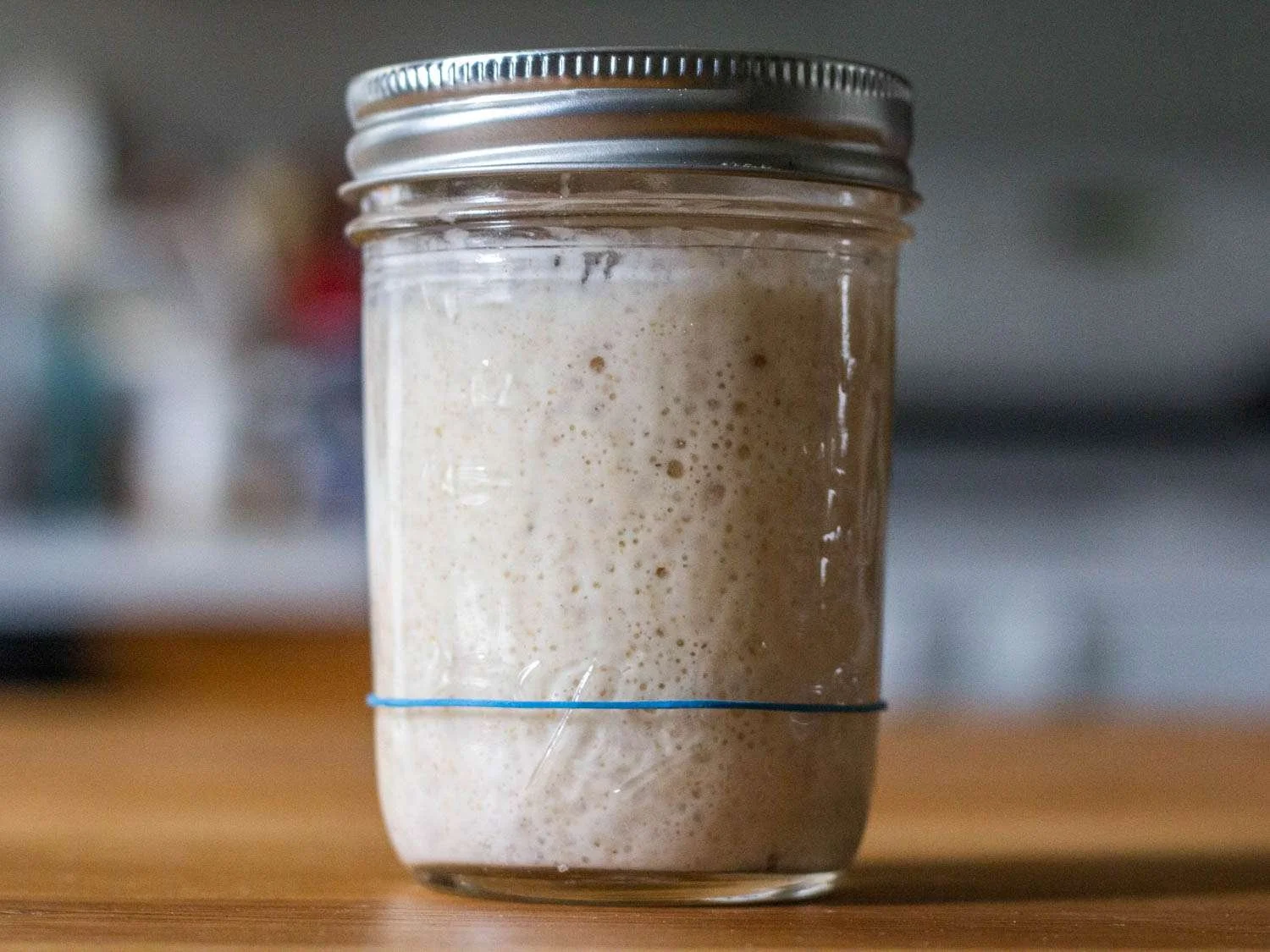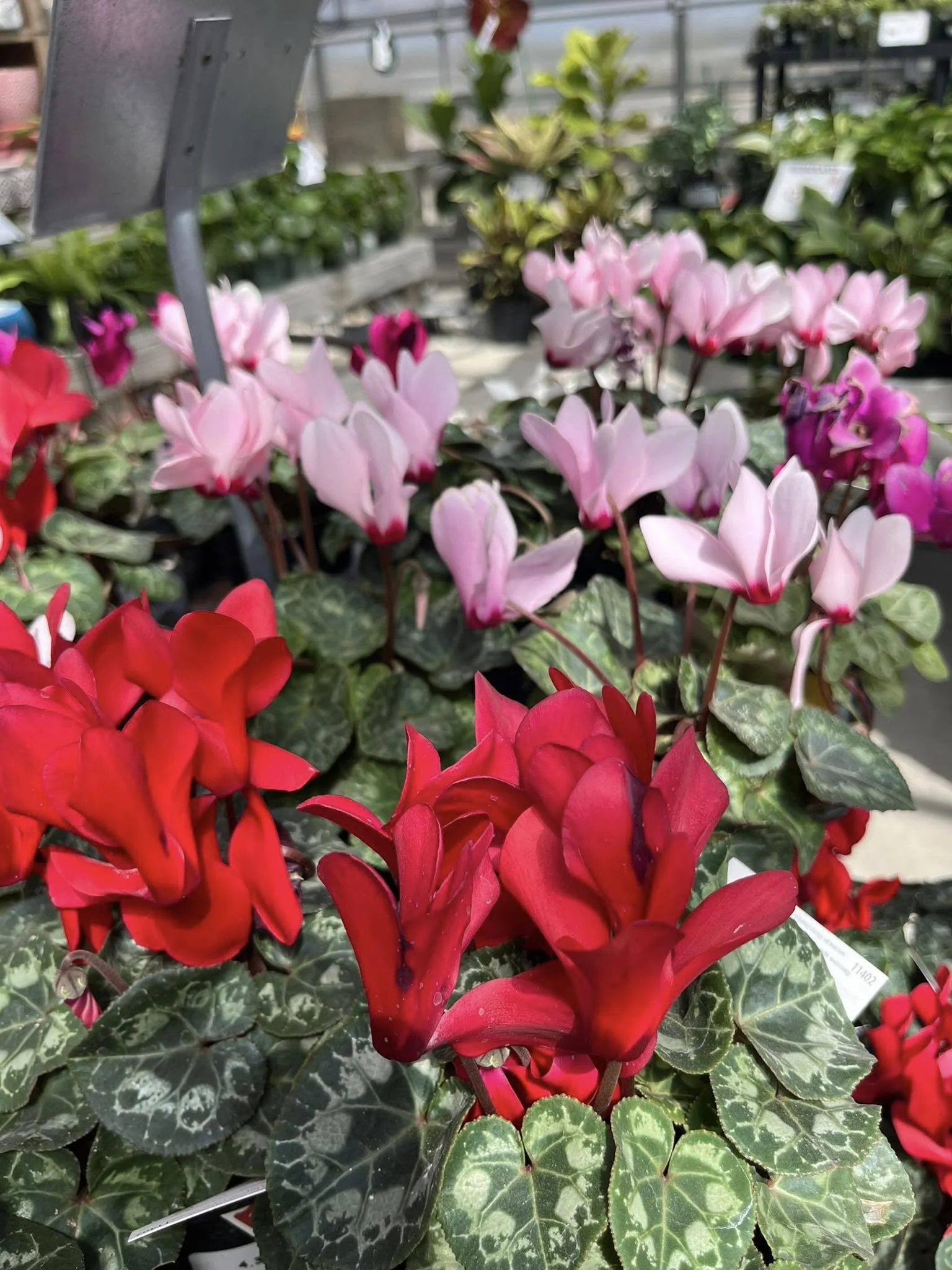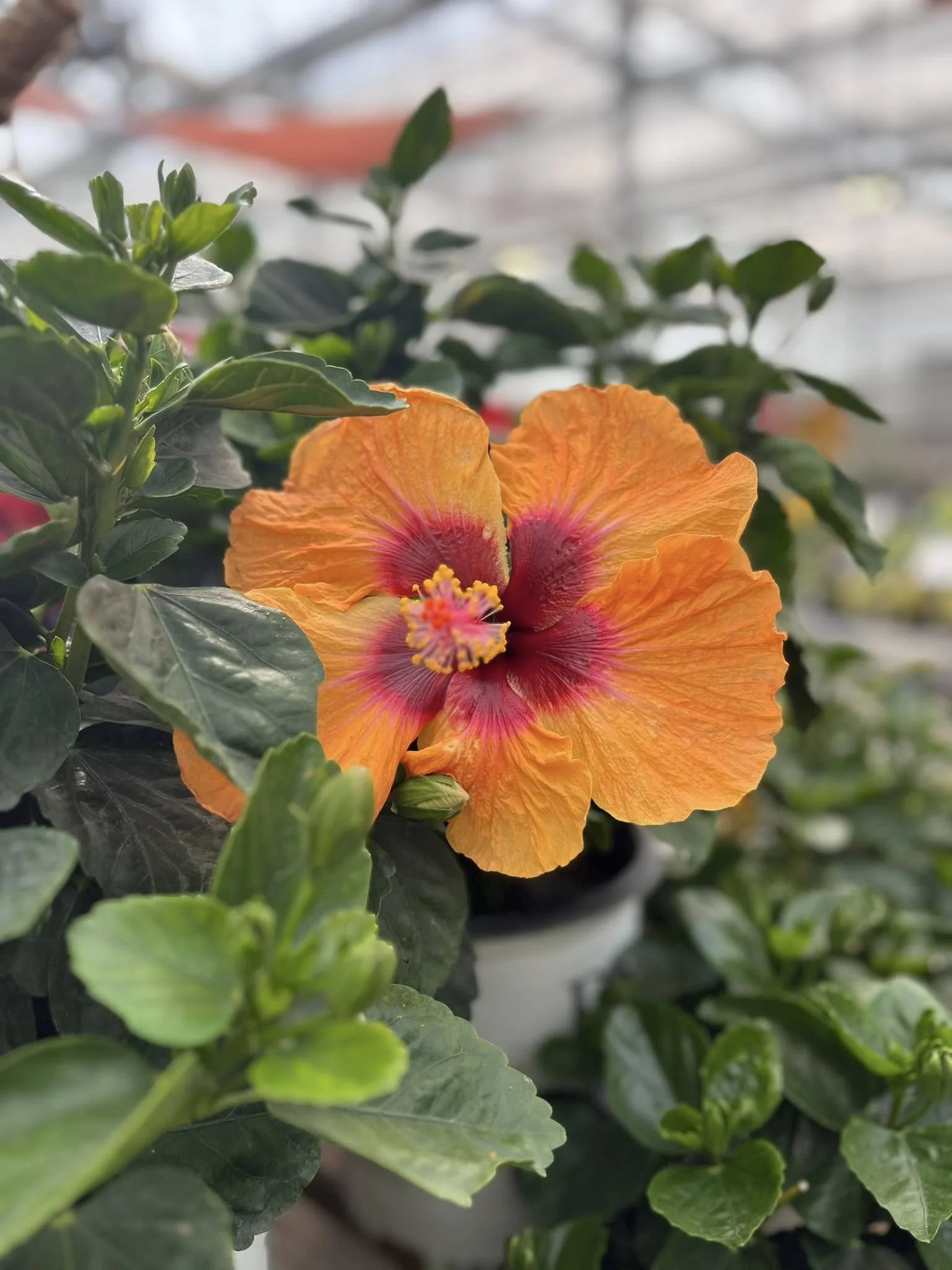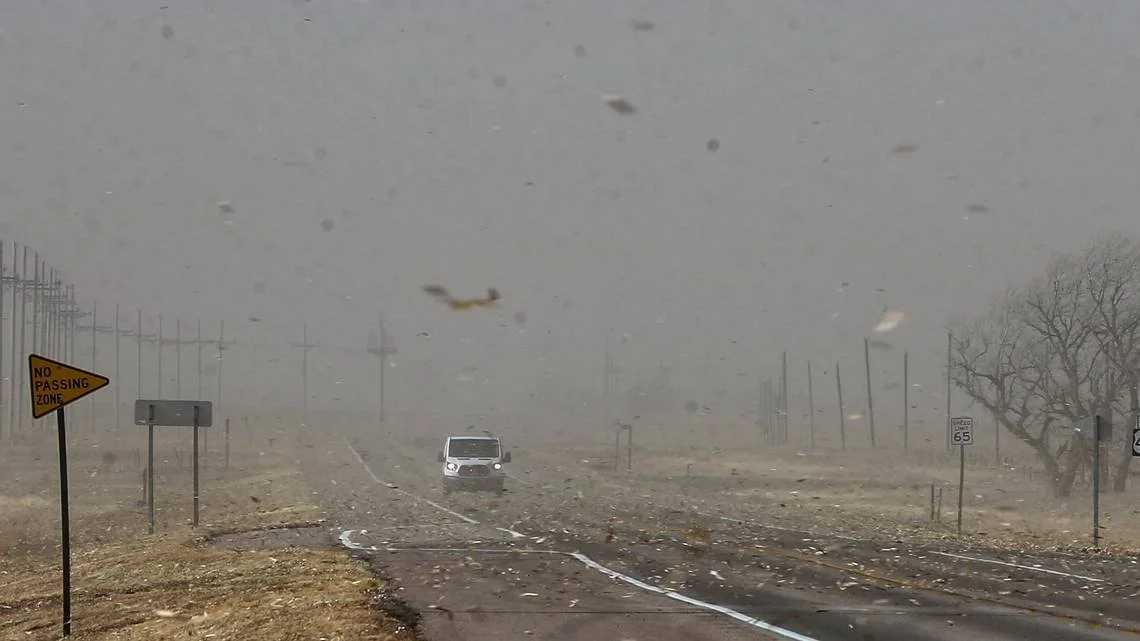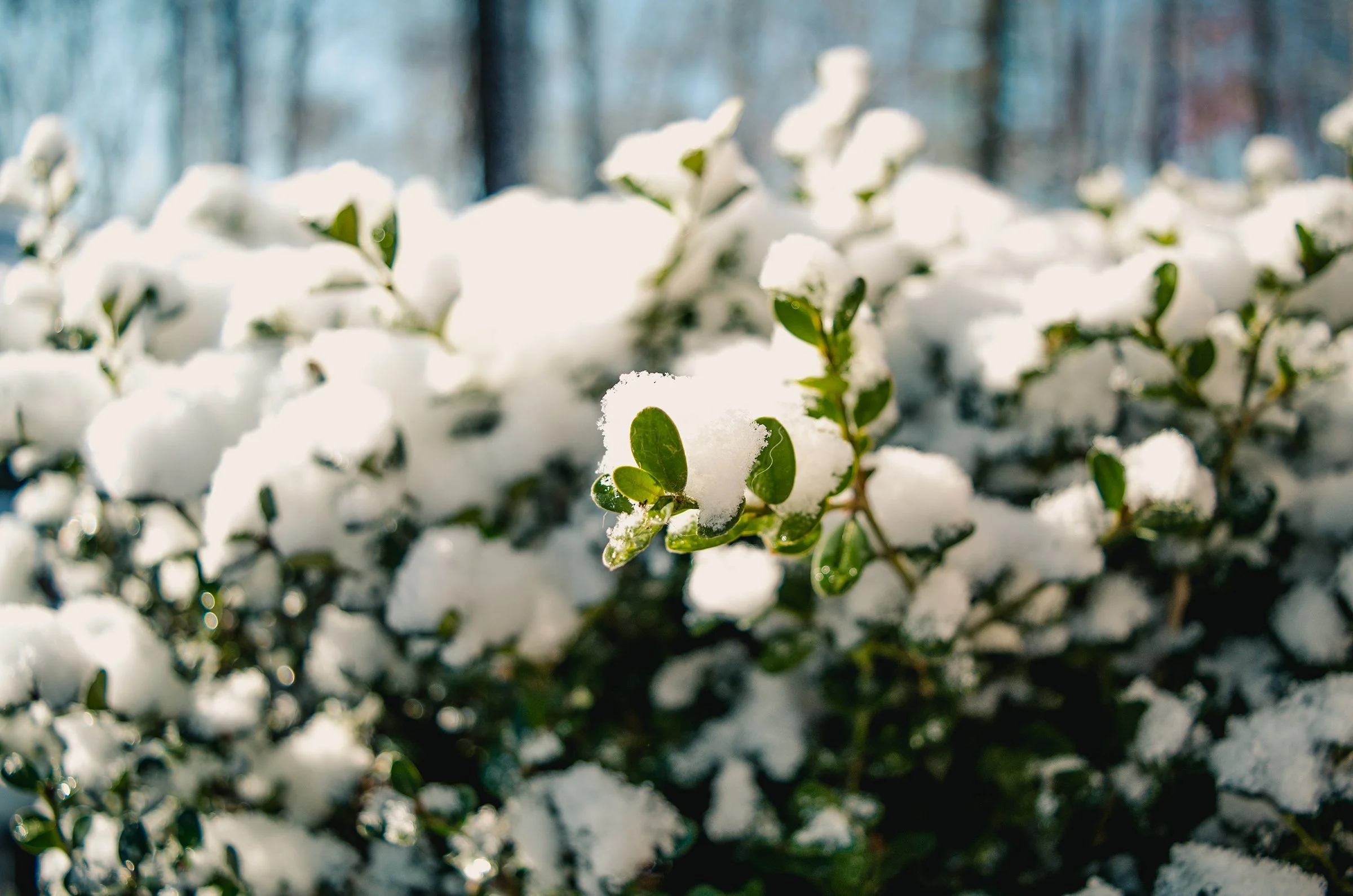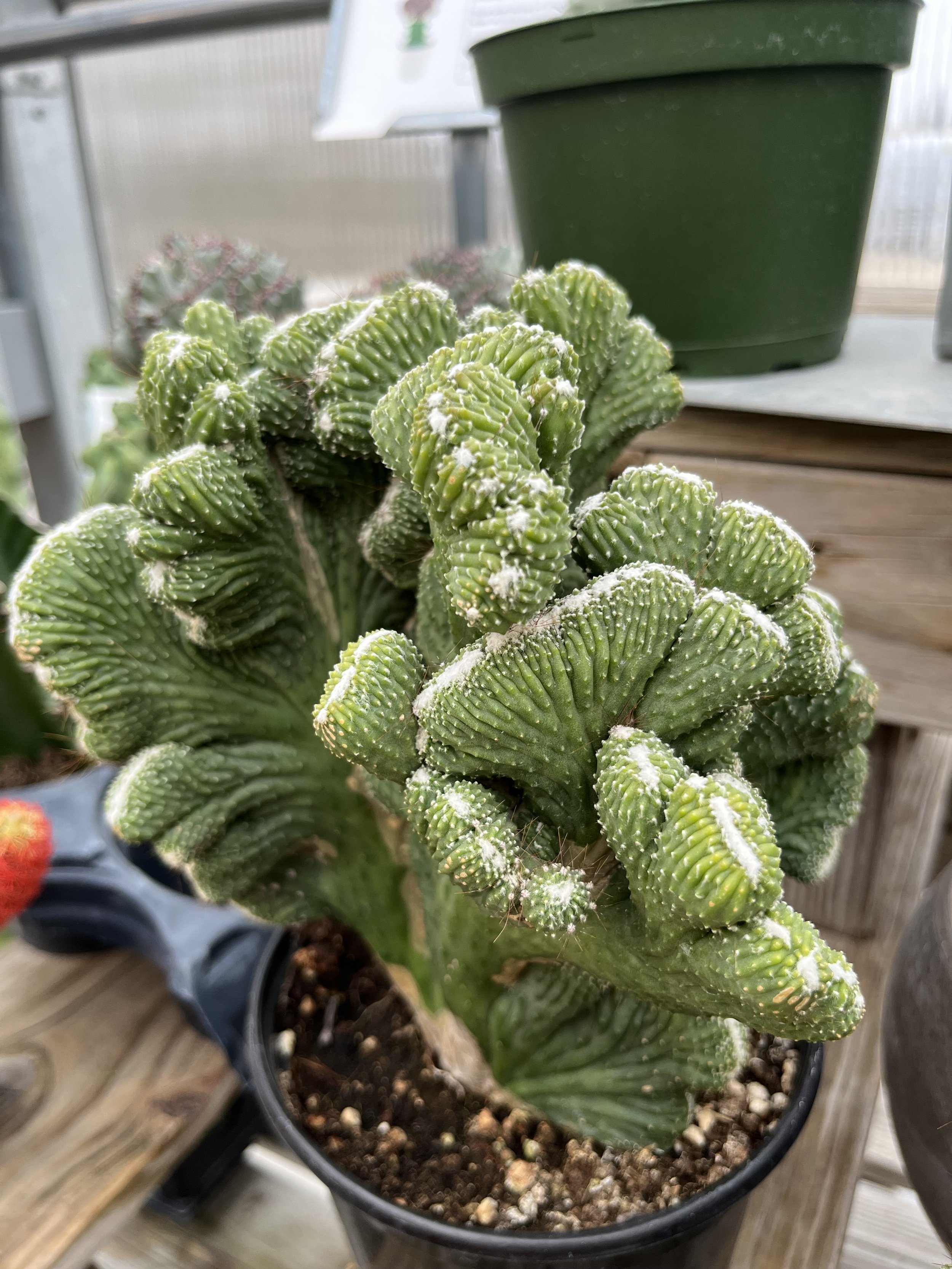Porch Pot Tag Team
The Holiday decorating has begun! …At home, that is.
The outdoors has always been my responsibility...the Christmas lights, the winter porch pots, and maybe a little fresh garland on the mailbox...and of course, the Christmas tree. Technically, that one’s inside, but it starts outside. It’s mine, too. I put it in the stand, I set it up in the living room, and then I add the lights.
Kim does the rest... all the rest!
But that changed a little bit this year. This past week, we tag-teamed on all the winter porch pots for the first time. I filled them with arrangements of fresh cut greens, and then she came in with all the decorative accessories to finish them off... pinecones, berries, ornamental balls, jingle bells, and the occasional LED light spray.! …
The Holiday decorating has begun! …At home, that is.
The outdoors has always been my responsibility...the Christmas lights, the winter porch pots, and maybe a little fresh garland on the mailbox...and of course, the Christmas tree. Technically, that one’s inside, but it starts outside. It’s mine, too. I put it in the stand, I set it up in the living room, and then I add the lights.
Kim does the rest... all the rest!
But that changed a little bit this year. This past week, we tag-teamed on all the winter porch pots for the first time. I filled them with arrangements of fresh cut greens, and then she came in with all the decorative accessories to finish them off... pinecones, berries, ornamental balls, jingle bells, and the occasional LED light spray.
The teamwork paid off, and they turned out amazing! Now, she can focus on decking out the indoors, and I can figure out when I’m going to freeze my tail off getting lights up outside... I should have taken advantage of all that nice weather we were having!
Thanksgiving has come and gone. I hope yours was wonderful! I always look forward to having family and friends together and sharing that day. I look forward to the leftovers, too!
Cameron Rees, General Manager
We’re decked in fresh and green here at the store. The greenhouse is full of fresh-cut fir Christmas trees, hanging out in a reservoir of water to keep them fresh and opened-up for full display on closer inspection.
They are joined by a wide assortment of fresh-cut greens, wreaths, roping, swags, and finished winter porch pots, all ready to make your home a little more festive through the holiday season.
Fresh and green... we’re here to help if you need it.
Happy Holidays!
—Cameron
give “green” this christmas!
Our Holiday Gift Card Deal is going on right now! From now through business hours on Christmas Eve, you’ll receive a $20 Skinner gift card FREE when you purchase $100 in Skinner gift cards. That’s a great deal! And perfect for the plant lover on your Christmas List. Or rather, the plant - tree - shrub - houseplant - flower - vegetable garden - landscaping - lawn-keeping lover on your Christmas List! They can do it all with a Skinner gift card!
Your skinner buck$ = holiday savings!
We’ve reached the final Skinner Buck$ Redemption Period of 2025. Now through December 14th, you can redeem your Skinner Buck$, using them to pay for up to 50% of your purchase. That equals holiday savings! All 2025 Skinner Buck$ expire on December 14th, so use them or lose them, as they say! Then, we’ll begin the new year with our 2026 Buck$.
plants for the holidays!
Trunk Protection: It Can Be Life or Death!
We stress the same thing all the time.
It’s not enough to purchase, plant, and water your new tree. Those are all vitally important, but you also need to provide some additional protection throughout the winter.
The good news? It doesn’t take much!
Just install a simple, inexpensive trunk guard late in the fall, and then remove it next spring. It’s really that easy.
The bad news? A lot of people don’t do it.
Maybe they haven’t heard the message, maybe they don’t really appreciate how important the advice is...or maybe it’s just one of those little things that gets forgotten in a busy life. Regardless, it’s sad because a few bucks and a few minutes can prevent a wintertime injury that can destroy all your hard work before you realize it.
Winter sunscald is what we’re trying to prevent. This is a sun-related, wintertime injury that has to do with tender trunk tissues being warmed by the afternoon sun during frigid winter temperatures. The warming rays of sunshine set trunk tissues up for cold temperature damage once the warmth of that sunshine goes away and cold reality returns. And it happens silently while you are staying inside and warm, regardless of how much money you spent on your new tree, how carefully you planted it, or how much time you have spent keeping it watered, mulched, and weeded.
Sunscald damage won’t show up right away; in fact, it often isn’t noticed for a season or two. If you have a young tree with a sunken injury to the lower portion of the trunk, and that sunken area is on the southwest side of the trunk, there’s a pretty good chance that’s from winter sunscald.
That damaged area is a wide-open door for secondary pests, especially tree borers and decay-causing organisms. These, combined with the loss of critical trunk tissues, leads to decline in health, and in most cases, eventual death.
Unfortunately, it takes several years for this process to run its course. So, in the end, not only has all your hard work and money gone to waste, but often a fair amount of your time as well. Years go by, and you’re having to start all over again. Frustrating!
And all it takes to avoid this life-threatening damage is a simple, inexpensive trunk guard.
If you’ve already got them at home, get them on...now. And if you need some, come on by, and we can get you fixed up. All newly planted trees should have trunk protection throughout the winter.
Those same truck guards also work great to help prevent trunk damage from hungry rabbits or rodents looking for a tasty winter snack, and to some extent, they can also help against damage from deer, although with deer, additional fencing/caging is highly recommended.
[Pro Tip: Keep those trunk guards somewhere you’ll be able to find them next year and reuse them on those same trees. Trees should be protected for the first few winters.]
more EVENTS, SALES & ANNOUNCEMENTS:
Keep an eye on this section in the future for all the important info and extras you won’t want to miss!
Can you smell the evergreen filling up your home? Each of our trees has been given a name. Once you select your tree, our staff will put a fresh cut on the trunk, will net your tree for transportation, and will help load it into your vehicle. How easy is that?
DON’T BLINK
For the last two months, we were all waiting for the weather to catch up with the calendar. It was way too warm for fall, wasn’t it?
But finally, it arrived.
The last couple of weeks have given us the fall we hadn’t seen yet...frosty mornings and lots of changing leaf color.
It seemed like it was never going to arrive, and now, it’s all but gone. Did you catch any of it?!
Fall color, like so many things in our gardens, doesn’t just wait around until you have time to enjoy it. So often, like this year, it comes and goes quickly, all the changes compressed into a few short weeks. If you don’t pay attention, you can miss it! …
Fall finally showed up...did you catch it?
For the last two months, we were all waiting for the weather to catch up with the calendar. It was way too warm for fall, wasn’t it?
But finally, it arrived.
The last couple of weeks have given us the fall we hadn’t seen yet...frosty mornings and lots of changing leaf color.
It seemed like it was never going to arrive, and now, it’s all but gone. Did you catch any of it?!
Fall color, like so many things in our gardens, doesn’t just wait around until you have time to enjoy it. So often, like this year, it comes and goes quickly, all the changes compressed into a few short weeks. If you don’t pay attention, you can miss it!
I spend a lot of time staring out our windows. My wife can attest to this! I love looking out onto our gardens and taking it all in. I love seeing what’s new, what’s different. It may be emerging growth in the spring, flowers through the season, or this time of the year, fall colors finally arriving. Staring out the window, a cup of coffee in my hand, and just enjoying the view...I’m in my happy place!
I also like looking for cool things. I detour through neighborhoods I don’t live in, I alter my routes to take me down streets I don’t normally travel, and I’m always for cool plants...especially this time of the year. My wife makes fun of me for “gawking”, but what can I say? I just like to enjoy the world around us! I never know what I’ll discover or how I’ll be rewarded...and what’s wrong with that?!
There’s a lot out there to be enjoyed if you get out there and if you give yourself the opportunity. That’s the key. Take new routes, explore new neighborhoods, walk around your own, and spend lots of time staring out your windows...the coffee is optional!
Cameron Rees, General Manager
We still have trees to plant if you’re interested in adding some fall color to your own landscape, and planting conditions are still prime. Don’t let that last little cold snap scare you. The fall planting season is done when the ground is too cold to plant, and that’s still a long way away. Take advantage of this planting opportunity!
When you come out, besides finding lots of great trees to choose from...many reduced in price...you also discover we’re pushing into the front end of our winter season. Winter greens, winter porch pots, Christmas trees, and Holiday décor have taken over the greenhouse. We’re in a season of transition, one foot in fall and another in winter. Let us know which one we can help you with!
—Cameron
WINTER PORCH POT WEEKEND: THERE’S STILL TIME TO GET SIGNED UP!
Can you believe this year is almost over? The warmer temperatures overstayed their welcome, in my opinion.
Cooler temperatures are here now, and November is right around the corner! With November comes Christmas trees, fresh greens, and, of course, Porch Pot Classes!
If you haven’t attended one before, it’s basically a class where we provide you with everything you need to make a Winter Porch Pot (for a fee) with fresh greens to put on the deck or patio and enjoy all winter long.
Can’t make it to one of the classes or prefer to do yours at home? We will have everything you need in a take-away kit!
If you are interested, please give us a call or email us to get signed up.
Call us today at 785-233-9657 or email Misty at mistyb@skinnergardenstore.com.
Winter Porch Pot Workshops:
Friday, November 21st, 1 pm & 3 pm
Saturday, November 22nd, 11 am, 1pm & 3 pm
Sunday, November 23rd, 12 pm & 2 pm
Christmas Trees Are In!
Nothing beats the smell of a fresh Christmas Tree!
We just received our delivery of trees from our grower in Wisconsin. Fresh Fir trees from 5’ to 11’ and all sizes in between.
We display them in our greenhouse, under cover and out of the weather, all standing upright in a stand, making them easy to see.
You’re invited to come check them out!
more EVENTS, SALES & ANNOUNCEMENTS:
Keep an eye on this section in the future for all the important info and extras you won’t want to miss!
IT SOUNDED LIKE A WARZONE
It was a full-on blizzard, I was in Kansas City, and it was time for me to head home.
This was the scene 29 years ago.
It was late October, and one of the earliest snowstorms on record had moved in while I was presenting a talk to the Johnson County Master Gardeners.
It was just raining when I arrived in KC. The temperature was above freezing...but just barely. The weatherman had predicted the precipitation, and he had said the temps were going to be hovering around the freezing mark, but I don’t remember a lot of talk about snow…
It was a full-on blizzard, I was in Kansas City, and it was time for me to head home.
This was the scene 29 years ago.
It was late October, and one of the earliest snowstorms on record had moved in while I was presenting a talk to the Johnson County Master Gardeners.
It was just raining when I arrived in KC. The temperature was above freezing...but just barely. The weatherman had predicted the precipitation, and he had said the temps were going to be hovering around the freezing mark, but I don’t remember a lot of talk about snow.
In today’s world, everything would have already been shut down, and activities would have been cancelled, including my lecture. But back in the good old days...when weather like this was more of a nuisance than a threat...we just pushed through it.
So, I made my drive to KC, not too worried about the drive back home.
But during my afternoon session, that rain turned to snow and the temperature hit the freezing mark. All that rain turned into the big, wet, fluffy flakes of snow. By the time I completed my talk and headed back to my truck, there was a thick carpet of white covering everything...and it was coming down fast!
I warmed up my truck, cleaned off the windshield, and headed west.
It was slow going and definitely one of those white knuckled drives I’ll never forget, but thankfully, I made it home safely.
When it was over, we were under 8 inches of snow. It wasn’t the biggest snowfall we’ve ever seen, but given it was only late October and the trees were still covered in leaves, it left a mark.
That wet snow was sticking to everything it landed on, including all the leaves that trees hadn’t dropped yet. All that extra weight did a number on things. I can remember standing on the front porch that night and listening to the sounds of the destruction. All the breaking branches sounded like a warzone!
That storm sticks with me because it was unusually early, it was fairly destructive, but most importantly, because it was only days before Kim and I were to be married.
When we had discussed selecting our wedding day, I only had a couple of requests...1) we needed to avoid our busy season and 2) I didn’t want to get married when it was hot outside...I didn’t want to spend our wedding day sweating away in my tux!
That’s how we ended up with a fall wedding.
It all seemed like a great plan...but we hadn’t anticipated a record-setting snow event only days prior!
As luck would have it, the next day, sunshine and warmer weather returned, and the snow quickly melted away. By Saturday, the ground was a little soggy, but the snow was gone, and our special day went off without a hitch. We’ve got lots of outdoor wedding pics to prove it!
It was a beautiful fall day, I got to marry the woman I loved...and I didn’t spend the day sweating away in my tux. Life was good!
And life is still good, 29 married years later.
Cameron Rees, General Manager
We haven’t seen snow yet this year, but we’ve still had crazy weather to deal with. Unseasonably cool weather to start September, unseasonably warm weather all the way to mid-October, dry stretches, wet stretches, and some annoyingly windy days thrown in there for a little extra fun...you know...just typical Kansas weather!
It’s been “fall” for a while now, but until recently, it just hasn’t felt like it.
Although the weather has messed around with the onset of fall colors, we’re finally starting to see the changes. Hopefully, we’re still in for a good show!
Just like 29 years ago, the weather still does whatever it wants to do...and we just get to deal with it.
Ain’t it fun?!
—Cameron
WINTER FUN PREVIEW!
When you come into Skinner’s in the next couple of weeks, you will see some changes happening. The winter season is quickly approaching, and we are getting ready! I know Halloween just passed, and we haven’t even had Thanksgiving yet, but we have to start somewhere, and sooner is always better than later, right? Poinsettias and Christmas Cactus will be showing up soon, along with some super cute Christmas decor! We will have several varieties of fresh roping, some pretty cool wreaths, and lots of fresh greens. You will start to see fresh Fraser Fir Christmas trees being hung in the greenhouse.
The Winter Porch Pot classes will start soon! If you haven’t signed up, do it soon! Classes are filling up quickly! Classes will be held on Friday, November 21st at 1 pm and 3 pm, Saturday, November 22nd at 11 am, 1 pm & 3 pm. A Sunday, November 23rd class is also available at 12 pm & 2 pm. This class will consist of a 12” pot with all the greens included to make a fabulous porch pot! I have also added an additional class on Saturday, November 15th. If you can’t make it to one of the classes or wish to do yours at home, we will have everything you need in a take-away kit! Call us today at 785-233-9657 or email me at mistyb@skinnergardenstore.com.
plant FALL COLOR!: beautiful options for your yard
IT’S TIME TO WINTERIZE!
Well, it’s beginning to feel a lot like winter is creeping up on us! Shorter days, cooler temps, and north winds tell me that it’s about time to start thinking about preparing my grass for the winter.
Even the most established grass needs a little winter prep, and Fertilome Winterizer is that prep. It’s a late fall fertilizer designed to help lawns store more food for winter survival, and to encourage thick and rapid growth and rooting in the spring.
Think of it as you're paving the way for lush, healthy spring turf.
You'll also notice your yard will look much better during the winter months and green up much better in the spring. In my opinion, it’s the most important fertilizer you need for your lawn.
Timing is extremely important. Late October through November is ideal in our area, so that means now is the best time.
…WHAT IF IT SNOWS?
White weather in the forecast? That’s fine!
Applications made before the snow will still be 100% effective. The snow covering your lawn will have no negative effects on the fertilizer. It will still be available as warmer weather returns, the snow melts, and your lawn resumes growth.
And while you are winterizing your lawn, don’t forget to winterize your landscape!
Right now is also the best time of the year for the application of Fertilome Tree & Shrub Food. Although trees and shrubs are losing leaves and showing signs of shutting down for the year, their roots are still actively growing and loading up on vital nutrients necessary for next spring’s growth. Fertilizing now is the best way to support that growth next spring.
We here at Skinner Garden Store are here for you and any questions you may have. Stop in today and let one of our outstanding staff members help you with your fertilizer needs.
—Melissa Anderson, Store Manager
more EVENTS, SALES & ANNOUNCEMENTS:
Keep an eye on this section in the future for all the important info and extras you won’t want to miss!
homeward
A few months ago, I wrote about our son, Cooper, heading off to Spokane, Washington, for his first contract as a traveling nurse.
My wife traveled out with him and helped him settle into his new place... moms are good at that. But that was three months ago, and that first assignment just came to an end.
Last week, I flew out to Spokane and traveled back home with him. It was a long drive!
We spent three days on the road cranking out the miles, but we also. …
A few months ago, I wrote about our son, Cooper, heading off to Spokane, Washington, for his first contract as a traveling nurse.
My wife traveled out with him and helped him settle into his new place... moms are good at that. But that was three months ago, and that first assignment just came to an end.
Last week, I flew out to Spokane and traveled back home with him. It was a long drive!
We spent three days on the road cranking out the miles, but we also took a little time to enjoy the trip. That included a stop in Bozeman to visit my brother and several detours along the way to do a little sightseeing. Our stops included the Devil’s Tower, Mount Rushmore, the Crazy Horse monument, the Black Hills, and a whole bunch of miles pushing through Montana and South Dakota. It really is beautiful country up there.
We even bumped into an old high school friend enjoying dinner with his wife at a random brew pub in Rapid City, South Dakota. How crazy is that?!
It was a fun trip! We got to spend some quality time together, and we got a chance to see some amazing sites.
But now I’m back home...and it’s time to get back to work!
As I’m writing this, I’m looking at the calendar and it’s telling me that it really is the end of October, but the weather has only just changed! Summer really held on this year, kind of like it has the last several years. But the cooldown is finally here, and I’m loving it. I think a lot of us are!
My hope is that the fall weather sticks around for a while and lets us enjoy it!
Regardless… It’s fall, and that means it’s a great time to do some planting! This is the easiest time of the year to get things going. Warm soils and cooling temps combine to create the ideal scenario for planting success. Take advantage of it!
Cameron Rees, General Manager
Maybe you’ve put off a project until the higher temps finally broke. Let’s talk! As always, we’re here to help if you need it. Come out, ask questions, and we’ll get you started or help guide your project in a more successful direction.
It’s such a pretty time of the year out here in the nursery! Ornamental grasses are at their best, fall color is setting in, late blooming perennials are still drawing in the occasional butterfly...it’s just a beautiful and fun time of the year.
I hope you come by and see us!
—Cameron
It’s redemption time! cash in your Skinner buck$
Our 2nd Skinner Buck$ redemption period of the year is underway! Redeem your Skinner Buck$ between now and November 2. We know you’ve been collecting, and there isn’t a better time to use those Buck$ for some great fall plants, holiday decor, or garden maintenance and winterizing materials.
If you haven’t heard of our Skinner Buck$ loyalty program, check out the information below. You can start collecting anytime! However, all 2025 buck$ must be used by the end of the Winter Redemption Period. Then, we'll start fresh with new buck$ for 2026.
LOOK AT ALL THE FALL COLOR!: CURRENT INVENTORY HIGHLIGHTS
more EVENTS, SALES & ANNOUNCEMENTS:
Keep an eye on this section in the future for all the important info and extras you won’t want to miss!
WINTER PORCH POT WORKSHOPS ARE BACK!
A Quick lesson in anatomy
My wife and I were traveling a few weeks back, and the hotel we stayed at had a lobby decoration that caught my eye.
It was a cross-cut section of an old tree trunk, and as you can see, it wasn’t just any old tree trunk...this one had a lot of character!
It’s just cool looking...the contrasting color of the sapwood and the heartwood, the rotted-out center and the unusual, curled growth...this cross section looks like a great big, grown by nature, “C”.
Besides just looking cool, this is a great example of how trees try to “heal” wounds.
Hang on, arboriculture class is underway!. …
My wife and I were traveling a few weeks back, and the hotel we stayed at had a lobby decoration that caught my eye.
It was a cross-cut section of an old tree trunk, and as you can see, it wasn’t just any old tree trunk...this one had a lot of character!
It’s just cool looking...the contrasting color of the sapwood and the heartwood, the rotted-out center and the unusual, curled growth...this cross section looks like a great big, grown by nature, “C”.
Besides just looking cool, this is a great example of how trees try to “heal” wounds.
Hang on, arboriculture class is underway!
First of all, trees don’t “heal” in the same way you and I do. If you scrape your knee, your injury scabs over, new tissues form, and eventually your wound is healed. You may have a scare, but things are pretty much back to normal. In a tree, damaged tissues don’t regenerate; they “compartmentalize”, or wall off the damage.
Compartmentalization is kind of like what happens on a big naval ship. There are hatches everywhere that allow compartments to be closed off and sealed to prevent water from overtaking the ship if, and when, a damaging event happens.
Trees do something similar. If damage occurs, surrounding tissues are sacrificed, and internal “walls” are established to hopefully stop the spread of wood-rot decay organisms and other unwanted things from the damaged area into the rest of the tree. One of those “walls” is the growth of new tissues over the outer portion of the damaged area.
This growth can be easily seen where branches have been cut. New growth forms from the edges of the wound and then, given enough time, the wound completely seals back over itself with new growth.
Problem solved!
However, this can take years, and in the case of large wounds, many years...or sometimes never at all.
That’s what’s going on here. This trunk cross-section is from an old tree that had a massive injury to its trunk, and the interesting growth is from the tree’s attempt to grow over the damaged area.
Without getting too deep into the tree anatomy weeds here, this cross-section shows evidence of the original injury, the following growth from the tree as it attempted to grow over the wound...that’s known as a callus roll...and a lot of trunk decay that occurred during the many years of growth following the original damage.
Basically, it was a cool hotel lobby sculpture, but if you’re a plant nerd like me...it was also a great example of how trees try to “heal” wounds.
Cameron Rees, General Manager
I can’t help noticing things like that...it drives my wife crazy!
There’s beauty from nature all around us if you just keep your eyes open.
October is in full swing, and a new season of fall beauty is underway with it. Pumpkins, mums, ornamental grasses, and fall-blooming perennials are dominating the current scene, and leaves taking on fall colors will be coming soon.
It’s my favorite time of the year. I hope you enjoy it, as well.
Fall is my favorite!
—Cameron
It’s redemption time! cash in your Skinner buck$
It’s time! Our 2nd redemption period of the year is here. Redeem your Skinner Buck$ between now and November 2. We know you’ve been collecting, and there isn’t a better time to use those Buck$ for some great fall plants, holiday decor, or garden maintenance and wintering materials.
If you haven’t heard of our Skinner Buck$ loyalty program, check out the information below. You can start collecting anytime!
We have a little something special for you!
We'd love to say thank you! Come out and see us Oct. 18-19 for our Customer Appreciation Weekend! We'll have food, drinks, and a whole lot of fall plants, fall decor... and of course, pumpkins and gourds! There's even FREE BEER on Saturday from 11-3! You heard that right! The rest of the snacks and drinks are free, too. So bring the whole family, bring the neighbors, and come on by. Details in the pic. Beer provided by 785 Brewing Company. Snacks and non-alcoholic drinks provided by Skinner Garden Store.
SATURDAY 10/18:
FREE BEER! (11am-3pm, provided by 785 Brewing Company) + hot dogs, snacks & non-alcoholic beverages
SUNDAY 10/19:
Hot dogs, snacks & non-alcoholic beverages
CURRENT INVENTORY HIGHLIGHTS
more EVENTS, SALES & ANNOUNCEMENTS:
Keep an eye on this section in the future for all the important info and extras you won’t want to miss!
FLOWERS FOR DINNER?
Farm to table.
That’s a popular catchphrase these days and a mission a lot of restaurants embrace...work with the local farms to source locally produced food, into their operations and onto their tables.
There’s logic behind the idea...support the local community, cut down on transportation inputs for food distribution, work with fresher, higher quality, and often better tasting ingredients, and embrace and celebrate the seasonality of the food we eat.
It’s a popular idea, and one that all of us participate in when we grow our own food.
Whether your garden is just a tomato plant or two on the patio or a large plot out back, if you’re growing things you eat, you’re participating in farm-to-table. …
Farm to table.
That’s a popular catchphrase these days and a mission a lot of restaurants embrace...work with the local farms to source locally produced food, into their operations and onto their tables.
There’s logic behind the idea...support the local community, cut down on transportation inputs for food distribution, work with fresher, higher quality, and often better tasting ingredients, and embrace and celebrate the seasonality of the food we eat.
It’s a popular idea, and one that all of us participate in when we grow our own food.
Whether your garden is just a tomato plant or two on the patio or a large plot out back, if you’re growing things you eat, you’re participating in farm-to-table.
Those of us who do, appreciate how much better produce fresh from the garden tastes. I taste it all the time, and I hear the same from friends we share our excess harvest with.
There’s an amazing feeling when you go out into the garden, do a little harvesting, and then turn that harvest into a meal for the table. It feeds your body, but it also feeds the soul!
My wife, Kim, celebrated a birthday the other day, and I made her a birthday dinner.
A friend of mine, who also enjoys cooking, has been on a recent mission to make stuffed squash blossoms. I’ve been picking a few for him to practice with, and it got me to thinking, maybe I could cook something with them too!
Squash flowers are really beautiful. They’re bright orange-yellow and look somewhat like a daylily blossom. I’ve enjoyed looking at them in the garden for years, but never considered actually eating them...until the other night.
I had about ten big blossoms in the fridge waiting for a project...and it turned out that project was dinner! I combined them with some other produce from our garden: red onion, garlic, basil, and bright red cherry tomatoes. A quick sauté and then a toss with some pasta, and we had a tasty...and attractive...birthday dinner.
I paired it with some homemade sourdough bread and finished everything off with a pawpaw I had harvested from a tree out back only days earlier.
It was farm to table in our own kitchen, it was fun, it was good...
...and there weren’t many leftovers!
Cameron Rees, General Manager
When it comes to growing things we can eat, there are so many possibilities. Veggie gardens can be productive all the way into the first days of winter, if you plant the right things...and there are loads of right things to enjoy in the fall...including pawpaws!
If you’d like to learn a little more about growing your own food, and celebrating some farm-to-table experience, come see us. We’d love to help get you started!
—Cameron
Fall Bulbs Are In… Fresh From Holland!
I can’t think of anything better than seeing all those big, beautiful colors popping up in the garden in the spring. The wide range of colors, shapes and unique blooms. Getting those planted at the right time will help make your spring beautiful, too. Now is the right time to start getting those bulbs in the ground. Dig, Drop, Done.
Fall is always the perfect time to plant bulbs. The cooler temperatures create the best conditions for them to create that period of dormancy and start getting ready for their big performance. I like to get those in as soon as early October, but you can do it as late as mid-November. You ideally want them to be in the ground to start establishing roots before there is a hard soil freeze.
The easiest beginner bulb is the Daffodil. Daffodils are deer-resistant, not bothered by squirrels, are reliable perennials, and tend to multiply slowly. You could always shoot for a big display of blooms; in this case, plant bulbs in big groupings in your planting area. Luckily, we have a wide variety of tulips, daffodils, crocuses, hyacinths, and allium in the store, ready and waiting just for you.
Plant those bulbs pointy side up, add in a good bulb food, and cover with some mulch to keep them warm during the winter, and in just a few short months, those beauties will be popping up. Stop on in today and grab yourself a good bulb planter or some Dutch bulb food to make the process a bit easier. Our staff is available for any questions you may have along the way.
—Melissa Anderson, Store Manager
fall color = fall decorating!
Fall inventory brings beautiful harvest colors, but also more of the bright, vibrant colors that have been adorning your lawn, garden, and porch all spring and summer. Mix and match to add a pop of color to your fall decor. Check out some of the beauties that will thrive this time of year and bring your fall decorating to new heights!
“Thymely” Advice... Watering Grass Seed
I planted some grass seed at home the other day to fix a spot I had torn up earlier in the season.
I planted it on a Monday, and only a week later, a good stand of new grass had replaced bare soil.
A lot of folks take advantage of this time of the year to plant some grass seed to get the lawn looking better.
A successful project starts with choosing the right seed...that part is easy, use our Gard’n-wise Premium Tall Fescue Blend.
The correct seeding rate and methods of application are important as well. We can offer guidance with that. Just stop in and ask for some help. And don’t forget the starter fertilizer. That should go down at the same time you are applying the seed.
But once that is all done, water is the key to success...but how much, and how often? That’s where many folks get into trouble.
All summer long, I’m telling people, “water long, slow, and infrequently”. Our goal through those summer months is to replenish soil moisture as needed. It takes a long, slow soaking to get water to move down a foot or two into the soil profile, and that’s what we’re trying to do. We’re trying to get water down deep so ALL the roots get a drink. And that drink only needs to come on an occasional basis, not every day.
But watering grass seed is just the opposite. Our goal when watering newly planted grass seed is maintaining an evenly moist seed bed. That seedbed is shallow...like the top inch of the soil... and keeping it moist requires frequent watering.
The surface of the soil is what will dry out first, and we should be watering often enough that doesn’t happen. That may mean daily, twice a day, three times a day, or even more frequently if the weather dictates.
But keep in mind, we are aiming to get water down deep like we do with summer waterings. We’re just trying to keep the upper portion of the soil moist. That means short bursts with a sprinkler...like a few minutes...or hand watering, something I never recommend for summer watering.
Keeping the seedbed evenly moist will give you the quickest and most uniform germination, and that will lead to the best-looking lawn in the end. Let things get too dry...even only once during that germination process...and you can ruin all your hard work. Don’t let that happen!
As always, if you need any help, just let us know. We’re glad to help!
—Cameron
more EVENTS, SALES & ANNOUNCEMENTS:
Keep an eye on this section in the future for all the important info and extras you won’t want to miss!
There’s Always Time For Wine!
My wife and I got away for a little vacation recently.
It was actually a combination of some vacation, a little bit of work, and a trip to see our son. Our son, Cooper, recently started a stint as a traveling nurse. His first contract landed him in Spokane, Washington, and that got the whole idea of a trip started.
Next came the need to head to Oregon for a little bit of work. …
My wife and I got away for a little vacation recently.
It was actually a combination of some vacation, a little bit of work, and a trip to see our son. Our son, Cooper, recently started a stint as a traveling nurse. His first contract landed him in Spokane, Washington, and that got the whole idea of a trip started.
Next came the need to head to Oregon for a little bit of work.
We partner with quite a few growers out in the Willamette Valley south of Portland, and I frequently travel out there to visit those growers and check out their crops. With the fall shipping season getting ready to kick off, August was good timing for a visit.
Lastly, there also happen to be a lot of vineyards out in that same area...and their wine is really good! Kim and I visited quite a few of them last year during an anniversary trip to Oregon ...and we were both looking for an excuse to go back.
Well...we found the excuse!
I planned my work trip, and we threw a little time on the front end to visit the coast and hit some wineries, tacked on some extra time pm the back end to visit Cooper, and threw a little work in there in the middle.
And we had a blast!
Getting a chance to see Cooper and explore Spokane was the highlight. He showed us around to lots of the local highlights. One of those was the river park downtown, where Kim discovered a “little” Red Rider wagon...just like the ones we used to use out here at the garden center...only a little bigger. That was a fun surprise.
It was a great trip, but now we’re back home and back to reality.
I’m really glad to see cooler weather has replaced the heat and humidity we’ve been suffering through the past number of weeks. I’m not a big fan of that stuff! I know it’s too early to think all the warm weather is behind us, but I still think it’s safe to say fall is getting started.
Cameron Rees, General Manager
That’s the direction we’re heading in out here at the garden center. We’ve been shipping a lot of new plants in for the new season, and little by little, the open spaces are filling in. Our fall season is underway!
If you’re ready to get your fall started, too, come on by. We’d like to help you kick it off to a great start!
—Cameron
“Thymely” Advice... It’s Time for the Orange Bag!
Summer is almost over, and boy, has it been a hot one this year. Fall should start rolling through in the next month or so, and so it is time for our next installment for your lawn, Fertilome Lawn Food + Iron.
Fertilome Lawn Food + Iron...or the Orange Bag, as we like to call it...can be applied with a drop or broadcast spreader. Make sure to spread it evenly over your lawn and water it in when you are done if rain isn’t in the forecast. Also, make sure to keep fertilizer on your lawn. Sweep or blow any product that lands on driveways, sidewalks, or the street back into the lawn. Not only does this keep things where you need them, but it also keeps stormwater runoff cleaner and prevents staining on hard surfaces.
If you are a member of our Skinner 3-Step Lawn Program, you have probably received the reminder to stop in and pick up your Orange Bag. This is the second application of the year and should go down around Labor Day. If you haven’t gotten in to get yours yet, now would be the time to come by
As always, our staff is knowledgeable and eager to help with any questions you may have!
—Melissa Anderson, Store Manager
Weekend plans? we’ve got a great idea!
Pumpkins are in stock and just in time for our Fall Kick-Off Party this weekend! We'll also have truckloads of fall nursery and flower arrivals. To top it off, Saturday (11 am-3 pm), we've invited Cities Edge BBQ food truck and Oasis Mobile Bar cocktail truck (11 am-3 pm). Then on Sunday, we'll be grilling up hot dogs with other snacks and drinks. So bring the family on over!
Come see all our new arrivals - trees, shrubs, grasses, evergreens, perennials, mums, asters, other flowering plants, grass seed, and lawn fertilizer for revitalizing lawns...Fertilome New Lawn Starter and Fertilome Lawn Food Plus Iron, aka, the Orange Bag...it’s time!
WHAT MAKES “GOOd” SEED?
When it comes to working on the lawn, it’s important to make sure you are working with good grass seed...but what does that mean?
Good seed is more than just a name on a bag. It’s making sure the stuff on the inside is going to give you what you are ultimately looking for...a nice lawn.
It’s important to take some time to look at the seed label and read the fine print.
Cheap seed is typically just that...cheap seed. The old adage, you get what you pay for, comes into play here. Lower quality seed means the wrong types of grass seed, bad varieties, weed seed contamination, and poor seed viability.
I’m always encouraging people to read the label. All bags of grass seed should have a detailed label on them. It’s the law. If you can’t find a label, don’t buy it.
When you look at the label, you’ll find important information. It will tell you not only what kind of grass seed it is, like tall fescue, for example, but it will also tell you percentages of each variety in the bag, as well as germination percentages of all the components. It will tell you how much of the bag you are purchasing is just random “stuff” - things like dirt and chaff - that will be labeled as “Inert Material”, and all bags will have some of that.
The last two things you want to pay real close attention to...” Weed Seed” and “Other Crop Seed”. These can ruin a bag.
Weed Seed is just that, seeds of various weeds that were harvested with grass seed and weren’t cleaned out before bagging. They will germinate and grow right there along with your grass seed and create weed crops that will have to be dealt with later. You can do it, but that doesn’t really make much sense...planting weeds so you can kill them later.
Other Crop Seed is the seed of other grass crops that make their way into the harvested seed. These can be a real problem because they often look significantly different, creating patchy lawns and disappointing results. And because they are grass plants, there isn’t a way to selectively kill them out later. You’re either stuck with them or you have to kill everything off and start all over.
Not good.
And the thing is, it doesn’t take much to be a problem. Here’s a quote from a Kansas State University Extension article...
“A homeowner has no easy way of knowing what the other crop is. If it is something bad, less than one-half of 1% can ruin a bag of seed. For example, if a bag of tall fescue seed contained 0.5% orchardgrass, the buyer would end up planting 12 to 16 orchardgrass seeds per square foot! Similarly, planting Kentucky bluegrass seed containing 0.5% rough bluegrass would result in about 25 to 35 rough bluegrass seeds per square foot of lawn. If your quality expectations are high, you want the other crop to be as close to zero as possible. Good quality seed often has 0.01% “other crop” or less.”
That’s why we focus on quality seed.
Our main recommendation is our Premium Turf-Type Tall Fescue Blend by Gard’nwise. We’ve worked with this blend for years and have always had great results.
It has 0.0% Weed Seed and 0.0% Other Crop Seed. It’s not going to get any better than that!
When you take the time and effort to plant a lawn, do it right, and you’ll enjoy your hard work for many years to come. Cut corners...plant cheap, low-quality grass seed...and you’ll suffer through those decisions for many years to come, too. Which would you prefer?
Stop by when you’re ready to tackle your project, and we’ll help you figure out how much you
need and give you all the steps you need to take to achieve success.
One final reminder...
Don’t forget to put down some starter fertilizer when you plant your seed. We stock Fertilome New Lawn Starter in a variety of sizes to fit your project. It’s easy to use and will help get your new stand off to a great start.
Happy Seeding!
WHAT’s new? …fall color!
It may still be pretty warm out there, but the cooler mornings and evenings mean fall is just around the corner. So, with that said, it’s time to get those tired-looking patio pots from summer spruced up again for fall!
Tear out those gangly petunias, the geraniums you’re tired of deadheading, and replace them with beautiful mums, ornamental peppers, and ornamental cabbage!
Trucks are arriving weekly, bringing outstanding fall color with them. Not sure what you need for your container? The staff at Skinners can help with that. Bring your container in, and we can pot it up for you or give you suggestions and gather the plants you need to do it yourself.
Regardless of the situation, we have stunning fall color to get your house looking good for fall!
—Misty Brown, Greenhouse Manager
more EVENTS, SALES & ANNOUNCEMENTS:
Keep an eye on this section in the future for all the important info and extras you won’t want to miss!
iT’S BOTHERED ME FOR YEARS
A few weeks ago, I started seeing brown spots in the lawn. And there were a lot of them.
Brown patches in lawn...in the heat and humidity of July...sounds like a disease, right?
That would be a logical conclusion given the time of year, but in this case, I could tell that wasn’t the right. So, what were they???
I’ve seen similar brown patches in our lawn before. They are always at random times of the year and in random locations...and I’ve never been able to figure out what’s going on.
It’s always the same. A patch shows up...or several patches show up...they look like dead spots in the yard for a while, and then eventually the crowns of the grass push up new blades, and a month later, everything looks normal again.
Weird, right?!
Like I said, I could tell they weren’t diseased. They didn’t fit the pattern of insect activity. Maybe pee spots? There are plenty of dogs in the neighborhood. That might explain things out front, but the back yard is fenced. Maybe other critters...raccoons, possums, deer? That seemed like a stretch, but I was running out of explanations.
What were they?! …
A few weeks ago, I started seeing brown spots in the lawn. And there were a lot of them.
Brown patches in lawn...in the heat and humidity of July...sounds like a disease, right?
That would be a logical conclusion given the time of year, but in this case, I could tell that wasn’t the right. So, what were they???
I’ve seen similar brown patches in our lawn before. They are always at random times of the year and in random locations...and I’ve never been able to figure out what’s going on.
It’s always the same. A patch shows up...or several patches show up...they look like dead spots in the yard for a while, and then eventually the crowns of the grass push up new blades, and a month later, everything looks normal again.
Weird, right?!
Like I said, I could tell they weren’t diseased. They didn’t fit the pattern of insect activity. Maybe pee spots? There are plenty of dogs in the neighborhood. That might explain things out front, but the back yard is fenced. Maybe other critters...raccoons, possums, deer? That seemed like a stretch, but I was running out of explanations.
What were they?!
For years, I had no idea. They’d show up and they’d always get better and go away. I just learned to live with them.
Then, the other day, I got the answer!
It was a mulch day. I had five cubic yards of mulch sitting in the driveway and a hot, sunny day to spread it. Bad scheduling on my part!
I knocked out the front yard earlier in the season. That took ten yards, but the driveway is in the front yard. The mulch and the final destination were fairly close together. A wheelbarrow, a pitchfork, and a long day did the job.
This time, however, everything was destined for the backyard. That would be a lot of wheelbarrow trips...long wheelbarrow trips...and it was hot!
But I had a solution!
I’ve got a little garden trailer I can pull behind the lawnmower for jobs just like this. It holds three times as much mulch as the wheelbarrow. That’s three times fewer trips between the pile and the back yard and a whole lot less work in the process. That’s a smart move in my book!
So, I got out the mower, hitched up the garden trailer, and launched into my project.
Things were going well. I’d load the trailer full of mulch, pull it up to the landscape beds needing attention, start spreading, and once empty, go back for another load.
Wash, rinse, and repeat. Little by little, the pile started shrinking.
I was about halfway through when I first noticed something. Patches of grass, still green in color, but all dried up like it hadn’t rained for weeks...and they seemed to be where I had parked my mower on the previous loads. It appeared that every time I stopped the mower in a new spot, I left a small patch of grass, still green, but all dried up.
I drew the conclusion that the heat from the engine, just sitting in place while I was unloading the mulch, was burning the grass blades. And guess what? The next day, all those spots were brown...just like I’d seen so many times before.
Bingo! It all made sense now. Those brown patches for all these years have come from me and my lawnmower. I was the problem! Every time I stopped to roll up a hose or look up a podcast to listen to...or stop to spread some mulch...I’d ended up damaging the turf under the engine of the mower. It was short-term damage, but it was visually obvious, and it had stumped me for years
I’m glad to finally have an explanation!
Now, I’m sharing this story to highlight a more important point. We all want to fix things that don’t look quite right, but until you accurately identify the problem, you can’t launch the right solution.
My brown grass was a problem, but it wasn’t a disease problem, and it wasn’t an insect problem. Both those issues can produce similar-looking symptoms...patches of brown grass...but that by itself isn’t enough to form an accurate diagnosis. Randomly applying fungicides or insecticides wouldn’t have helped. In fact, it may have very well created new problems.
I’ve helped a lot of folks through the years with plant problems, and I can tell you, it’s not uncommon for me to hear this during conversations...”I couldn’t tell what’s going on...and I didn’t want my plant to die...so I went ahead and sprayed it with...”. And the list of products I hear is extensive.
Randomly spraying “products” is like shooting in the dark. That’s a bad decision in so many ways, and it’s almost never a solution.
Cameron Rees, General Manager
Spot problems, then troubleshoot until you identify the correct action, and then...and only then...launch into your solution.
Sometimes that’s easy, but sometimes it isn’t...and that’s where we come to help.
When something in your yard has you stumped, come see us. Bring us samples, bring us lots of pictures, and then let’s talk. Sometimes the answers come quickly, and sometimes it takes a little more detective work, but usually we can get you headed in the right direction...at least we’ll try our very best.
—Cameron
Keep That Garden Soil Covered: Growing Cover Crops
You’ve planted, cared for, and are now harvesting the fruit of your labors, but what now? Pros know that planting doesn’t stop. Now’s the time to start planting cover crops.
What are cover crops, you might ask? Well, the name says it all, they are crops that cover! They cover the ground with lush growth in all the empty spaces where nothing else is growing. They are meant to stay in place, covering the ground and providing all types of useful benefits, until that ground is needed again.
Cover crops can be effective in preventing soil erosion and loss of valuable topsoil by protecting it from wind and rain. They compete with weeds for sunlight and nutrients, thus helping to reduce the number of weeds while trapping vital nutrients in the soil. Cover crops add valuable organic matter to soil, which improves soil fertility. Some types of cover crops (Legume or bean family) can actually pull nitrogen from the air and help fix it into the soil for future crops to utilize.
Choose cover crops that fit well in your space and don’t overcrowd or compete with existing crops that are still growing. You should also pick crops that are going to thrive in the season in which you are growing them.
For smaller gardens, I would suggest a Clover or Annual Ryegrass. These are well known for building soil health, reducing erosion, scavenging nitrogen, and suppressing weeds. Dikon Radish is another good cover crop. They penetrate deeply and help aerate and break up hard soils. There are many other like buckwheat, turnips, peas, and vetch.
Stop in today and check out our great selection of cover crops, and let us find which is best for your garden.
—Melissa Anderson, Store Manager
IT’S TIME TO THINK ABOUT FALL VEGGIES!
Fall is more than falling leaves and cooler weather; fall is also a great time to plant your favorite crops!
As we get ready for the weather to turn and things to start settling down, getting a jump on those fall veggie garden crops is also important. Some vegetables like broccoli, cauliflower, and cabbage need to be planted indoors around mid-July to early August so they can be transplanted in the garden by late summer. Others, like radishes, spinach, and lettuce, can be sown directly into the garden from late summer on into early fall.
Starting seeds indoors can greatly reduce the amount of stress seedlings can encounter because of our extreme heat during the summer. Try planting a little each week over a few weeks can extend your harvest and help manage the heat stress.
Lettuce, radishes, spinach, and turnips can be planted from mid-August to mid-September because they mature quickly, while carrots, beets, and broccoli are slower-maturing crops and should be started now to ensure they are ready before the cold.
Whether you’re refreshing your food storage or just keeping things going. Don’t overlook your Fall crops. Stop in today and check out our seeds. You’re sure to find yourself a great deal!
Direct seed outdoor
Beets
Carrots
Lettuce
Spinach
Turnips
Radishes
Kale
Swish Chard
Starting now for transplanting
Broccoli
Cabbage
Cauliflower
Kale
Brussel Sprouts
Swiss Chard
more EVENTS, SALES & ANNOUNCEMENTS:
Keep an eye on this section in the future for all the important info and extras you won’t want to miss!
KEEP ON SMILING!
“Don’t cry because it’s over, smile because it happened.”
I heard this line in a podcast I was listening to the other day...and I like it.
In the discussion I was listening to, it was being used relative to some pretty heavy life circumstances. It applied well to the conversation I was listening too, and I think it applies to a lot of things in our lives... even gardening.
See how I did that? Everything leads back to gardening!
For years, I have helped people with planting/landscaping/gardening decisions, helping folks figure out the right plants, the right combinations, the right choices.
The conversation usually flows around the noteworthy ornamental features like…
“Don’t cry because it’s over, smile because it happened.”
I heard this line in a podcast I was listening to the other day...and I like it.
In the discussion I was listening to, it was being used relative to some pretty heavy life circumstances. It applied well to the conversation I was listening too, and I think it applies to a lot of things in our lives... even gardening.
See how I did that? Everything leads back to gardening!
For years, I have helped people with planting/landscaping/gardening decisions, helping folks figure out the right plants, the right combinations, the right choices.
The conversation usually flows around the noteworthy ornamental features like flowers, fruits, or fall foliage. What color?...when?...and then the big one...how long? That’s where things usually start to break down.
“You mean it only blooms for two weeks? I want something that blooms all summer.”
And that’s when I get on my soapbox and start getting a little preachy. A show that never ends may sound good, but I would suggest, it would also get a little boring. I explain it like this. I really like chocolate cake, but if I ate it every day for breakfast, lunch, and dinner, I’d get tired of it...eventually...probably...maybe!
My point is, so many things are special because they are also infrequent. That is definitely true in gardens.
One of my favorite garden smells comes from the flowers of the Korean Spice Viburnum.
Their blooms fill the garden early each year with a spicy, clove-like fragrance I think is hard to beat. Seeing their flowers and enjoying their special scent signals to me winter is finally over and spring is officially here.
It’s a springtime ritual I look forward to every year.
That’s what makes them special. Those blooms, that only show up once a year, early in the spring, for a few short weeks...and they are amazing...and I love them.
I’m okay they only show up for a few weeks each spring, and...
...I don’t cry because the blooms are over...I smile because they happened.
Cameron Rees, General Manager
The garden is full of seasonality - spring blooms, summer produce, fall color. Things are changing all the time. That’s a good thing. It keeps life interesting.
Embrace the changes. Celebrate the seasonality!.
If you don’t have enough things in your garden to keep you smiling all season, come see us and let’s see what we can come up with. Let’s keep things interesting!
Okay. I’m getting off my soapbox.
—Cameron
P.S. I just picked the first ripe tomato of the year out of the garden. That’s another thing I look forward to each year!
it’s chigger season!
Chiggers are tiny mites that live outdoors in grassy or wooded areas near water. They thrive in warm temperatures, especially during the summer months, and attach to your clothes and bite your skin. You can get chigger bites by walking through infested areas such as woods, gardens, overgrown fields, or grass. The effects of the bites can be felt in a few short hours, but they can cause intense itching.
Every year, many people unintentionally pick up these and other creatures while they are doing normal garden work. The mites are so small you may not even notice the red dot on your skin until you feel the itch.
If you’re finding that your yard is infested, we recommend putting down Hi-Yield Turf Ranger. It is a granule that you spread over your lawn and landscape areas....and don’t forget to water it in! It contains a duo of active ingredients to both kill and prevent new infestations in your yard. Turf Ranger is also effective against ants, ticks, armyworms, and more.
While you continue to keep your yard ready for summer fun, why not stop those little buggers in their tracks and be ready for anything with a little help from us at Skinner Garden Store?!
“Thymely” Advice: Japanese Beetles... They’re Back!
The Japanese beetle is a destructive turf, grass, and plant pest. Beneath the soil, the growing grubs gnaw on grass roots, causing turf to brown and die. Above ground, the adult beetles feed on more than 300 ornamental and agricultural plants. They chew large, irregular holes between leaf veins, which makes the leaves resemble a piece of lace. Adult beetles have shiny, metallic-green bodies with bronze-colored outer wings.
Japanese beetles have one generation a year. The female adult beetle will leave the plant they are feeding on and burrow 3 to 4 inches into the soil to lay their eggs. They will return to feeding and repeat this cycle until they lay anywhere from 40 to 60 eggs in the season. They can be very destructive during this season because they are constantly moving around to find food. By midsummer, the eggs hatch, and the young grubs (larval stage) begin to feed.
There are a few things that you can do to help control the population of Japanese Beetles in your landscape. Insect controls are a great tool you can use. Fertilome Spinosad Soap or Hi-Yield Garden & Farm are two products we recommend.
Either way you choose to treat these guys, they are a yearly occurrence, so learning to spot them early and treat them effectively will be your best defense. Stop in today and let us help you find the right tool for the job.
—Melissa Anderson, Store Manager
“IN”VENTORY: HOT SUMMER COLORS!
It’s always a good time to add color, and these plants don’t disappoint with their strikingly bright summer hues. There’s still lots of summer left, and many of the plants below will take you all the way into the warmer parts of fall, as well. Cacti and other succulents can make for an easy addition to your potted plants and are low-maintenance. So, don’t be shy about continuing to fill porch pots or develop new pockets of pretty in your garden beds or landscaping. Grow your oasis!
more EVENTS, SALES & ANNOUNCEMENTS:
Keep an eye on this section in the future for all the important info and extras you won’t want to miss!
TURN LEFT AT NORTH DAKOTA
Our son just moved to Spokane, Washington.
For the last two years, he’s been working as a nurse in Kansas City. Now, for the next three months, he’ll be working a traveling nurse...in Spokane.
He left last week, his car loaded with his belongings, and his mom riding along as his co-pilot. It was a bittersweet moment saying our goodbyes in the driveway before he left. I was excited about his new opportunity, but I was sad to see him leave. It was tough!…
Our son just moved to Spokane, Washington.
For the last two years, he’s been working as a nurse in Kansas City. Now, for the next three months, he’ll be working a traveling nurse...in Spokane.
He left last week, his car loaded with his belongings, and his mom riding along as his co-pilot. It was a bittersweet moment saying our goodbyes in the driveway before he left. I was excited about his new opportunity, but I was sad to see him leave. It was tough!
The good news... they made the trek safely and got him all settled into his new home. Mom hung out for a few days and explored the area with him, and now she’s back home with me...and it’s time for Cooper to get to work.
I’m guessing a trip to Spokane is in my future!
Now, back to T-Town.
Back here at the Garden Store, we’re still plugging away. Summer has definitely settled in...and I can’t say I missed the heat and the humidity!
Things will be a little slower for us for the next stretch, but we’ll definitely still be at it. And yes, you can still garden in the heat...just make sure you put on your sunscreen and don’t forget to drink lots of water!
The same is true for your gardens...the water, that is. Make sure your gardens are staying well-hydrated, too. We’ve been catching timely rains for the most part so far this season, but chances are good that won’t hold out all summer. Eventually, hotter weather and not enough rain will be the reality. Be prepared to do some watering.
Cameron Rees, General Manager
If you find yourself motivated to knock out a summer project, or if you find an existing project is experiencing an issue, let us know, and we’ll try and help. We’ll be here all summer.
It’s been a nice spring, one of the prettiest I can remember for a long time. I hope you enjoyed it! And on behalf of our entire team out here, I’d like to thank everyone for your business this past spring. We really, really appreciate it.
Thank you!
—Cameron
“Thymely” Advice... It’s Time to Treat for Bagworms
As Summer begins, your trees and shrubs might be hiding a little secret. Small caterpillar-like worms could be invading and setting up homes right under your nose...bagworms! I’ll tell you what to look out for and what you need to do to control the population and potentially save those beautiful trees and shrubs you’ve worked so hard to maintain.
Bagworms are typically most active during the summer months, beginning in early June and continuing through summer. They resemble small ¼ inch caterpillars that have the beginning stages of their bag (silk woven plant debris), usually covering the bottom half of the insect. These guys are super small, but if left unchecked, they can do quite a bit of damage to your landscape trees. They tend to be super camouflaged among plants, often not being noticed until tremendous damage has been done.
These little guys live for a short year, with females dying after they lay their eggs and males dying after breeding. Because of their short life span, there are specific times that you can be most effective in treating them. While they are small, the bag that they construct serves as a sanctuary away from harmful predators and pesticides.
Spraying for this pest is going to be most effective when they are younger and still actively feeding. The larger the bag gets, the closer to the pupal stage where the male worm transforms into a moth, and the harder they get to kill.
Treating with Fertilome Spinosad will effectively reduce the number of worms infesting your tree. Later in the summer, when bags are larger, plucking the bags and placing them in a bucket of soapy water is about all that’s effective. Keep in mind, each female bag you leave behind to mature can potentially end with 500 to 1000 eggs inside them to hatch out next year.
Being vigilant and paying close attention to your landscape will greatly reduce the number of problems plaguing you. As always, we are here to help, just stop in or give us a call.
—Melissa Anderson, Store Manager
“IN”VENTORY: HOT SUMMER COLORS!
It’s always a good time to add color, and these plants don’t disappoint with their strikingly bright summer hues. There’s still lots of summer left, and many of the plants below will take you all the way into the warmer parts of fall, as well. Cacti and other succulents can make for an easy addition to your potted plants and are low-maintenance. So, don’t be shy about continuing to fill porch pots or develop new pockets of pretty in your garden beds or landscaping. Grow your oasis!
more EVENTS, SALES & ANNOUNCEMENTS:
Keep an eye on this section in the future for all the important info and extras you won’t want to miss!
HOME ON THE RANGE
I got a special treat this Father’s Day weekend. I got to attend the Symphony in the Flint Hills...and it was amazing!
My wife and I attended this event for the first time, last year. Once we were there, we knew we’d be back.
It’s just so amaing! I love Flint Hills, and the prairie that covers them...I can really geek out over that! Add in a symphonic performance in the middle of all that beauty and you’ve got a very special experience.
We made the journey this year, joined by both our daughters, a boyfriend and several good friends. Everyone was blown away. It was an absolutely wonderful event…
I got a special treat this Father’s Day weekend. I got to attend the Symphony in the Flint Hills...and it was amazing!
My wife and I attended this event for the first time last year. Once we were there, we knew we’d be back.
It’s just so amazing! I love Flint Hills, and the prairie that covers them...I can really geek out over that! Add in a symphonic performance in the middle of all that beauty, and you’ve got a very special experience.
We made the journey this year, joined by both our daughters, a boyfriend, and several good friends. Everyone was blown away. It was an absolutely wonderful event.
The beauty of the Flint Hills, as always, was breathtaking, the performance was nothing less exceptional, and the cattle drive...there’s always a cattle drive...was climactic as always. Like I said, it was amazing.
But now, it’s done. And I don’t just mean done until next year, I mean really done...as in it’s over, it’s finished...there will be no more. This was the 20th...and sadly...final event...ever. Sadly, this show won’t be “going on”. It’s going to be missed by a lot of people...including me.
I guess I’m just going to have to get my Flint Hills fix in other ways!
We’re lucky to be so close to such an amazing place. I’m sure for some, it’s boring; just a big sea of grass they see out their car windows as they are cruising down the interstate at high speed.
And it is a big sea of grass, but once you step into it, it’s a whole new world.
It’s an ocean of green full of wildflowers of every color...everywhere. I’m always blown away by the beauty I experience when I take the time to park the car and allow myself to experience it up close and personal.
There’s a lot there to discover. We’re lucky to have it so close.
There has been a lot more interest in growing native plants in recent years. A lot of that is driven by an appreciation and better understanding of the prairie. We talk more about pollinators, native wildlife, creating better habitat, and taking advantage of the inherent toughness of native plants.
Cameron Rees, General Manager
Landscaping trends have even changed over recent years. Naturalistic landscaping has become more popular and more acceptable. Little by little, more and more folks are beginning to appreciate the beauty of grasses and perennials (aka, wildflowers) as landscaping staples. Gone are the days of everything needing to be trimmed high and tight.
I’m glad to see these changes taking place, and I’m glad to see it continuing to become easier to bring a little bit of the prairie directly into our own lives through our gardens.
I think that’s a good thing...a very good thing.
—Cameron
SLUGS… YUCK!
Regular rains are nice, but they can also bring with them some problems...like slugs.
You may have noticed lately small holes on plant leaves. Whether it be small, smooth round holes in the center of the leaf, or jagged irregular holes throughout the plant, the most likely culprit is the common slug.
These slimy, not-so-attractive pests are lovers of moist, damp places and take advantage of rainy weather to emerge and feast on our plants, leaving these holes. Typically, you will not see them as they prefer to do their damage overnight in the cover of darkness, but left unattended, they will damage and sometimes destroy your plants in a matter of weeks.
There are many things that you can do to help prevent and even fight these creatures before they have had a chance to make a meal of your garden.
Keeping your area free of debris and leaves will prevent them from having hiding places to take up residence. Putting down a barrier between them and your garden is another good way to help prevent their damaging habits. Things like Diatomaceous Earth poured around plants can create a line of protection that they will struggle to cross, preventing them from getting under leaves and feeding.
Hi-Yield Snail & Slug Bait or Sluggo Snail Bait both provide effective control, and natural predators can be of a lot of help too. Promoting birds, frogs, and certain insect activity in your garden will help.
While we’re talking about pests in your garden, don’t forget to be on the lookout for moles in your yard too.
Moles eat grubs and other insects, tunneling underground to find their meals. They push dirt outside of their holes, so looking for mounds of dirt in your soil is a good way to find them. Common repellents like Fertilome Mole Go can help.
Whichever pest you find yourself needing help for, stop in today and let one of our friendly staff get you just what you need to handle them.
Happy Planting!
—Melissa Anderson, Store Manager
RAINY WEATHER FUELS DISEASE ACTIVITY!
Rain can be a great thing in moderation; however, with the wet weather can come some issues with your plants and trees to look out for. Rainy weather can lead to leaf diseases like anthracnose, leaf spot, and powdery mildew.
Anthracnose is characterized by dark lesions on leaves, stems, and fruit, often leading to premature leaf drop. Powder Mildew appears as a powdery-like substance covering leaves, whereas Leaf Spot causes small circular brown or black spots on leaves. Leaf spot and powdery mildew both inhibit photosynthesis in which can weaken a plant.
There are a few things that can help with leaf diseases. Removing fallen leaves and infected plant debris to reduce the spread of fungal spores, remove and dispose of heavily infected branches to prevent the spread of disease, thin dense foliage to improve air circulation and drying time and of course apply a good fungicide (Fertilome Copper Fungicide, Fertilome F-Stop or Fertilome Fungicide 5) to infected plants to help prevent the spread of the fungus.
Though we can’t always predict the rain, knowing what to do when you see the effects of wet, damp periods will greatly increase your chances of having a successful growing season with your plants. As always, we are here to help if you need just a little more advice or just want to get some information on what you’re personally experiencing.
Let us know if we can help!
—Cameron Rees
Tips to help your veggie garden thrive during the summer!
Watering is one of the most important aspects of a healthy summer garden. Deep watering less frequently will help the roots to dig deep into the soil, making it less susceptible to heat and drought. Shallow watering keeps the roots closer to ground level and less likely to bounce back from heat stress. Watering in the morning is best so plants don’t get stressed during the heat of the day from lack of water. During heat waves, you may find yourself watering more. Also, when watering, try to just water the soil and not the plant.
Mulch is the next most important. Mulch helps keep moisture in the ground and also acts like a barrier between the ground and your plants. Keeping soil-borne diseases at bay. Alfalfa mulch is one of the best mulches available for vegetable gardens. Not only does it help keep moisture in and suppress weeds, but it also is a source of slow-release nitrogen and other nutrients. It will stimulate beneficial soil microorganisms to help alleviate some post problems.
Provide shade to those plants that may be struggling in the heat. Use shade cloth in the heat of the day to take some stress off the plants.
Stay on top of pests! Monitor regularly and act quickly if you see any pests or foliage issues. The quicker you can get them under control, the better chance you have of a fruitful garden.
more EVENTS, SALES & ANNOUNCEMENTS:
Keep an eye on this section in the future for all the important info and extras you won’t want to miss!
IT’S TIME TO REDEEM AND SAVE!
Skinner Buck$ Summer Redemption Period is underway! Now through July 3rd! See details below!
ELVIS WOULD HAVE LOVED THEM
Tomatoes.
I’ve got two quick stories for you today revolving around tomatoes.
My wife and I stopped by Pendleton’s Country Market the other day, a family farm located on the outskirts of Lawrence, and growers of all kinds of produce and cut flowers. They also grow asparagus crowns. That’s what you plant to grow asparagus in your own garden.
Almost all the asparagus crowns we’ve sold here at our store in the forty-plus years I’ve been around our business have come from their farm. It would be fair to say…
Tomatoes.
I’ve got two quick stories for you today revolving around tomatoes.
My wife and I stopped by Pendleton’s Country Market the other day, a family farm located on the outskirts of Lawrence, and growers of all kinds of produce and cut flowers. They also grow asparagus crowns. That’s what you plant to grow asparagus in your own garden.
Almost all the asparagus crowns we’ve sold here at our store in the forty-plus years I’ve been around our business have come from their farm. It would be fair to say we’ve been doing business with them for a long time. They are great people.
They were selling a lot of asparagus the day we stopped by, along with lettuce and spinach, and a few other early spring garden items. But what they were selling the most of were tomatoes, grown in their greenhouse. Those were walking out by the box full.
And it wasn’t hard to figure out why.
They were big, bright red, super juicy, full of flavor...and we were able to enjoy them almost two months before our gardens were going to be producing their own. They were a special “sneak-peak” on the summer season, and they tasted like the real thing...because they were the real thing.
They didn’t last long!
That was story number one. The second happened recently as well.
I was visiting with a friend the other day, and the topic of growing tomatoes came up. It was the usual tomato gardener questions... Do you have your tomatoes planted? How many plants do you set out? What varieties do you plant? What’s your favorite?
Ask that last question to a room full of people and you’re going to get a roomful of different answers... and be prepared for some arguing!
Anyway, the tomato talk led to BLT talk and then eventually to this... tomato, mayonnaise, and peanut butter sandwiches. Yes, I said peanut butter. I couldn’t believe what I was hearing, so I asked him to repeat it...twice... and it came up peanut butter each time. My friend assured me it’s one of the best sandwiches he’s ever had and looks forward to them each summer. I told him I thought he was crazy, and he told me I needed to give it a try... when the tomatoes started producing.
So, that actually brings me to a THIRD story.
I recently found myself in possession of some nice big red juicy tomatoes, and armed with this newfound information, I decided I needed to give it a try.
So, I slathered some bread with mayo, added what seemed to be an appropriate layer of peanut butter, then cut a thick slice of tomato to sandwich in between. And then I dove in.
To my surprise, it wasn’t bad.
The flavors actually worked together pretty nicely. I couldn’t believe it! I don’t think it will ever take the place of the BLT in my world, but I could actually see myself making this one again...
...Maybe!
Cameron Rees, General Manager
Anyway, we’re still a ways away from harvesting any tomatoes from our own garden, but all the recent rains and cool temps are doing wonderful things. Things are growing strong, and our garden is lush and green. Our landscape is the same, only with the addition of lots of flower
color. Lush, green, and colorful is how I’d describe our nursery right now, too. It really is pretty out here right now.
Come on out and check it out for yourself, and if you have a favorite way to enjoy your fresh garden tomatoes, let me know.
—Cameron
natives
Natives….what are native plants? These are plants indigenous to Kansas, which means they are found in given geographic areas without human involvement. In short, they are plants you see growing wild in a prairie, woodland, and wetland setting. These plants include wildflowers, grasses, trees, shrubs, vines, ferns, and so on and so forth. The planting of natives has grown and become more popular over the years. One of the reasons people want to plant natives, besides the obvious hardy factor, is the beneficial aspect given to our wildlife. All insects that feed on native plants do so because it is that particular plant that they need to survive. Without native plants, these insects would not exist, i.e., monarch butterflies feed on Milkweed. Some of these insects also feed our native birds, fish, spiders, etc. Big picture….We need natives to feed the insects, which in turn feed wildlife… without them, they wouldn’t exist.
With all of that being said, if you have been thinking of planting natives or, after reading this article, you are intrigued and want to plant some natives, we have a good selection of trees, shrubs, grasses, and perennials. If you want to read up on what is native, go to www.kansasnativeplants.com.
—Misty Brown, Greenhouse Manager
START SCOUTING FOR BAGWORMS
Bagworms…it’s that time again!
Bagworms will soon be hatching and getting ready to chomp their way through your landscape.
Although they aren’t super picky on their diet, junipers, spruces, and arborvitae tend to be their favorites, so make sure you watch those closely.
Control of the bagworms is best done just after they hatch. That is in late spring or very early summer. Our recommendation is to use a Fertilome Spinosad. It is a highly effective organic option. Thoroughly spray the infested plant or tree while the worms are feeding. Other products that provide good control also include Hi-Yield Garden and Farm Insect Control, Hi-Yield 38+, or Hi-Yield 55% Malathion Spray.
By late summer, sprayed controls become less effective, so hand removal is best.
The key to effective bagworm control all comes down to timing. So, make sure you come in today and get your treatment while you still have ample time to treat these pesky little worms.
As always, we are here to help.
I LOVE HYDRANGEAS!
It’s hard not to love Hydrangeas.
Their massive blooms demand attention, adding wonderful color to the summer landscape. My garden is full of them, and I’m always looking for a place to add more.
This is the time of the year their blooms start showing up, and then from here on, the show just keeps going.
There are four primary types we grow in our gardens...
Panicle Hydrangeas - Many hydrangeas are great shade plants...but not all. Panicle Hydrangeas are that exception. These popular garden plants should be planted in the sun. That’s where they grow and flower the best. These bloom in the summer, with the earliest flowering selections showing color in June and the latest blooming form not reaching their peak until July or even August. Selections range from tall forms like Limelight and Quick Fire Fab that reach 6 to 8 feet in height to smaller forms like Bobo, Little Hottie, and Little Lime that can easily be kept in the 3-4’ range. These all bloom white; however, if...and that’s a big if...we have cool temperatures during the bloom cycle, many selections will take on shades of pink and raspberry-red as the blooms age. Unfortunately, that’s not something that happens very often for us. Our summer weather just stays too hot. Don’t plan on it, but celebrate it when it happens.
Smooth Hydrangea – This is one of the best! It blooms reliably, and it stays smaller. That makes it easy to fit into all kinds of landscape spots. Most forms bloom white, but a few newer selections offer shades of pink. Just pick a spot shaded from the afternoon sun and keep it watered. You’ll be rewarded with blooms each spring.
Bigleaf Hydrangea – When folks are picturing hydrangea as a shrub with large blue, pink, or lavender blooms, this is the one they are thinking of. Their flowers are stunning, unfortunately, this is the toughest form for us to grow successfully. Its stems are prone to winter damage, which is an issue. All the flower buds that will emerge in the spring overwinter on those stems. When winter kills them back, the potential for flowers goes away too. For best flower production, pile leaves or mulch over the plant for the winter several feet high. This is the type you should never prune back. Newer forms offer the potential for in-season flower production. I’d stick with those types. That’s what we offer here.
Oakleaf Hydrangea – As their name implies, these have leaves that look very much like large oak leaves. As I write this, ours are just coming into bloom in our backyard. Their flowers are born in large cone-shaped clusters, often reaching a foot or more in length. This form offers nice fall color as well, with the potential of burgundies, reds, and oranges. All bloom white, but much like their cousins, the Panicle Hydrangeas, their blooms can fade into shades of pink and raspberry. However, just like their cousins, it takes cooler weather to drive the change. We just don’t see it very often.
That’s not everything there is to know, but hopefully it’s enough to get you a little excited about this amazing plant. If you’d like to know more, just come out and see us!
—Cameron Rees
what’s new?… Gooseberries!
The gooseberries are ready!
Gooseberry plants, that is.
We ran out of these popular garden plants early this spring season, but we just released new crops out onto the sales lot, and they are ready for planting in your garden.
We have two varieties to choose from...
Pixwell – This has been a garden staple for decades. It is a heavy producer with fruits that start out green, ripening to rosy-pink. It is often described as being less thorny, but thorny they still very much are. Care should still be taken while harvesting. They bite!
Captivator – This is an American/European cross with fruits that ripen red. It is also less thorny than other selections. For best fruit production, plant in full sun. They are self-fertile, so you can get by with planting just one.
STAFF PICK: garden phlox
Misty Brown, Greenhouse Manager
Summer is quickly approaching, and in the garden world, that means summer perennial color. A favorite of mine is Garden Phlox. Phlox have been popular in perennial gardens since the 1940s. The Europeans recognized their potential and so began the breeding of select varieties. These varieties were then reintroduced into the US. There are over 800 named varieties of Phlox to date. Powdery Mildew has been a menace to Phlox until the cultivation of varieties that have been bred to be resistant. A popular series is the Flame series. If you have a sunny area in your garden that needs a pop of color,, butterfly attractor, and an all-around feel-good flower, I would choose Garden Phlox! The clusters of fragrant flowers bloom for several weeks in the summer. Give it some rich, well-drained soil and good air circulation, and it will be good to go! —Misty
more EVENTS, SALES & ANNOUNCEMENTS:
Keep an eye on this section in the future for all the important info and extras you won’t want to miss!
TREE RATS
Squirrels can be a pain.
Every year, as I’m pulling oak seedlings and walnut seedlings out of every garden nook and cranny...including the pots on my patio and the baskets hanging from the eaves... that thought comes to mind. Squirrels can be a real pain.
A couple of Sundays ago, I ran across one that took things to a whole new level.
I came into work early to try and get caught up on things. As I walked into the store, I was bombarded with a chorus of battery backups, all sounding their alarms. It was battery backup chaos!…
Squirrels can be a pain.
Every year, as I’m pulling oak seedlings and walnut seedlings out of every garden nook and cranny...including the pots on my patio and the baskets hanging from the eaves... that thought comes to mind. Squirrels can be a real pain.
A couple of Sundays ago, I ran across one that took things to a whole new level.
I came into work early to try and get caught up on things. As I walked into the store, I was bombarded with a chorus of battery backups, all sounding their alarms. It was battery backup chaos!
I quickly set aside my plans of getting caught up on things and tackled the issue. I just as quickly realized I was getting nowhere. As soon as I’d reset one of the units, it would trip again, signaling a warning. I tried again and got the same results. So, I went on to the next unit. Same story. An attempt on a third unit brought the same results.
Nothing was responding. I needed help!
A quick call to our electrician and a brief description of the situation resulted in a possible answer... a partial power outage.
He explained what he thought might be going on and told me how to check. A quick examination of the transformer pole confirmed his hypothesis. I could plainly see a popped fuse hanging from one of the service lines, resulting in a partial power outage.
I pulled out my phone to call the power company to report the problem, and that’s when I noticed something lying on the ground... a dead squirrel... directly below the blown fuse.
Now it all made sense. Somebody had a bad night, and he was lying right in front of me.
A quick visit from the power company fixed the problem and got us back in business. The power company even hauled off the dead squirrel, as a courtesy. Now that’s customer service!
So, problem solved... or so I thought.
The power was back on, but the fallout from the power outage event was just beginning to surface. It started with register problems, but of course, those didn’t show up until customers began lining up with purchases in hand. This was on the weekend, and it was a beautiful spring day. That means it was busy, and trust me, on a busy spring day, register problems are not good.
Very quickly, we learned we had only one out of our five checkout stations fully operational. That’s when the line started forming, around the corner and out the back door. Not good!
Luckily, everyone was very patient and understanding. Thank you for that!
Our staff was patient and understanding, too. Situations like that are very stressful, but they handled things amazingly well and pushed through the problem while we were working in the background to get equipment back up and running.
Slowly, one checkout station became two, and two became three. With the added stations in operation, the line was quickly worked down. A short time later, the remaining stations were operating again, and we were back to normal... or so I thought.
Cameron Rees, General Manager
The next morning, I got a call. It was another computer issue. The day after that, we were addressing issues with controls on the new greenhouse. Then, a week later, as the temps started warming up, we discovered the AC to the staff lunch room was knocked out as well.
All because of a squirrel.
That puts the “inconvenience” of pulling volunteer oaks and walnuts out of my pots into perspective!
We’ve been enjoying great weather lately, and things are really responding nicely. The color out there right now is just amazing, isn’t?! If you’re not seeing that in your own yard, it’s time to change that! Come see us and check out all your options...
...and while you’re out here, watch out for rogue squirrels!
—Cameron
It’s almost time
It’s getting to be that time of year again... grub control time.
If you’ve been plagued with white grubs in the past, then control may be in your future. All it takes is an easy application of Fertilome’s Hi-Yield Grub Free Zone.
Time your application to go down anytime from June to early July. All applications should be followed up with irrigation or rainfall to move the active ingredient into the soil.
It’s that easy!
fertilize for color!
Now that hanging baskets, patio containers, and all the pots on the front porch are being planted up and looking pretty, it’s time to talk about keeping them that way.
The most important thing is water, lots and lots of water.
Plants in containers need to be kept moist... not soggy wet... but also not so dry that plants wilt. Do this by watering thoroughly, meaning watering until water runs out of the bottom of the
pot, and then let things dry out a bit before you water again. This might be daily, it might be several times a day, or it might be every few days. It all depends on how big the plants are, how much they are growing, what the weather is like, how big your containers are, and how good your potting mix is. There are a lot of variables. Just make sure you’re paying attention to things and staying on top of them.
[And here’s a simple tip to make watering a little easier... use bigger pots. Bigger pots hold more soil, and more soil can hold onto more water. More water retained means less watering. It’s that simple!]
Good watering will keep your plants alive, but eventually, fertility needs to be addressed. Potting mix is great for growing containerized plants, but it doesn’t have a lot of fertility. That needs to be added if you want to keep plants growing well and producing lots of flowers.
There are two ways to do this: water with water-soluble fertilizers or top-dress with slow-release products.
Water-Soluble, Solutions – These fertilizers are made to readily dissolve in water. Just mix according to label directions and water plants with the solution, making sure to water thoroughly (and remember, that means water is running out the bottom of the container). Use weekly.
Fertilome All-Purpose Water-Soluble Plant Food – Works great on all potted plants, including houseplants and succulents.
Fertilome Blooming and Rooting Soluble Plant Food – Great for flowering plants. We like to alternate this one with the Fertilome All-Purpose Water-Soluble Plant Food, fertilizing with each one on alternating weeks.
Slow-Release Options – These products release their fertility over time, allowing you to apply once and then get weeks or even months of results.
Fertilome Garden Cote – A balanced formula that can be used with all kinds of potted plants and hanging baskets. One feeding can last up to 6 months.
Fertilome Start & Grow Premium Plant Food – This is a higher nitrogen formulation. It’s frequently used at transplant time with all kinds of trees and shrubs, but it also works well on containerized plants. This is a 3 to 4-month formulation.
Hi-Yield Grower’s Special – This is also a higher nitrogen formulation. It works great on all kinds of container plants and is, in fact, what we use to fertilize all our trees, shrubs, and perennials through the growing season.
The obvious question is which one is best? The answer is simple... It’s the one you actually use!
It really doesn’t matter which product you use. They all work well. Just find that one that fits your schedule and your style of gardening, make a commitment, and use it! You’ll be glad you did!
coming up: holiday hours
We will be OPEN for business on Memorial Day, Monday, May 26, from 9 a.m. - 2 p.m.
more EVENTS, SALES & ANNOUNCEMENTS:
Keep an eye on this section in the future for all the important info and extras you won’t want to miss!
HELICOPTERS!
I just had to stop and take a picture of this yard the other day...
These are Silver Maple seeds “decorating” a freshly mowed lawn.
It’s a scene repeated all over town. Silver Maple seeds covering lawns...and sidewalks and driveways and patios...and the list goes on. They are everywhere right now.
If you live near one of these, you’re familiar with these seeds. Technically, they are samaras. But we all know their true name...“helicopters”...and “helicopters” are large, they are produced in great quantities, and this time of the year, they are everywhere.. .…
I just had to stop and take a picture of this yard the other day...
These are Silver Maple seeds “decorating” a freshly mowed lawn.
It’s a scene repeated all over town. Silver Maple seeds covering lawns...and sidewalks and driveways and patios...and the list goes on. They are everywhere right now.
If you live near one of these, you’re familiar with these seeds. Technically, they are samaras. But we all know their true name...“helicopters”...and “helicopters” are large, they are produced in great quantities, and this time of the year, they are everywhere.
These seeds are a big part of what gives Silver Maples a bad name; all the seeds, along with the mess they create. And don’t forget about all the volunteer Silver Maple seedlings that will be popping up the rest of the season. We’ll all be pulling them out of everything for the rest of the
season.
Frustrating...but impressive too.
Think about it. Those seeds end up everywhere. Lawns, landscape beds, they end up in hanging baskets...they even fill the gutters! And you don’t even have to have a Silver Maple in your yard to be in the game. They really do end up everywhere.
(Aren’t we all so lucky?)
Silver Maples, like so many plants, are really good at getting around...which brings me to my next thought...weeds. Weeds are really good about getting around, too. Maybe even better. Much like the helicopters in the photo, their seeds end up everywhere, too, only they’re almost
impossible to see and there’s a whole lot more of them. That’s why there are always weeds to fight.
So, where am I going with this?
Gardening is work.
Just how much depends on a lot of things, such as the size of your project, how well thought out and designed it is, and how well implemented it is. These all play into how much effort you will need to put into post-planting care and maintenance.
Cameron Rees, General Manager
Mother Nature gets involved in this part, too, and we all know she has a mind of her own.
The yard full of Silver Maple seeds reminded me of that. There are always challenges being thrown our way, and often those challenges result in more work.
But that’s true with most things. Fishing, golfing, baking, cleaning, exercising, sewing, carpentry, raising a family...everything takes work. More than likely, additional challenges surface, but still, we plug along. In the end, hopefully, the hard work pays off, and the reward is that much greater.
Gardening can be a lot of fun. But I’ll also never lie to anyone, it’s going to be some work. Just remember, that’s not a bad thing.
—Cameron
DON’T FORGET MOM!
Here’s your heads up...Mother’s Day is quickly approaching!
Sunday, May 11, is the day for all of us to give thanks to that special person who raised you, helped raise you, or was there for you in a motherly way. They adore you, but also put up with you on occasion, they worry (always worry!), and they want the best for you!
Now….show her you appreciate it!
Hanging baskets bursting with color or patio containers for sun or shade are always a great option. Is she into cacti and succulents? We have a great selection of unique ones at the store.
Our new greenhouse is full of beautiful houseplants from Pothos to African Violets. Wonderful-smelling Jasmine and colorful Tropical Hibiscus are also great gifts! We have lots of planters and can always plant something special just for her! We can help you find the perfect gift!
BLUEBERRIES ANYONE!
Blueberries are a popular garden plant. They are best known for their tasty fruits, but they also sport attractive spring flowers, bright summer foliage, and vibrant fall color.
Although fairly easy to care for once established, they do need a little extra work on the front end to ensure success.
Blueberries are closely related to azaleas and rhododendrons, and like their cousins, they prefer to grow in acidic soil. You can make your soil more acidic through the addition of soil sulfur. Thoroughly mix this into the soil before you plant and then top-dress in the following years as
needed.
They also want soil that’s rich in organic matter, so add lots of compost...lots of compost...before you plant. Keep in mind, for both the soil sulfur and the compost, you want to incorporate your amendments into the entire bed area, not just the planting hole.
Make sure you mulch. Your plantings should be finished off with a good layer of shredded wood mulch, about 3” deep. Add more over time as needed to maintain that depth.
Lastly, don’t forget the water....when it’s not raining, you’ll need to do some watering. The mulch will help conserve soil moisture, and the compost will help with water retention, too, but at some point in the season, it will get dry. When it does, make sure you don’t forget to step in
and address the problem.
We have lots of blueberry plants available for planting and can answer any questions you might have. Here’s some additional information from Kansas State University that goes into more depth.
Good luck!
RUST CONTROL
Rust is a common problem on susceptible apple varieties and many of the ornamental pear varieties. Infection leads to lesions on both the fruits and leaves and which cause distortions, premature defoliation, and fruit drop... all bad.
Rust is typically a concern from April until the end of May, and prevention is the cure.
That can be accomplished with a fungicide we stock called Fertilome F-Stop.
Start applications in April once the flowers are done blooming and continue through until the end of May, following label directions.
Keep in mind, this is preventative medicine, not curative. Think of it like sunscreen...it needs to be applied before you go out in the sun, not after. Likewise, your rust-preventing fungicide needs to be applied before tissues are infected.
As always, thorough coverage is important. Make sure you are hitting all parts of the tree, and make sure you are coating both the upper and lower surfaces of the leaves.
We’re always here if you have more questions about rust.
more EVENTS, SALES & ANNOUNCEMENTS:
Keep an eye on this section in the future for all the important info and extras you won’t want to miss!
THEY CALL ME OTIS
We’re having a disagreement…. my wife and I.
I’ve been calling him Otis. She’s not too keen on that name, but so far, we haven’t come up with anything different, so, for now...
He’s still Otis.
Or maybe, she’s still Otis. That’s a distinct possibility, too.
Confused?
I’m talking about our latest family addition... a gift of sourdough starter. .…
.
We’re having a disagreement… my wife and I.
I’ve been calling him Otis. She’s not too keen on that name, but so far, we haven’t come up with anything different, so, for now...
He’s still Otis.
Or maybe, she’s still Otis. That’s a distinct possibility, too.
Confused?
I’m talking about our latest family addition... a gift of sourdough starter.
It was given to us by a friend, and since receiving it, we have been faithfully tending to it, feeding it when needed, discarding the surplus, and best of all, using it to bake amazing bread.
Now, in all honesty, everything hasn’t turned out amazing. Some loaves have been a little flat, and some have been a little dense, but all have had great flavor and all have been happily enjoyed.
There’s just something special about home-baked bread. It’s like home-grown produce. It just tastes better. Knowing you made it with your own hands, in your own kitchen, with only a few simple ingredients...it’s like magic.
Like I said, there’s just something special about home-baked bread.
I used to bake a lot of bread when I was younger. So, this journey into sourdough baking wasn’t a complete fresh start for me. But it has been a lot different. For one thing, the dough’s a lot wetter. Wet dough is sticky dough, and learning how to handle sticky dough has been a challenge.
It’s been a learning curve.
Here’s another one. From start to finish, baking a loaf of sourdough bread is a much longer process than I was used to. With yeast breads, I could go from mixing the dough to enjoying bread fresh out of the oven in 3-4 hours. But with sourdough, the process is more like 3-4 days.
That’s been another learning curve too.
In an effort to get better, I’ve read a lot of articles, watched hours of YouTube videos, and then tried to apply what I have learned.
I’ve struggled at times. I’ve gotten frustrated and I’ve had some disappointments, but overall, I’ve also gotten better. I’ve gained a lot of confidence, and most of the time, we’ve ended up with a pretty decent loaf of fresh homemade sourdough bread to enjoy.
Not a bad reward.
Gardening is a lot like this, too.
Learning how to grow veggies, caring for a lawn, planning out, and then planting a landscape, all have their own learning curves. Crops fail to produce, weeds take over the lawn, plants grow too big, combinations don’t work out like you planned, things fail to thrive, and unfortunately, sometimes things just die.
But hopefully, more often than not, things turn out well.
You are blessed with an abundant harvest, the lawn is a source of pride, plants grow to just the right size, combinations turn out amazing, things do thrive, and best of all...they don’t die!
That’s the gardening equivalent of enjoying a loaf of fresh homemade sourdough bread.
Just like with my baking journey, there’s a learning curve with gardening too. Read everything you can, watch a lot of YouTube videos, put what you’ve learned into practice...
...and don’t be afraid to screw up.
We all can learn a lot from our successes, but often, we can learn even more from failures.
I’ve always said, if you aren’t killing plants, you aren’t gardening!
Cameron Rees, General Manager
Hopefully, over time, you’ll find gardening successes outweighing your gardening failures. And don’t think...even for a second...we all don’t have gardening failures from time to time. Trust me, I still do, and I’ve been at this a long time!
It’s just part of the gardening experience.
The season is moving right along. Our new greenhouse is completely filled for the first time this spring. It’s exciting to see! Out on the sales lot, things have come together, too. We now have plants everywhere!
Come by and check things out when you have a chance, and make sure you talk to us. Let us be a resource for you...for ideas, for recommendations, and for all kinds of gardening tips. We’ve got a great group of folks here who love to talk gardening.
We can help you through that learning curve.
And if you need any sourdough tips, Otis and I will do what we can!
—Cameron
WHAT’S NEW?… TOMATOES, PEPPERS, & MORE!
The cooler temps have been hanging around like an irritating rash, but it looks like we are starting to see some warmer days, which gets avid gardeners in the mood to plant!
Although it’s a little early yet, some of you just can’t wait! For you folks, we have a large selection of tomatoes, peppers, squash, cucumbers, and more.
I want you to still be cautious when planting, but if you must, and temps get in the 30s, cover those plants up! Ground temperatures are warming up nicely, so that will help!
—Misty Brown
IT GLOWS IN THE DARK!
A new petunia is on the market and it’s all a “buzz”!
Firefly Petunias have been introduced, and they are WILD!! It is a genetically engineered petunia that glows in the dark!
Keith Wood, chief executive and co-founder of Light Bio, has been working on bioluminescent plants since the 1980s. Bioluminescence is made from living energy from a mushroom.
As the plant’s energy works with its surrounding environment, the glow may change from one day to the next. The white petunias by day magically transform when light is depleted at night into a glowing sensation.
I feel this is a trend that we continue to see grow. Get your Firefly today!
—Misty Brown
lET’S CELEBRATE! … WITH A SALE
In honor of Earth Day and Arbor Day, we’re putting ALL trees on sale at 15% OFF now through April 27th. Take advantage of this markdown to do some spring planting that will continue to pay off for years to come. Imagine the beautiful possibilities with flowering or ornamental trees, or pick up some fast-growing trees that can help with wind, shade, or privacy. Our nursery experts are on hand to help you pick the right tree for your needs.
HOLIDAY hours
We hope you have a lovely Easter.
more EVENTS, SALES & ANNOUNCEMENTS:
Keep an eye on this section in the future for all the important info and extras you won’t want to miss!
IT’S here!
I feel like it’s finally here.
Spring!
We just had our Spring Kick-Off Weekend, and for the first time this season, I finally felt like spring was really here. Things were blooming, birds were chirping, and our store was full of folks ready to do some planting.…
I feel like it’s finally here.
Spring!
We just had our Spring Kick-Off Weekend, and for the first time this season, I finally felt like spring was really here. Things were blooming, birds were chirping, and our store was full of folks ready to do some planting.
After a very LONG winter, it’s nice to see...and hear...all of those again! I can’t stress how good it is to see familiar faces. As winter winds down, I get anxious to see signs of spring returning: perennials emerging from the ground, buds starting to swell, and the emergence of the first colorful flowers of the season.
But I also long for our customers.
Cameron Rees, General Manager
After endless days working at my desk through a winter that seemed like it would never end, I rejoice at the opportunity to get back out on the floor and see people again. Getting the chance to talk with folks again about gardening, landscaping, and plant choices gets my blood flowing.
What can I say? I enjoy what I do. We all do!
Thanks to everyone for coming out and making our Spring Kick-Off Weekend successful. If you haven’t made it back out yet this season... come see us when you have a chance.
We’ll be waiting for you.
—Cameron
An Amazing Start: Magnolias
Early spring flowering trees are one of the first signs of the new season. Magnolias, flowering cherries and plums, redbuds and flowering crabapples are common sights blooming away on the front end of spring.
But this year, the magnolias have been especially impressive.
So often, their early flowers get nipped by late frosts. We saw a little bit of that on the front end of their bloom cycle, but for the most part, we’ve been watching the magnolias finish off their bloom cycle naturally, not prematurely due to cold weather. That’s not always the case!
They come in whites, pinks, violets, and even yellows, and yes, they are perfectly winter hardy here. Don’t confuse these types with their more tender southern cousin, the Southern Magnolia. These forms are very well-adapted to thriving in our climate.
As the magnolias wind down, we’re seeing redbuds, flowering crabapples, ornamental cherries, and plums take over.
The color just continues!
bare is good!
Spring is a good time to set out new fruit trees. Spring is also a good time...in fact, the only time...to set out bare root fruit trees.
Bare root trees are just that, trees with bare roots. These plants have been harvested during the dormant season, graded, bundled, and stored in cold, damp, refrigerated storage. And we keep them in cold, damp, refrigerated storage until you’re ready to purchase and plant them.
Most of the trees we bring in are three years old, so they are pretty good-sized. Being bare root, they are easy to transport, easy to plant and easy to get established. We offer fruit trees in both bare root sizes and container-grown sizes. We typically will have the potted versions year-round, but the bare root offerings are an early spring-only option, usually in March and April.
If fruit trees are something you’ve been thinking about adding to your garden, stop on by and see what we have to offer. We can also answer questions and help you understand the advantages of planting bare root.
time is running out!
If you haven’t gotten your Red Bag down yet...you need to get on it!
The Red Bag is Fertilome For All-Seasons Crabgrass Preventer. It’s what we call a pre-emergent, and we use it in our lawns to keep unwanted summer weeds away, especially crabgrass.
It needs to be applied early in the spring season and then watered in. Both are important.
Hopefully, you get some rainfall to take care of that last part, but if not, pull out the sprinkler. Remember, your application hasn’t been activated until it has been watered in.
Don’t battle summer weeds; prevent them!
Inventory highlights!
New plants are arriving on the regular these days. We are stocked with the best quality plants for all your spring planting. Come out and browse our inventory.
more EVENTS, SALES & ANNOUNCEMENTS:
Keep an eye on this section in the future for all the important info and extras you won’t want to miss!
IT’S MY KRYPTONITE
Wind.
Not my favorite “feature” of our weather.
It’s windier than you-know-what today. Everything is blowing over, the world outside is a giant dust cloud and my face is getting peppered with windblown sand.
This sucks!
I’m not happy when it’s bitterly cold and I’m not thrilled when the mercury is threatening to squirt out the top of the thermometer, but I can deal with both. Wind on the other hand... it just wears me down.
By the end of the day, I’m exhausted. Between the beating of the wind and the roar of the same, it’s just too much. I call it…
Wind.
Not my favorite “feature” of our weather.
It’s windier than you-know-what today. Everything is blowing over, the world outside is a giant dust cloud and my face is getting peppered with windblown sand.
This sucks!
I’m not happy when it’s bitterly cold and I’m not thrilled when the mercury is threatening to squirt out the top of the thermometer, but I can deal with both. Wind on the other hand... it just wears me down.
By the end of the day, I’m exhausted. Between the beating of the wind and the roar of the same, it’s just too much. I call it overstimulation. Structures like the greenhouse are creaking, the plastic coverings on the overwintering houses are popping incessantly and the roar of the wind in my ears just won’t go away. It’s just a lot to take in and it wears me down like nothing else our weather throws at us.
I once heard Kansas described not as the land of four seasons, but instead the land of five: too hot, too cold, too wet, too dry...and good old number five...too windy. If you’ve lived here for any length of time, you know that’s a fairly accurate description.
The wind sucks!
Despite the battles with windy days, we’ve still been outside making things happen. We’re making noticeable moves with the ways things are looking, and day by day, this place is getting ready for the new season.
Cameron Rees, General Manager
In the new greenhouse, Misty has started bringing in the first deliveries of early spring veggies and early spring flowers, and outside, the sales lot is taking shape as well. It’s finally starting to look like a nursery again!
It’s time to get early spring veggies into the ground; think potatoes, onions, peas, cabbage, and broccoli. I just got mine planted! It’s okay to start back in on landscape projects too. Trees, shrubs, perennials, they all can be planted now, and we’re adding more and more to choose from each week.
And if you haven’t gotten your garden all prepped for the new season... you know, cutting back last year’s growth on perennials and grasses, adding mulch to the bare areas, and doing your maintenance pruning on trees and shrubs, it’s time to get that done too.
Just take my advice... don’t pick a windy day!
—Cameron
DON’T MISS THIS WEEKEND WITH US!
Join us for our Spring Kick-Off Weekend! We'll have NEW nursery stock, early spring veggie plants, and early flowers like snapdragons, pansies & more! We'll be here all weekend to talk with you about lawn and garden planning, design, and solutions. BUT don't miss... SATURDAY ONLY... Oasis Mobile Bar and Bucket List BBQ food truck will be onsite from 11:30 AM until the afternoon. So come take a stroll, and let's celebrate the new season
The First Blooms of the Season: Lenten Roses
How many are familiar with Lenten Roses?
Maybe you know them as Hellebores or maybe you haven’t heard of either of them, so I will give you a little info.
Lenten Roses are not roses, let’s start off with that. They are in the Buttercup family, notably because their blooms are somewhat shaped like a buttercup.
Lenten Roses or Hellebores are found in shady woodland areas which makes them a great addition to any shade garden. They start to bloom super early in the Spring and sometimes even in the snow. Their flowers often hang like bells and come in a wide range of pinks, whites
and even black.
Lenten Roses will add beautiful color, texture, and habit to your shade garden!
it’s time!
If you have had crabgrass in your yard and understand what a pain it can be, then let me remind you that right now is the time to choose your plan of attack to avoid having to deal with crabgrass at all this year! We know you work hard to keep your lawn looking nice, and we want to help you keep it that way.
Our recommendation is All Seasons Crabgrass Preventer with Lawn Food, or as we like to call it, The Red Bag. This product has a pre-emergent that controls crabgrass as it germinates. It provides season-long coverage with only one application, and it covers your Spring fertilization all in one! This is definitely for lawns that are established and not going to be seeded in the Spring.
Now is the time to get that down and we have plenty in the store to make sure you don’t get left out.
Stop in today and pick up your bag. While there ask about our Skinner 3-Step program; an easy way to stay on top of your lawn this year and every year.
-Melissa Anderson
It’s Beginning to Look a Lot Like... Spring!
We had a rough winter with the frigid winds and blowing snow. So now that the temperatures are getting to more Spring, like it’s time to get out in the garden and get to planting!
Pansies and Stock will add color to those pots that have been sitting empty all winter. Spring blooming Hellebores (Lenten Roses) and Creeping Phlox are a great addition to your perennial beds. Veggie starts such as cabbage, broccoli, and cauliflower will get those spring vegetable gardens up and running. Potatoes, onions, asparagus, and rhubarb are also available to make your garden bountiful!
-Misty Brown
more EVENTS, SALES & ANNOUNCEMENTS:
Keep an eye on this section in the future for all the important info and extras you won’t want to miss!
WHO’S READY FOR SPRING?!
As nice as the past week or so has been, it’s hard to believe it was 13 degrees below zero just a short time ago, but it was! Those extremes should be behind us now, but cold weather, ice, snow are back today and may pop up again before it’s all said and done. I don’t say that to scare anyone, it’s just a good reminder that we’re still working our way out of winter while we push our way into spring. We’ll be in that fuzzy part for the next month or so, where those two seasons will be battling it out for control. We’ll just be stuck in the middle for a bit!
The good news... spring will eventually win out! In the meantime, we all would be wise to respect that winter isn’t completely done just yet. Start cautiously into your gardening activities and stay focused on projects that are okay with the back-and-forth weather tug-of-war this time of the year presents.
So, what is it okay to do at this time of the year? …
We all get a little antsy after a long, cold winter.
You might call it cabin-fever or maybe spring-fever. What you call it really doesn’t matter because it’s all the same thing... you’re sick and tired of being cooped up due to the cold, snow, and ice!
I’ve been that way. That’s why I was so excited to have nicer temps return. Wasn’t it amazing?! At least for a
And judging from the number of folks we saw out here this past week, I wasn’t the only one that felt that way!
As nice as the past week or so has been, it’s hard to believe it was 13 degrees below zero just a short time ago, but it was! Those extremes should be behind us now, but cold weather, ice, snow are back today and may pop up again before it’s all said and done. I don’t say that to scare anyone, it’s just a good reminder that we’re still working our way out of winter while we push our way into spring. We’ll be in that fuzzy part for the next month or so, where those two seasons will be battling it out for control. We’ll just be stuck in the middle for a bit!
The good news... spring will eventually win out! In the meantime, we all would be wise to respect that winter isn’t completely done just yet. Start cautiously into your gardening activities and stay focused on projects that are okay with the back-and-forth weather tug-of-war this time of the year presents.
So, what is it okay to do at this time of the year?
Work on garden/yard/landscape clean-up projects.
Finish up tree and shrub pruning as needed.
Start planting the early spring veggie gardens...think things like peas, potatoes, onions, and cole crops.
Start planting landscape plants like trees, shrubs, evergreens, and perennials
Keep planting grass seed.
What should you hold off on?
Wait to plant summer flowers and summer veggies (like tomatoes, peppers, and cucumber) until after Mother’s Day.
Don’t move houseplants out until after Mother’s Day or even later.
Be careful when filling fountains with water. You will need to be prepared to drain them again if cold temps return.
Don’t cut back tender sub-shrubs like Butterfly-bush, Russian Sage, Blue-mist Shrub, and Lavender until later on in April.
And don’t put your coat away just yet!
If you make it out to see us in the upcoming days and weeks, you’re going to find that we are transitioning out of our winter and moving into the spring season here, too. Things are being moved around; areas are being reset, and lots of new products are shipping in.
Cameron Rees, General Manager
But we’re following the same advice I gave above; we’re taking things slowly and focusing on early spring things.
Some plants will be coming out of their overwinter homes...and some won’t. Likewise, new plant shipments will be focused on things that are safer for planting now, and more tender crops will come in later. We know from experience that cold weather isn’t gone for good...unfortunately!
Regardless of what Mother Nature gives us, we’ll be here and available for help. Starting Monday, March 3, we are returning to our regular hours of operation: Monday- Friday 8:30 a.m. -6:00 p.m., Saturday 8:30-5:00 p.m., and Sunday 11:00 a.m. -5:00 p.m.
If you need something or have some questions, just stop by!
—Cameron
IT’S TIME FOR THE RED BAG!
You may have heard us mention this recently and wondered to yourself, what are they talking about? Well...I’ll let you in on the secret!
This time of year, our yards will begin to emerge from the winter, and you may be concerned about the weeds developing in your yard. The solution is in our simple, tailored 3-Step Lawn Program.
The Red bag is your best line of defense for those future weeds, and it is also the first application in our Skinner 3-Step Lawn Program...and it can go down now.
The second step is Fertilome Lawn Food + Iron, and then you would follow up with the 3rd and last application, Fertilome Winterizer. Both of those are applied in the fall.
This is the way I like to remember timing.
The Red Bag, Fertilome For All Seasons II, goes down in early spring... like NOW!
The Orange Bag, Fertilome Lawn Food Plus Iron, goes down around Labor Day.
And the Green Bag, Fertilome Winterizer goes down around Halloween.
Melissa Anderson, Store Manager
Of course, those dates are just general reminders and can be modified somewhat to fit your schedule.
As an extra incentive to you, we are offering a discounted price to everyone who purchases the Skinner’s 3-Step Lawn Program right now. You can take them all with you right now, or we’ll hold on to the fall applications until it is time for you to apply them. We’ll even give you a quick reminder to let you know when that would be!
We are always available for any questions you might have about the best ways to care for your lawn. We know that every lawn is different, and sometimes, they require a different approach to success. Let us help you figure out the best route for you to have a happy, healthy lawn!
—Melissa
WIND SPINNERS, GARDEN STAKES, AND FUN!
*The products in the top two photos are not available in our store but are similar to what we offer. The bottom two photos are of products available in our store.
Can you believe we made it out of this Winter?!
It seemed as though there was no light at the end of the proverbial tunnel, so to speak. But, here we are with spring emerging, and it’s time to get all things garden started.
We have many new items in the store to bring a little bit of jazz or pizzaz to your lawn and garden. Wind Spinners are a hot item every year, and with our Kansas winds, we will try to find the most durable and long-lasting spinners that also showcase your own flair.
Love sunflowers? How about a beautiful metal sunflower birdbath to set in your garden? They attract beautiful birds, and if you layered some nice stones in the bottom, you could offer the butterflies a place to rest and drink. (Butterflies love to drink water too, who knew!)
Wanting something a bit extra special? What about oversized metal flowers to place around your home to bring out the kid in anyone (my personal favorite!) or an intriguing metal balancer to break up the normal? We have them all!
Make your lawn stand out above the rest with something special from Skinner Garden Store. Stop in today and check out the new inventory for this spring season. As always, we are here to help!
—Melissa Anderson
spring hours are in effect!
Hooray! It’s time for us to switch over to our spring store hours! We change our store hours with the seasons to better accommodate our customers and to work most efficiently around the store. So, keep your eye out for those changes throughout the year.
EVENTS, SALES & ANNOUNCEMENTS:
Keep an eye on this section in the future for all the important info and extras you won’t want to miss!
WELL… EXCUuuSE ME!
Sometimes I feel old.
The other night, I caught the 50th Anniversary special for Saturday Night Live. SNL’s been around for fifty years, and I remember watching it in the early days. Now that makes me feel old!
I have vivid memories of staying up on Saturday nights to watch the original Not Ready for Primetime Players do their thing…
Sometimes I feel old.
The other night, I caught the 50th Anniversary special for Saturday Night Live. SNL’s been around for fifty years, and I remember watching it in the early days. Now that makes me feel old!
I have vivid memories of staying up on Saturday nights to watch the original Not Ready for Primetime Players do their thing...Roseanne Roseannadanna, The Blues Brothers, the Landshark, the Coneheads, Weekend Update, and of course, Mr. Bill. Those were good times.
Of course, in my mind, the show was its best back then. That’s the old man in me coming out. When I start out by saying things like...” Well, back in my day...”, I know I’m aging myself.
Over the years, I’ve drifted away from watching SNL. I catch it once in a while, but all the faces are strange to me now and their attempt at humor just misses the mark for me.
That’s probably another sign of my age!
Anyway, it was fun reliving some of the classic SNL moments the other night, even it if did age me a bit.
Speaking of old...this weather’s getting a little old too!
More cold and more snow...this winter just doesn’t seem to want to go away. And of course, we’ve been sitting around the store sharing stories with some of the younger staff...”You think this is bad? Back when I was young...”, and then the stories start coming out.
See....more “I’m getting old” moments!
Anyway, the good news, it can’t last much longer...right?!
Cameron Rees, General Manager
As I look at our extended forecast, things are looking pretty good. Temps are going to get warmer, the snow will be a memory, and hints of spring are going to be there. I’ve got a feeling it’s going to change overnight and launch us into a new season...at least I hope so!
Think Spring!
—Cameron Rees
MAKE PLANS FOR A HOME ORCHARD!
Make Plans for a Home Orchard
When can you start planting fruit trees?
This one really isn’t complicated...if the ground isn’t frozen, you can plant. It’s that simple!
And when it comes to enjoying the harvest of your fruit trees, the sooner you get them planted, the sooner you’ll get into that first harvest...so don’t put it off!
You have a lot of options to choose from. Of course, there are the standards...
Apples
Cherries
Peaches
Plums
Nectarines
Pears
Apricots
There are some fun hybrid selections...
Nectaplums (nectarine x plum hybrid)
Pluots (plum x apricot hybrid)
Aprium (apricot x plum hybrid)
And of course, there are native fruit trees as well...
Persimmons
Serviceberries
Plums
Pawpaws
We’ll have these available this spring, some in potted sizes, some in bare root sizes, and some in both.
Now is the time to do a little planning so when spring finally does arrive you’ll be ready to do some actual planting.
Make sure you’re ready!
ADD VIBRANCY TO YOUR INDOOR SPACES WITH houseplants!
The gallery below represents just a sampling of the many varieties of houseplants available right now here at the store. Houseplants add color to your interiors, highlight natural elements, give spaces a link to the outdoors, improve air quality, and also provide some cooking ingredients in the case of indoor herbs. Warm up a guest bedroom for visitors with a welcoming African violet. As a late-winter or all-year-round educational activity, help children learn to care for a few plants that they get to pick out themselves. Any reason you choose to add to your houseplant collection is a great one! You can’t go wrong with bringing a vibrant, living thing into your space. Now the fun part… choosing!
EVENTS, SALES & ANNOUNCEMENTS:
Keep an eye on this section in the future for all the important info and extras you won’t want to miss!
NEVER TRUST A GROUNDHOG
Winter comes and goes... but lately, it feels like it’s mostly been coming.
It spent most of January hanging out like a visiting relative overstaying their welcome, finally giving us a brief break as January’s snow cover finally fell victim to milder temps, sunny skies, and a little rain. But as I write this, more snow and cold weather is in our forecast.
It’s not going away without a fight!
So, winter’s still here for a while. No big surprise there, but…
Winter comes and goes... but lately, it feels like it’s mostly been coming.
It spent most of January hanging out like a visiting relative overstaying their welcome, finally giving us a brief break as January’s snow cover finally fell victim to milder temps, sunny skies, and a little rain. But as I write this, more snow and cold weather is in our forecast.
It’s not going away without a fight!
So, winter’s still here for a while. No big surprise there, but we are getting closer to the end. That’s the good news. I think we’re all ready for that,...at least, I know I am!
We’re seeing an increase in deliveries to the store in preparation for the spring season and little by little, things are starting to take shape for the new season. That’s a positive sign of what’s right around the corner.
It will be a little while before we start bringing landscape plants back out of their overwinter structures, but in our new greenhouse, Misty is continuing to keep us well-stocked with houseplants of all kinds. If you are needing a little green “fix” to help you through this last stretch of winter, stop on by.
While you are here, check out our new library corner Melissa has been working on in the store, and let us know what you think. There are a variety of reference books on gardening, plants, and landscaping for you to browse through while at our store. It’s a fun addition.
If there is anything we can help you out with as we all work through this next month or so, let us know. It’s what we love to do. And we could use the distraction!
Cameron Rees, General Manager
We’re offering a fun distraction for you all, as well. If you’re looking for a winter activity, we are hosting a one-hour Terrarium Class this month. More details are available below in the newsletter and on our social media.
Think spring!
—Cameron Rees
build a terrarium with us!
Join our Terrarium Class the weekend of February 21st & 22nd. We provide all the materials you’ll need to create your 8” terrarium - containers, plus a wide selection of foliage plants, cacti, and succulents. Register for the class on your own, or sign up with friends and family. Our classes fill up fast! And space is limited. So don’t miss out! Get signed up today. See below for times and registration instructions.
houseplants for (winter) days!
The perfect cure for the winter “blahs” is something fresh and green! We have the antidote! Our store and beautiful new greenhouse are stocked with a great variety of houseplants to fit any mood or personality. They spike, they dangle, they flower, and foliage. Come wander around for a bit and see which one says, “Take me home,” to you!
EVENTS, SALES & ANNOUNCEMENTS:
Keep an eye on this section in the future for all the important info and extras you won’t want to miss!


